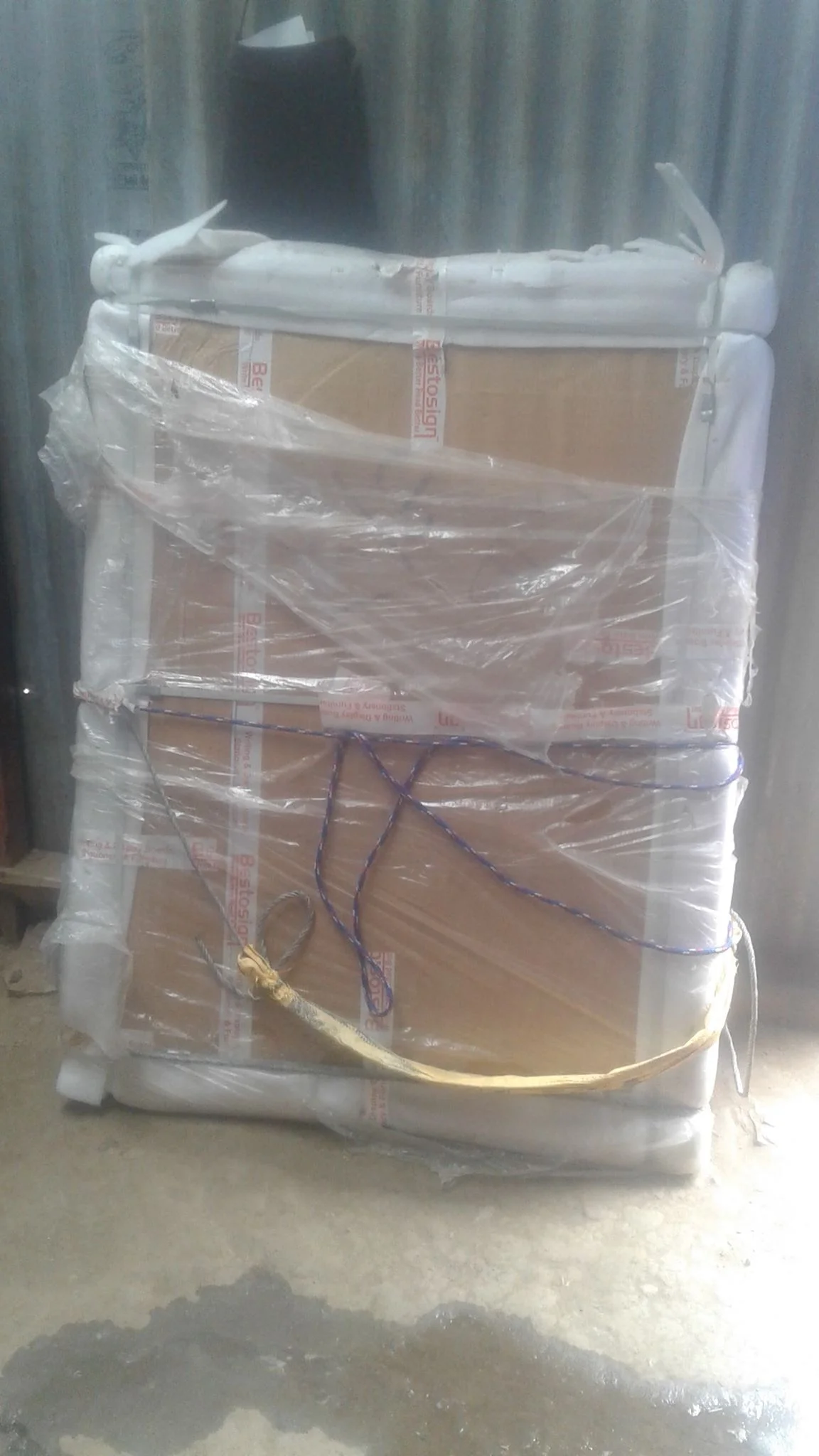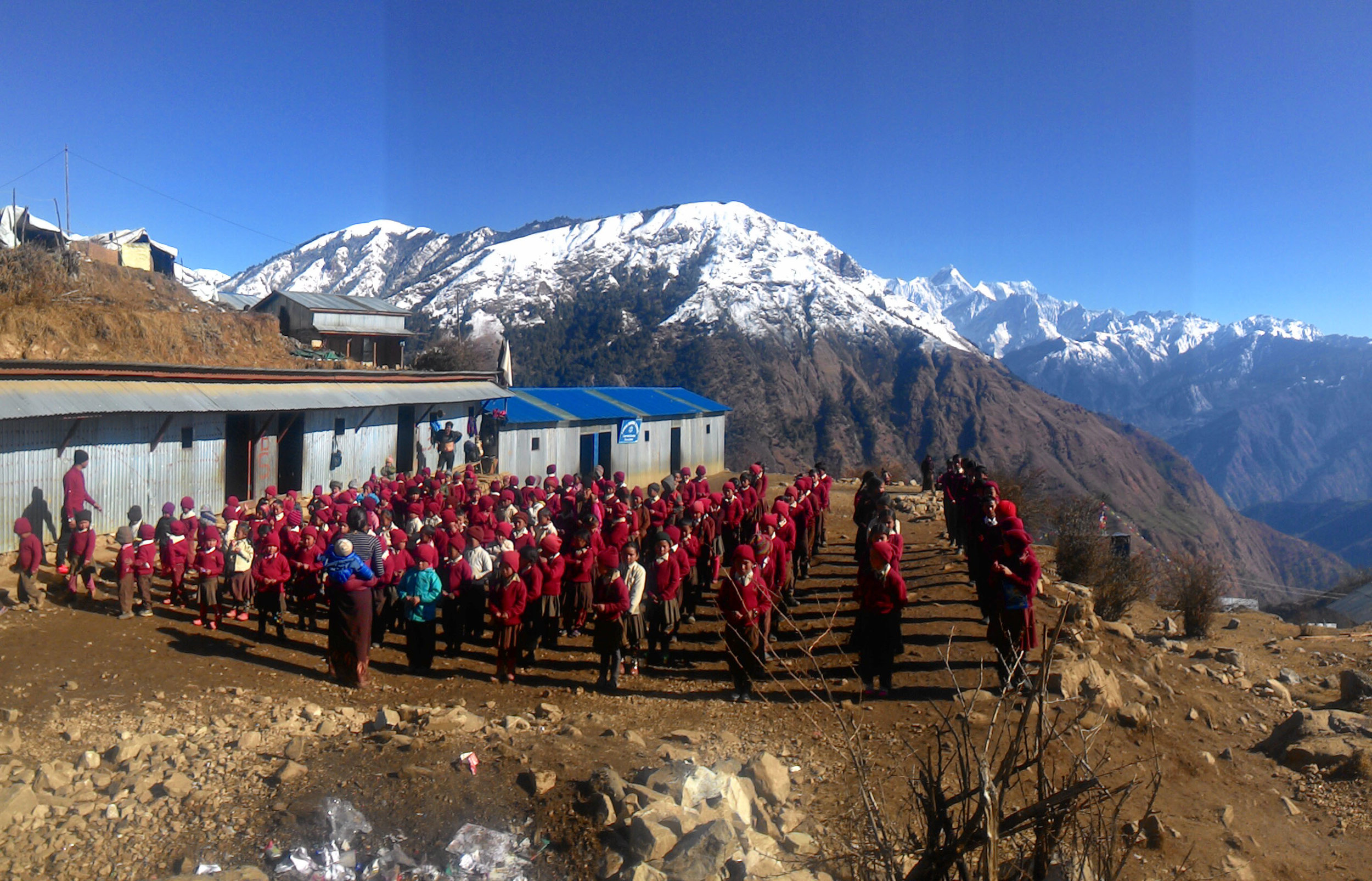Na het bezoek aan Nepal begin 2019 op de kalender te hebben gezet was het nu eindelijk zo ver. Thijs en Nanco hebben Micro-Care Nepal al vanaf de oprichting begin 2016 jaarlijks financieel gesteund. Nu hadden zij eindelijk de mogelijkheid de projecten te bezoek en zelf ook een praktische bijdrage te leveren.
First-Aid Classes + Support with Education material to Gorkha Shools
December, 2019
Aid Trip to Gorkha district with 3 volunteers and our board member Wilfried van den Boorn.
Two student to become doctor, Georgina and Anna, have been teaching First-Aid classes on 4 schools from class 5 to 8. Volunteer Sabine has been teaching a new class about entrepreneur skills to clkass 7 and 8 and 6 and 7 at in total 4 schools.
We want to thank Sabine, Georgina and Anna for their great work and collaboration on this trip and during the intensive preparations!
Bekijk onderstaand het fotoverslag.
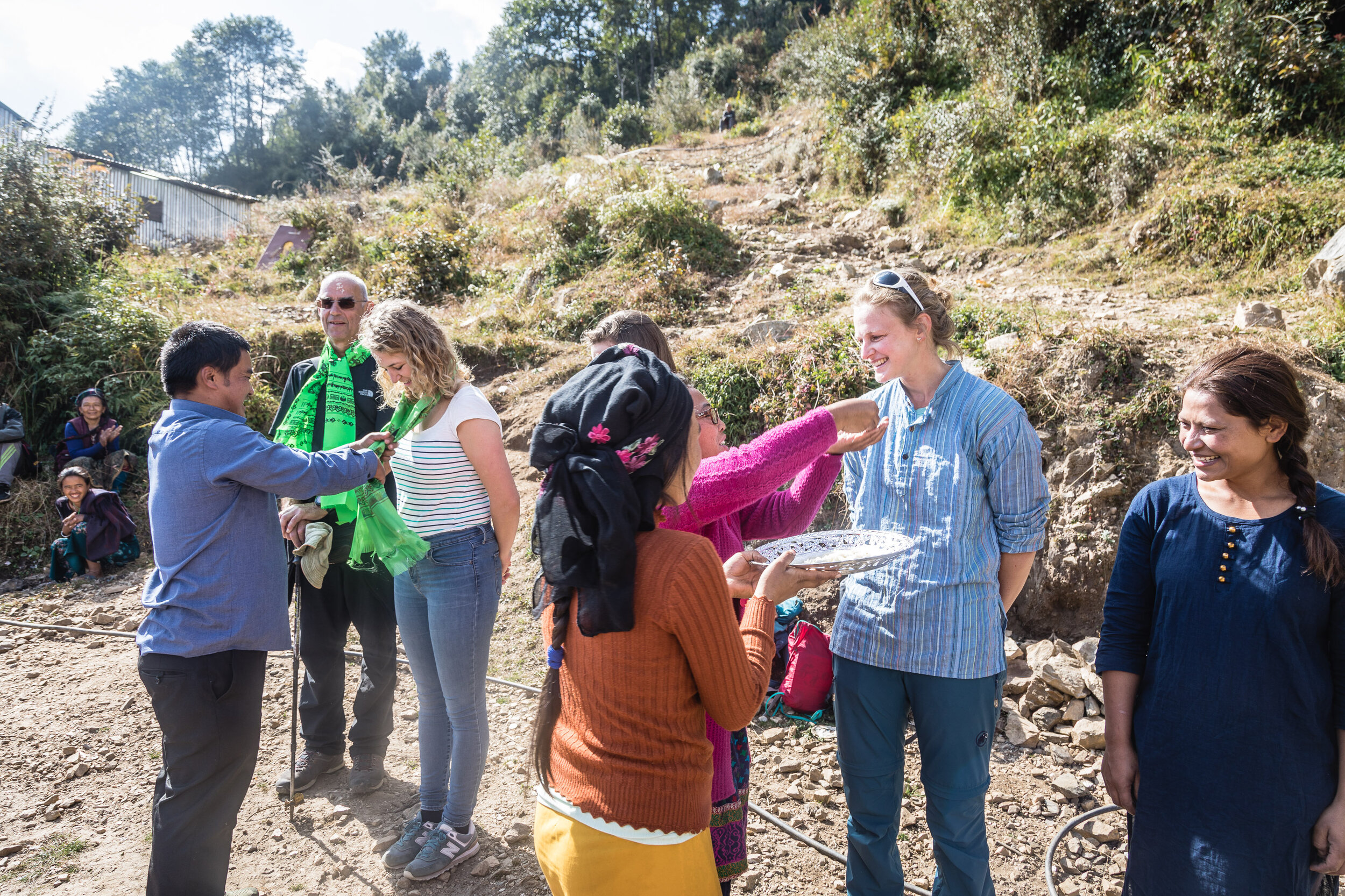
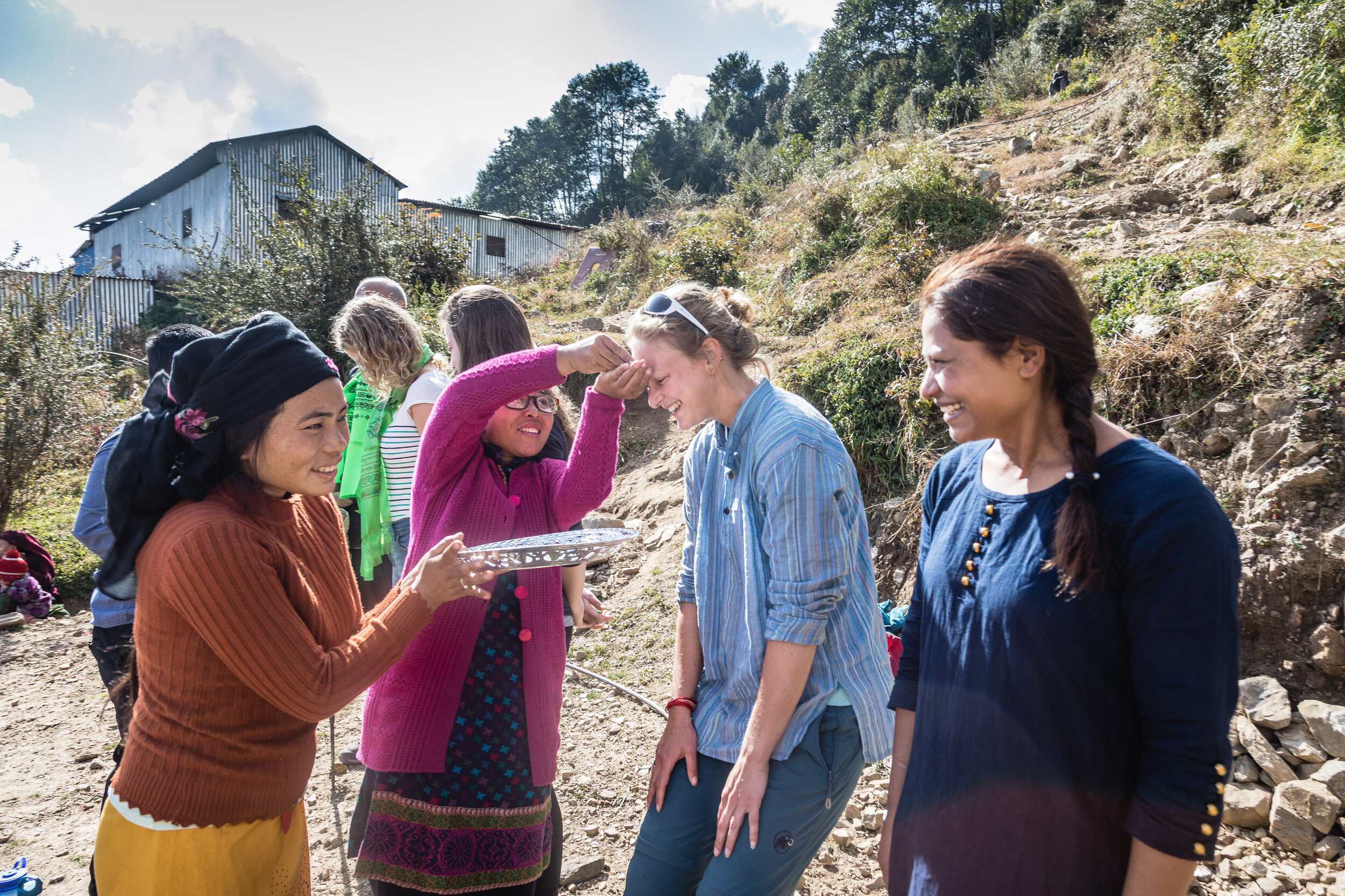

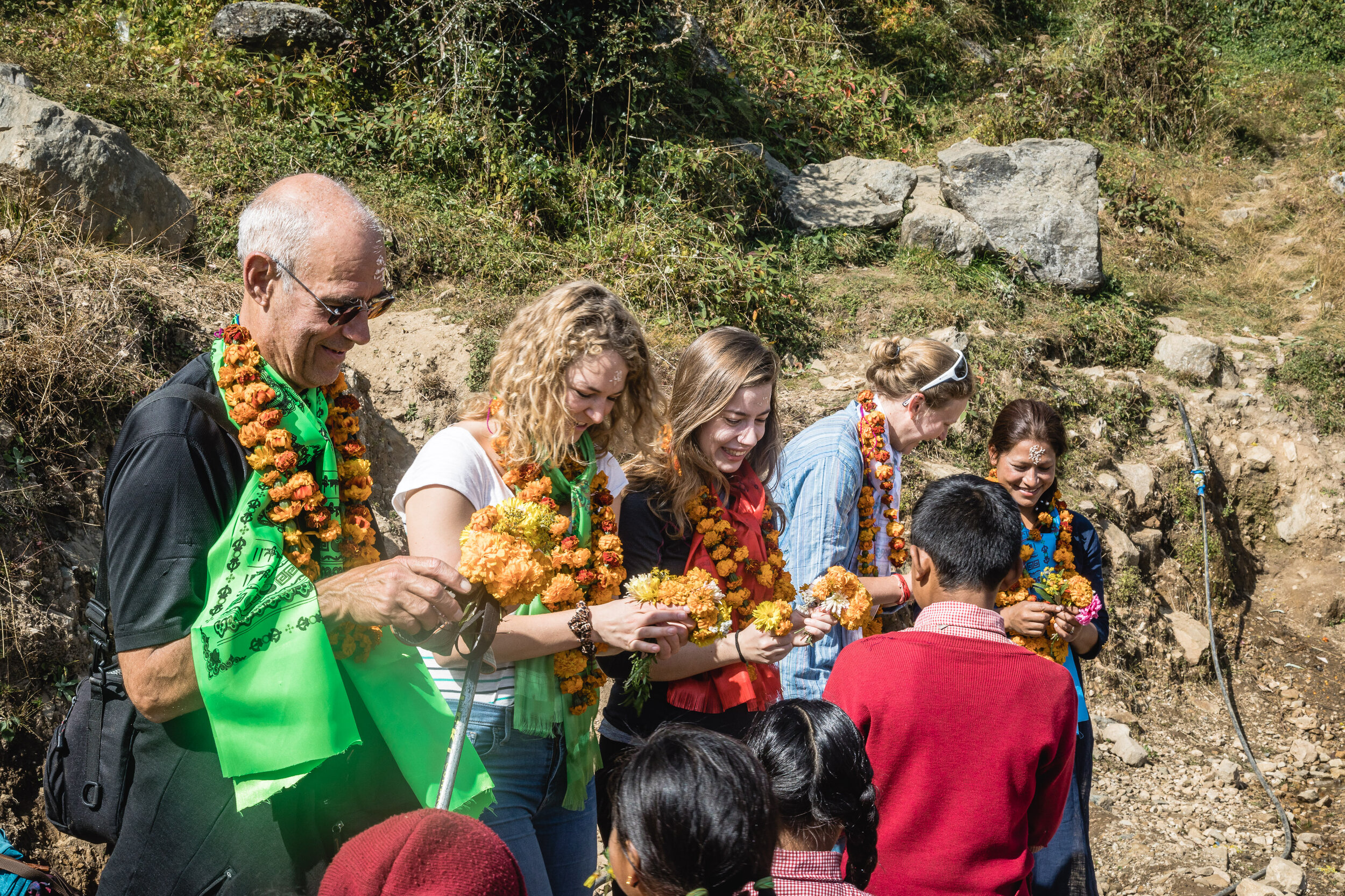

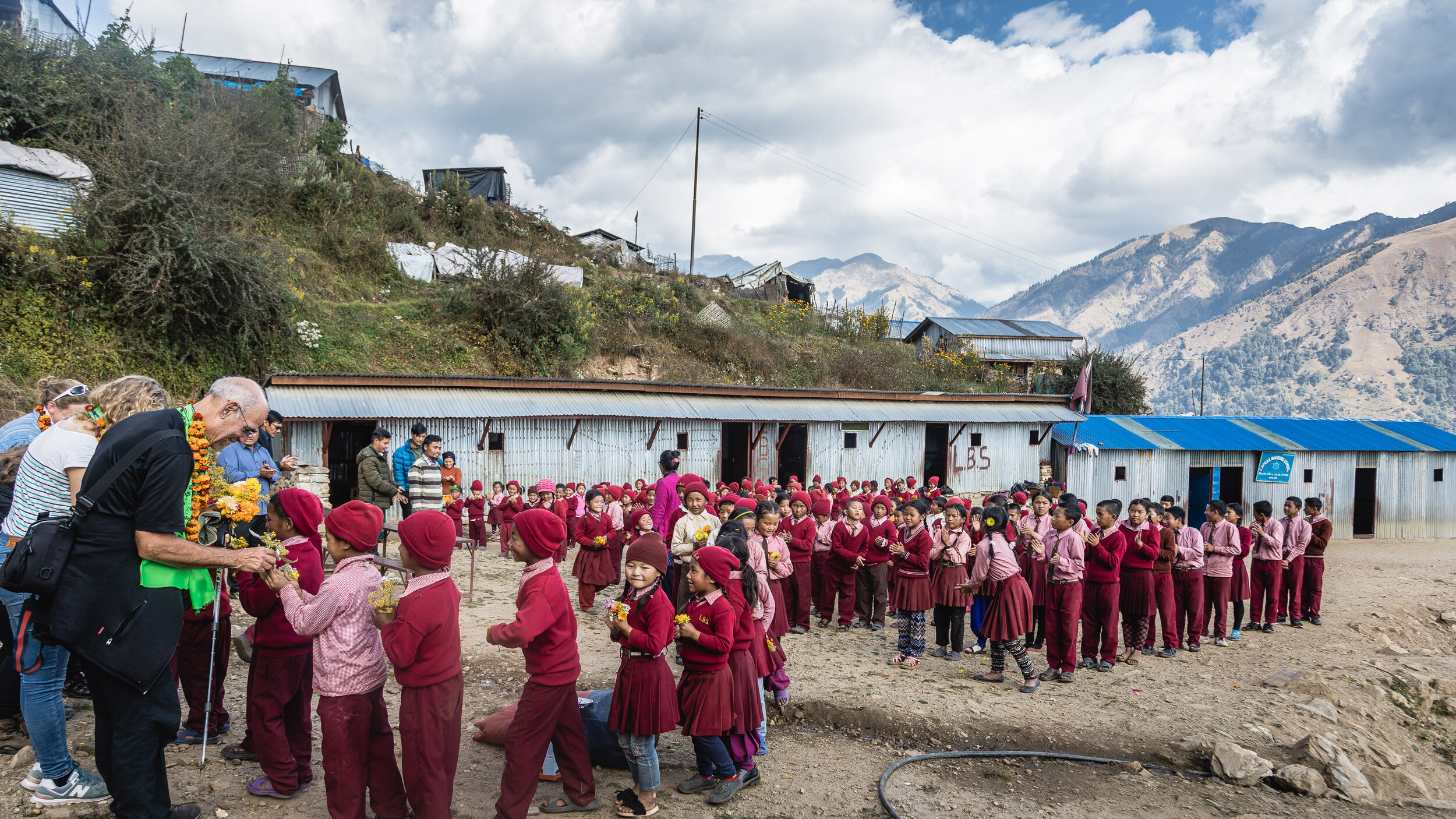

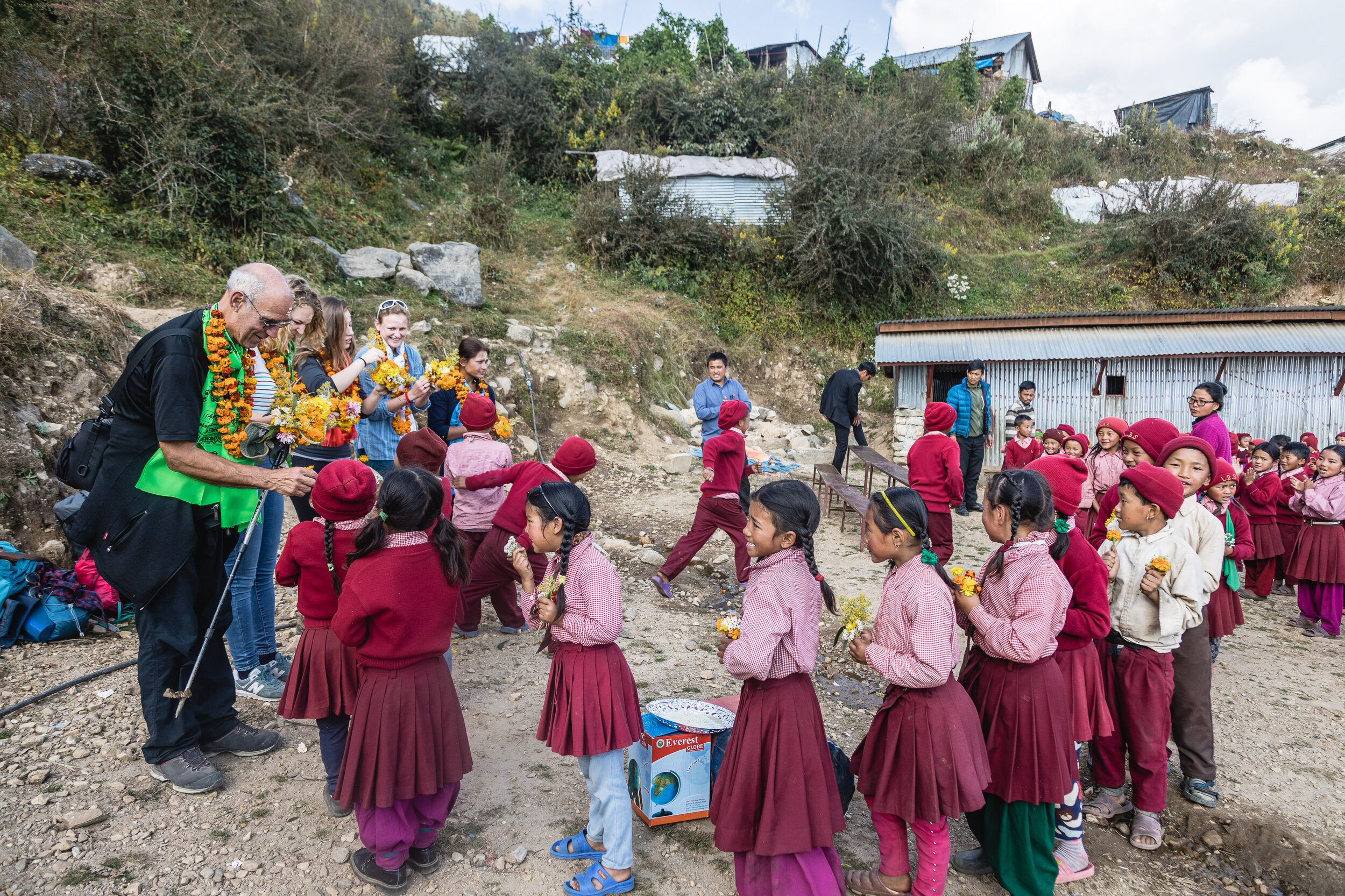

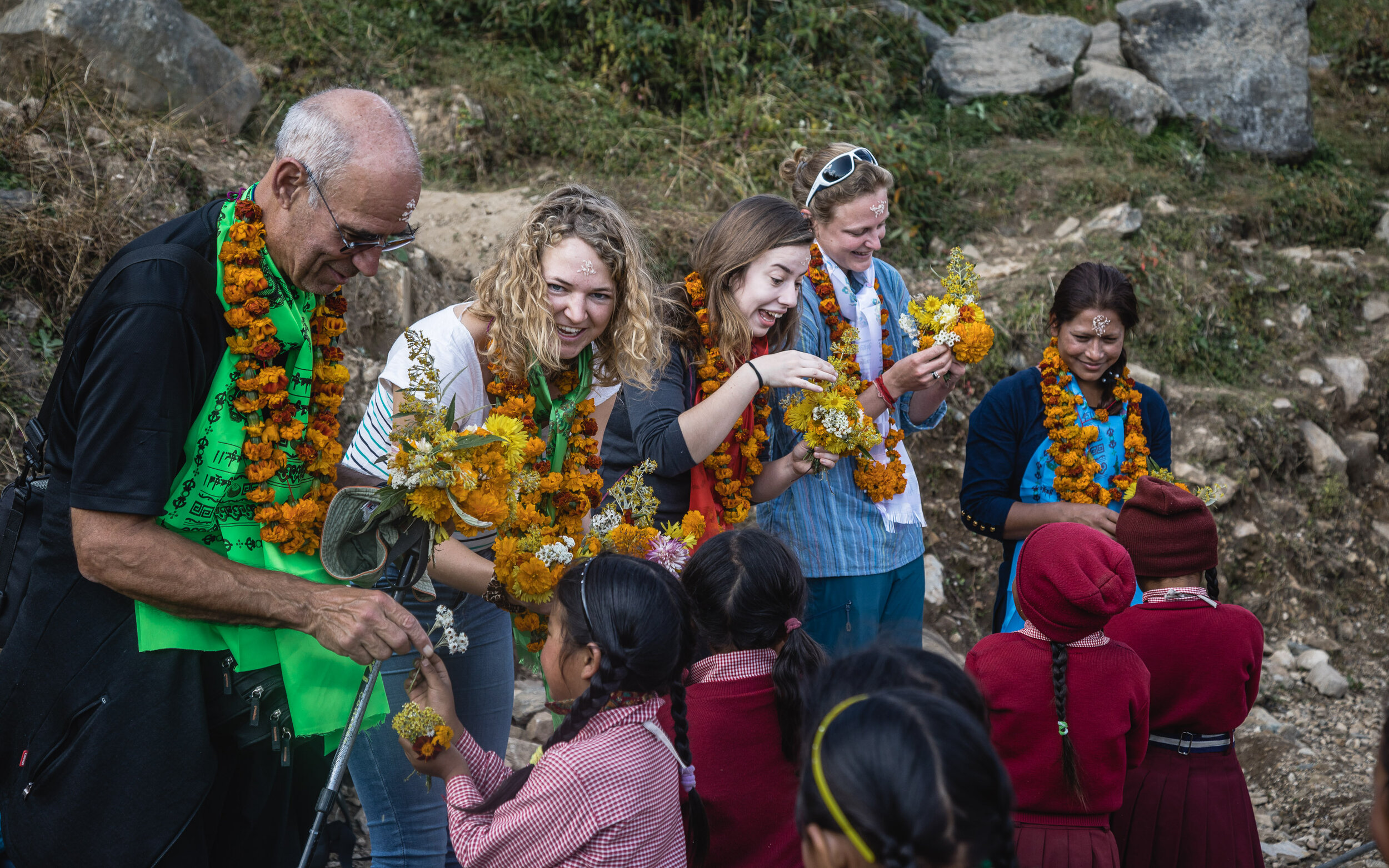
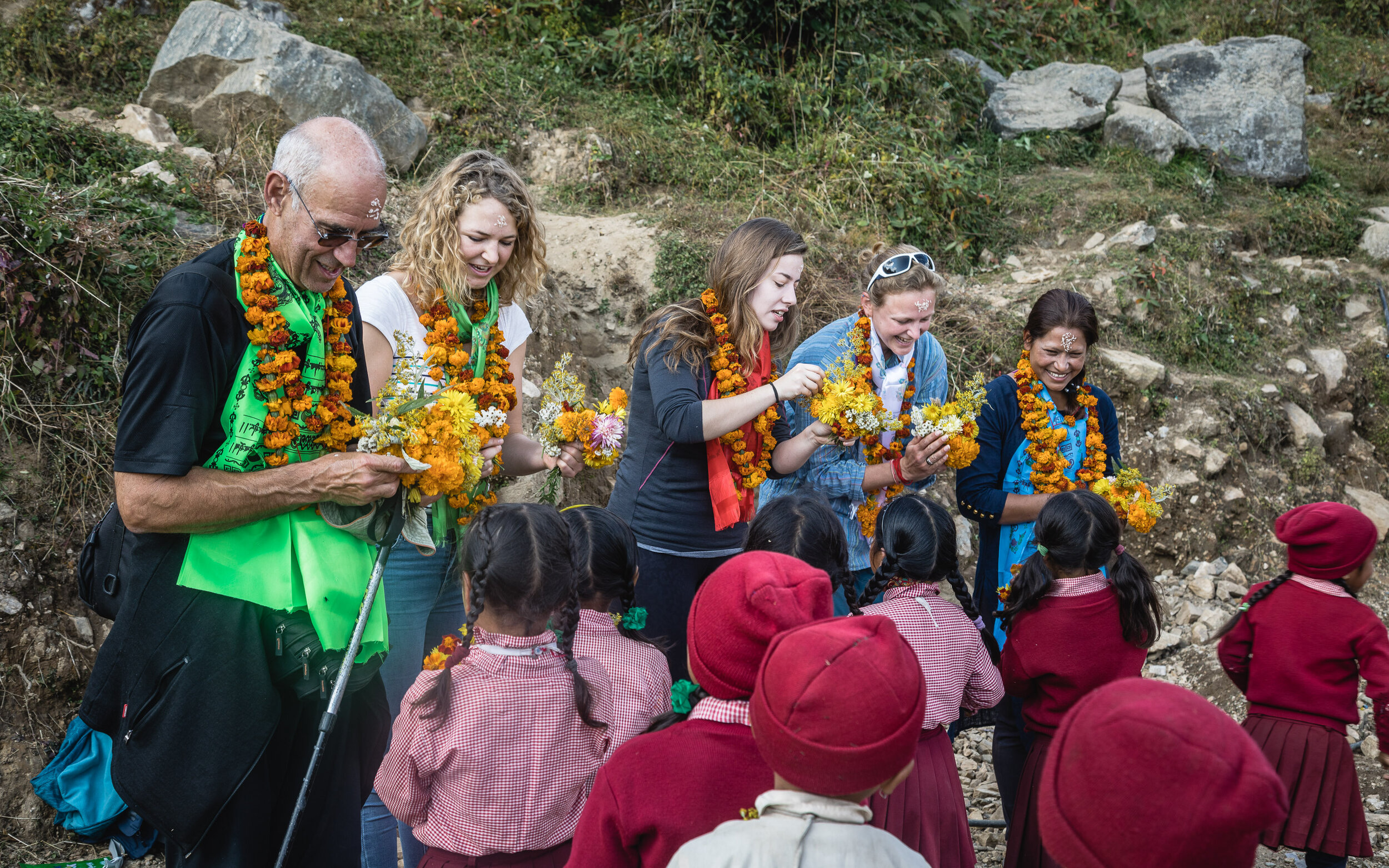

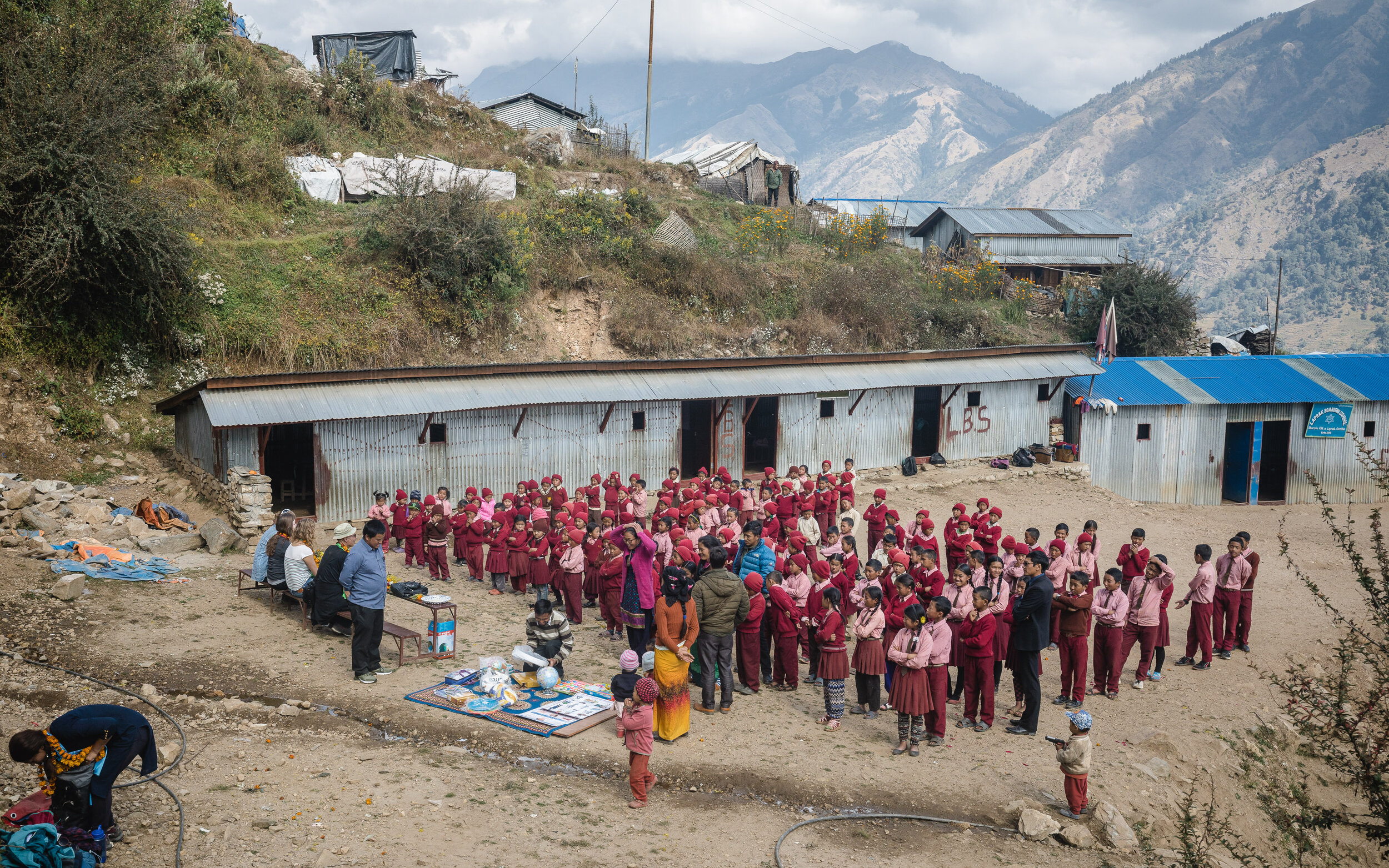


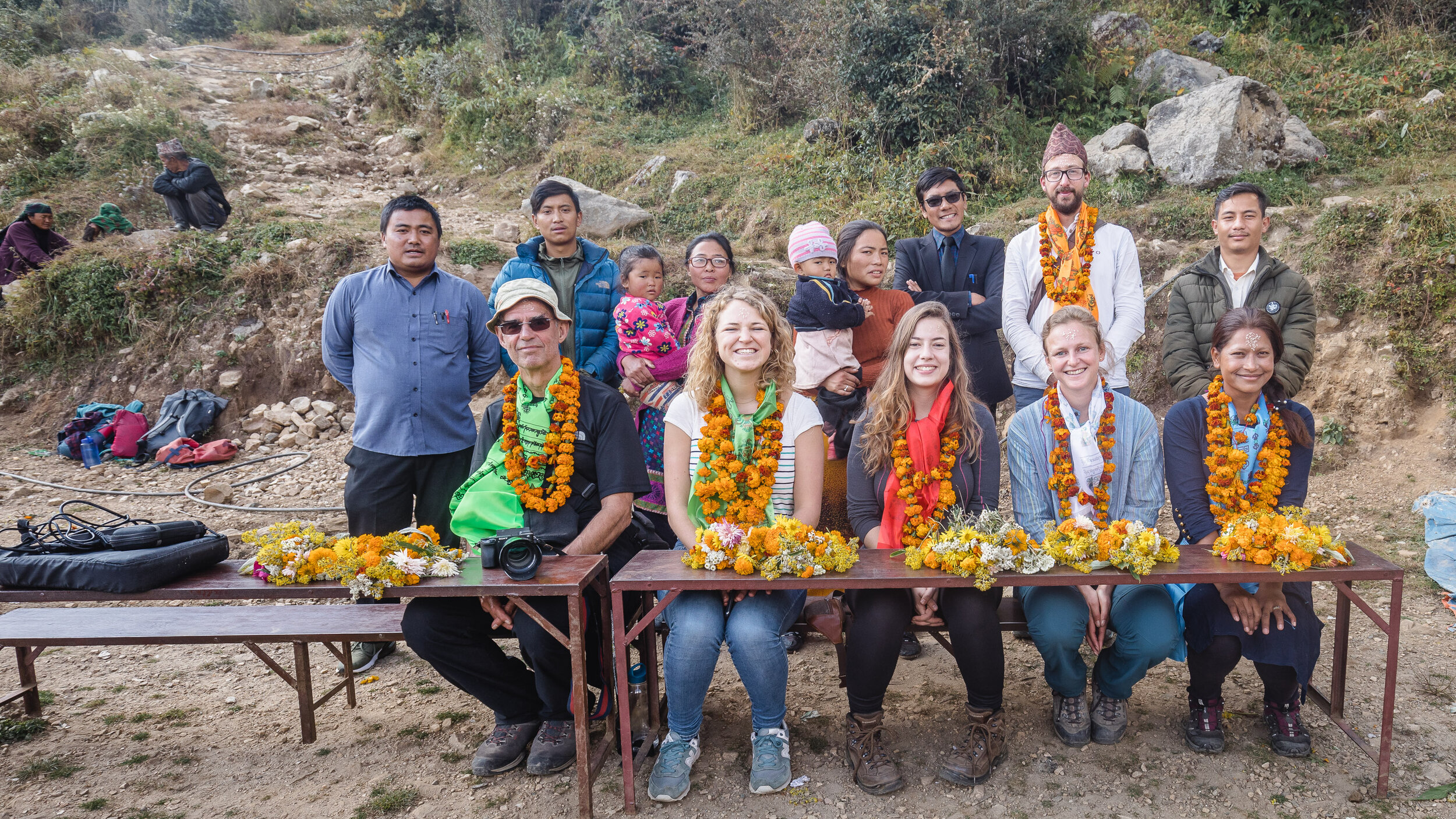




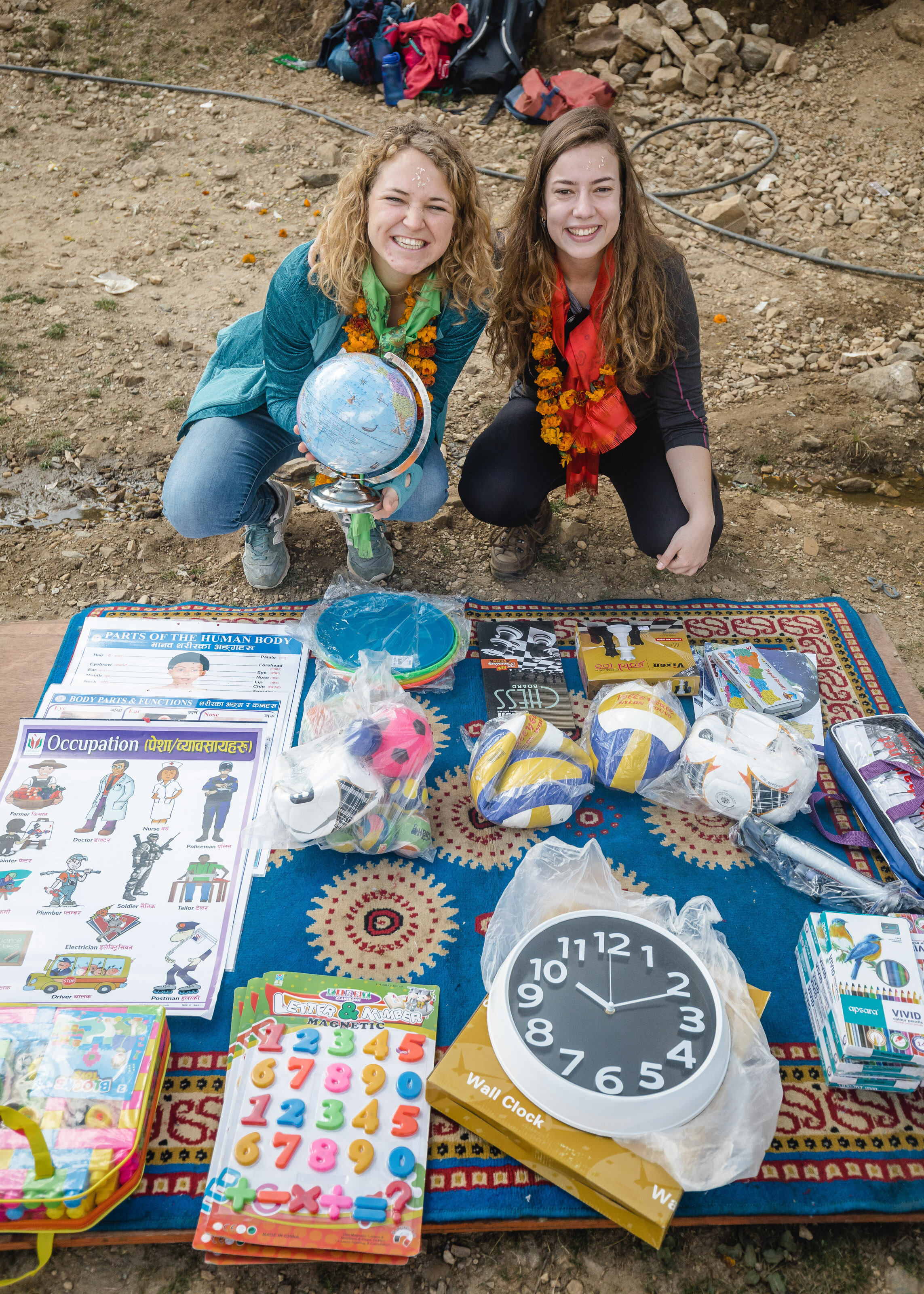


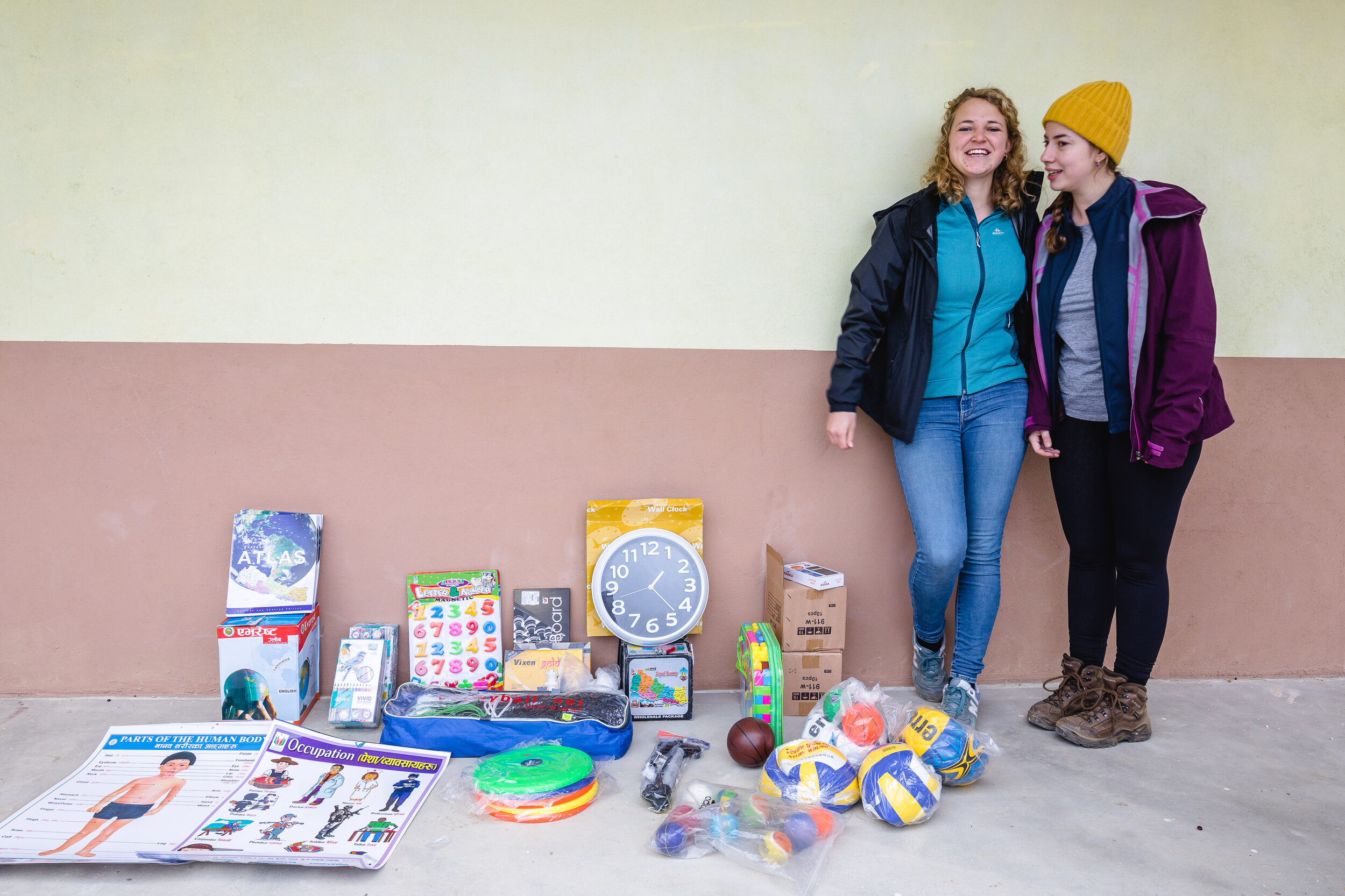
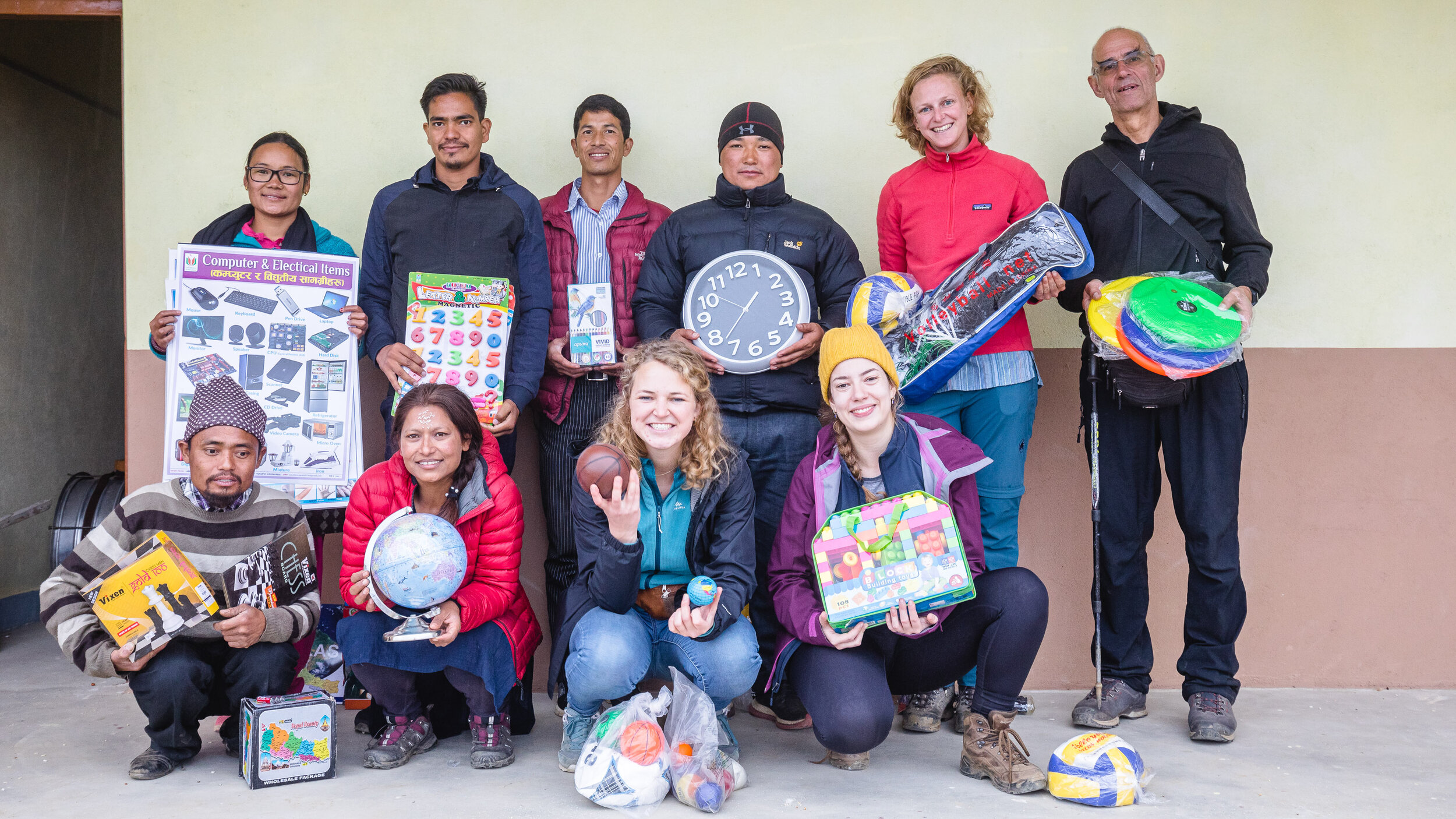
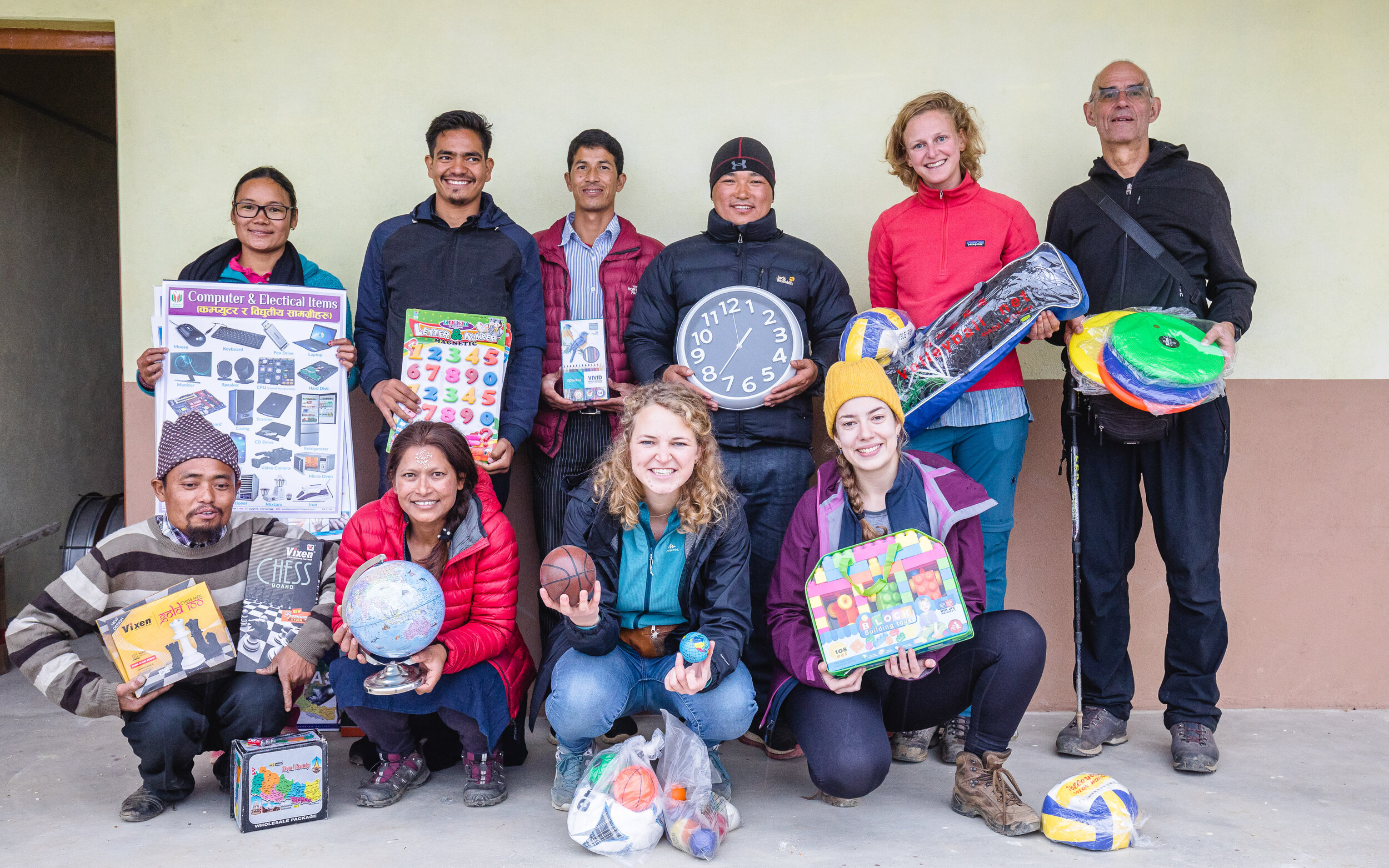
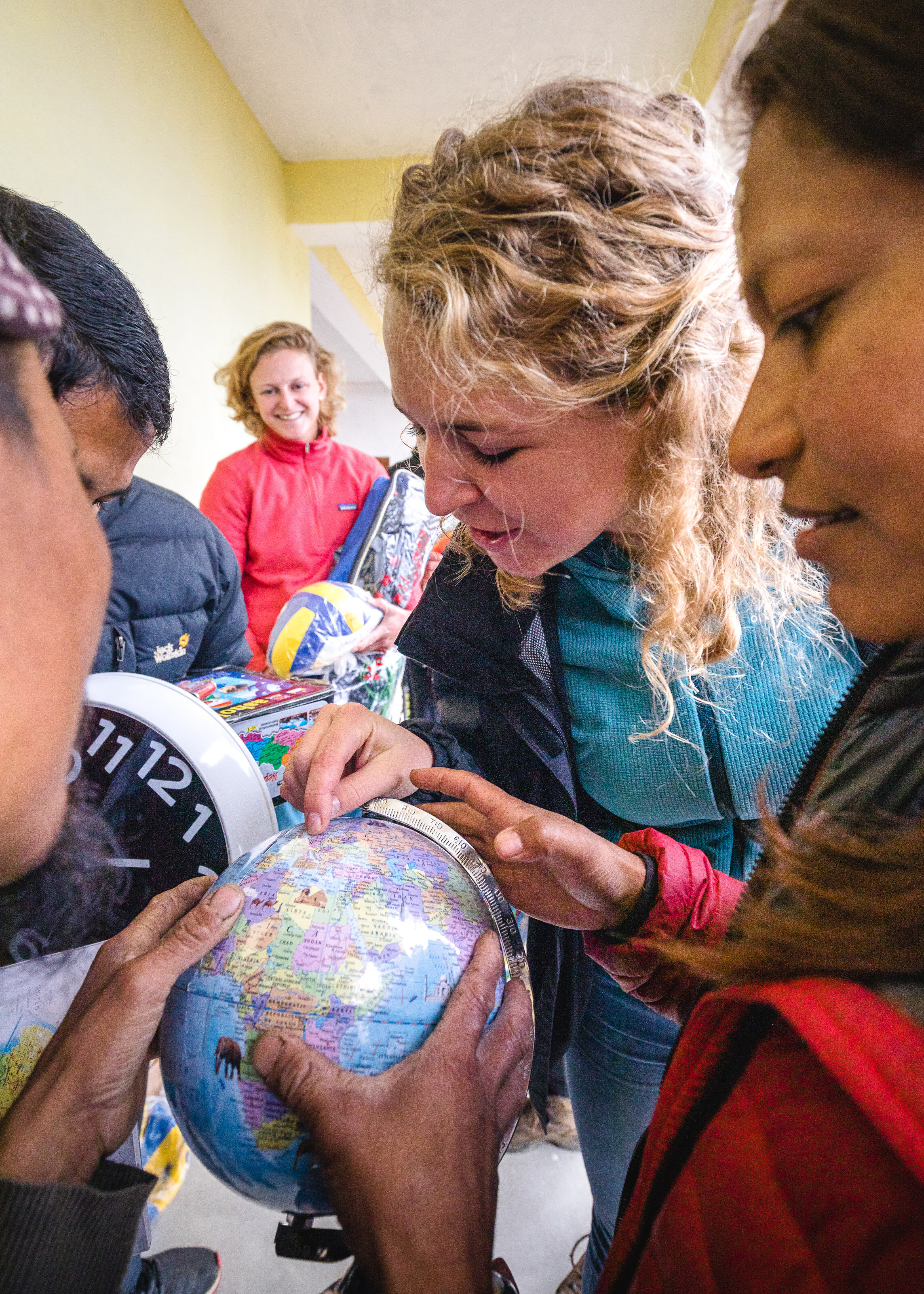


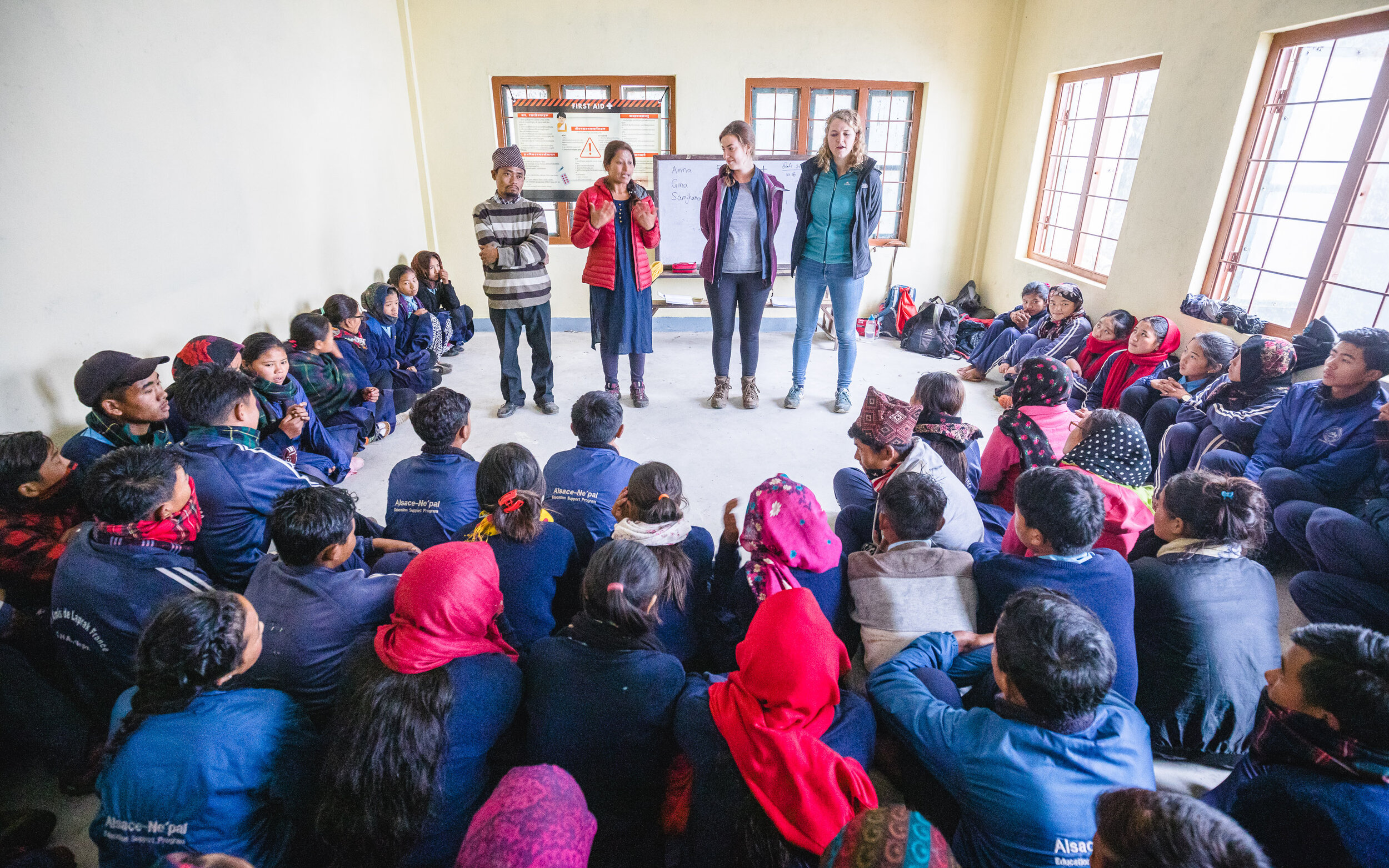


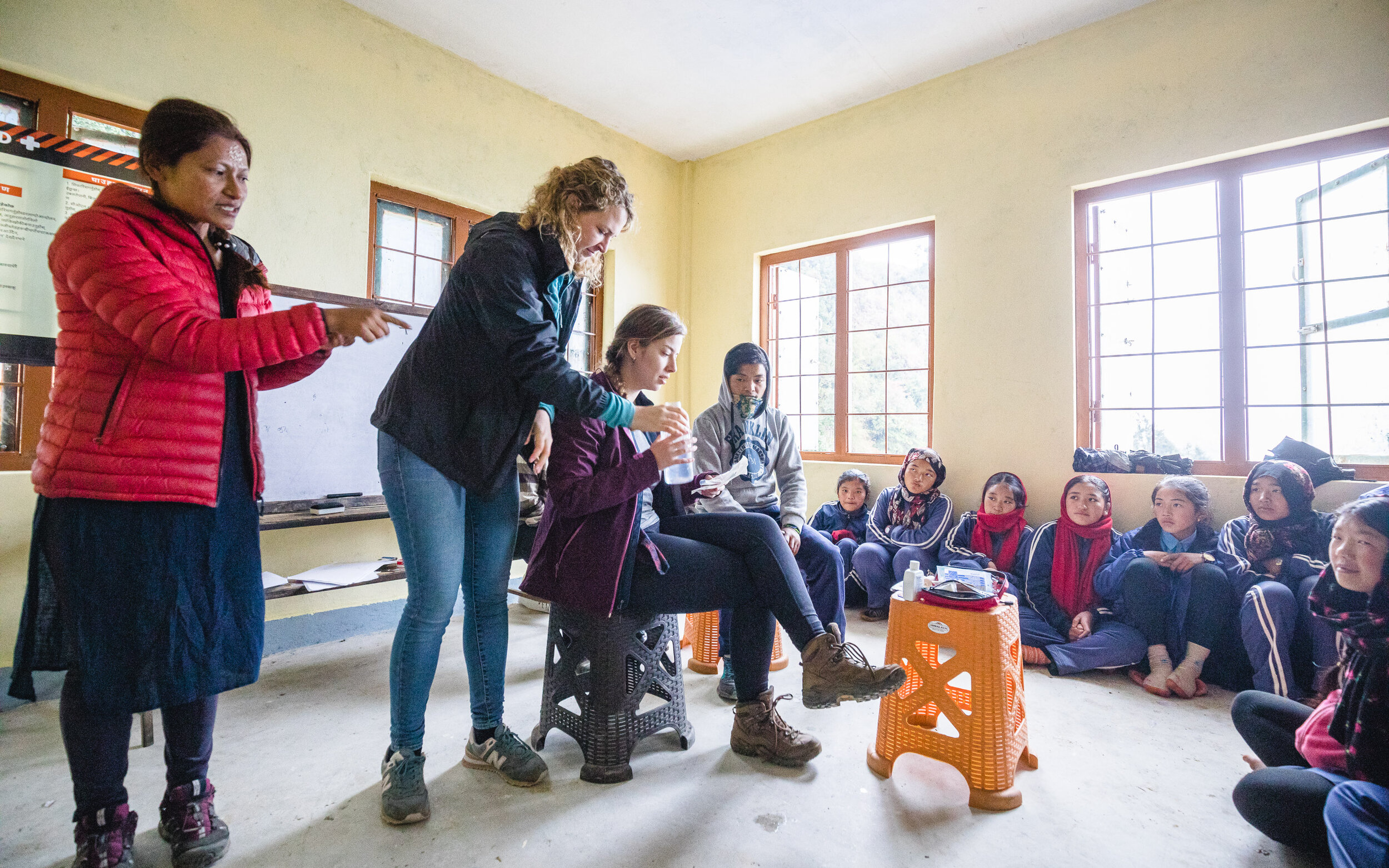



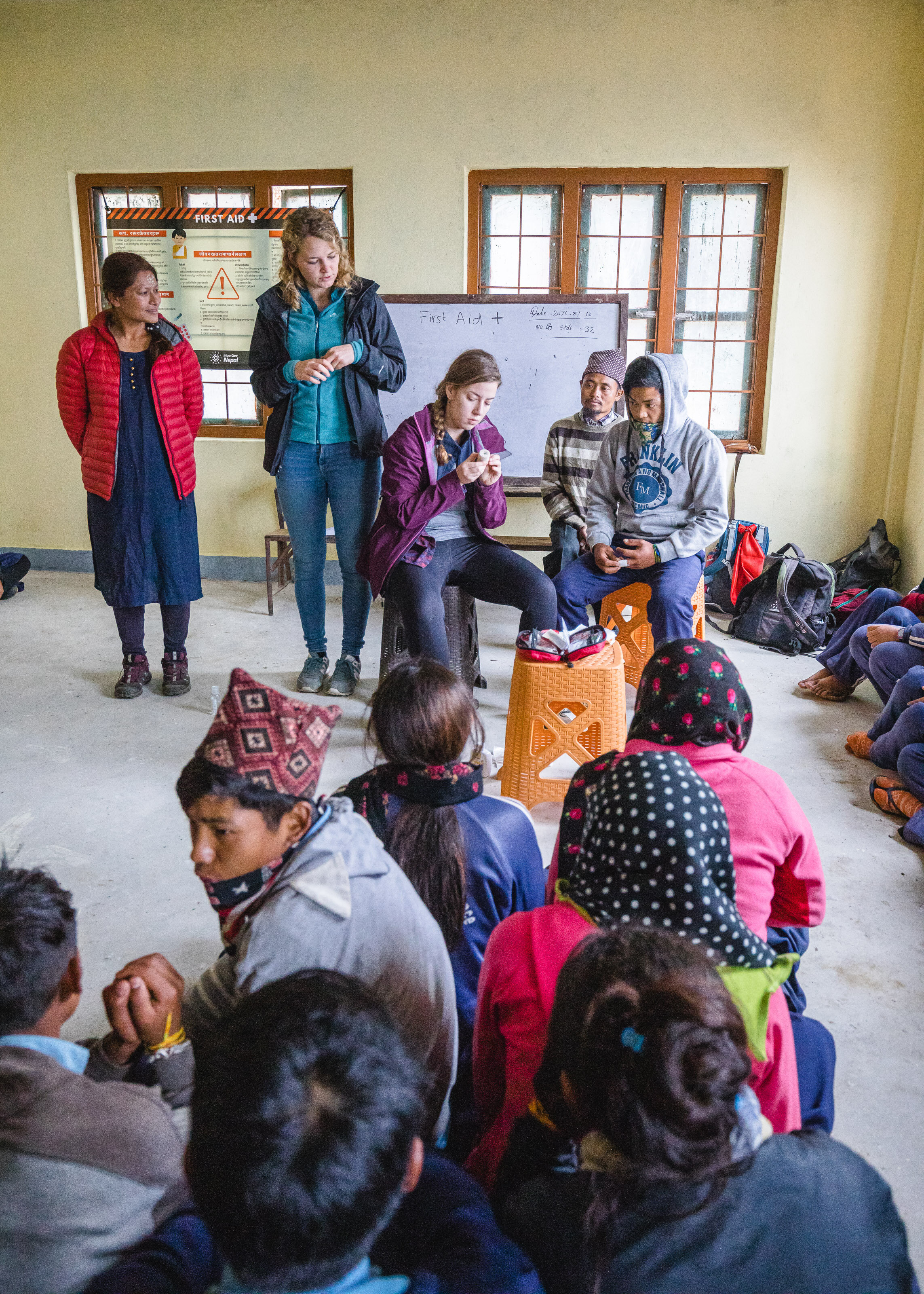





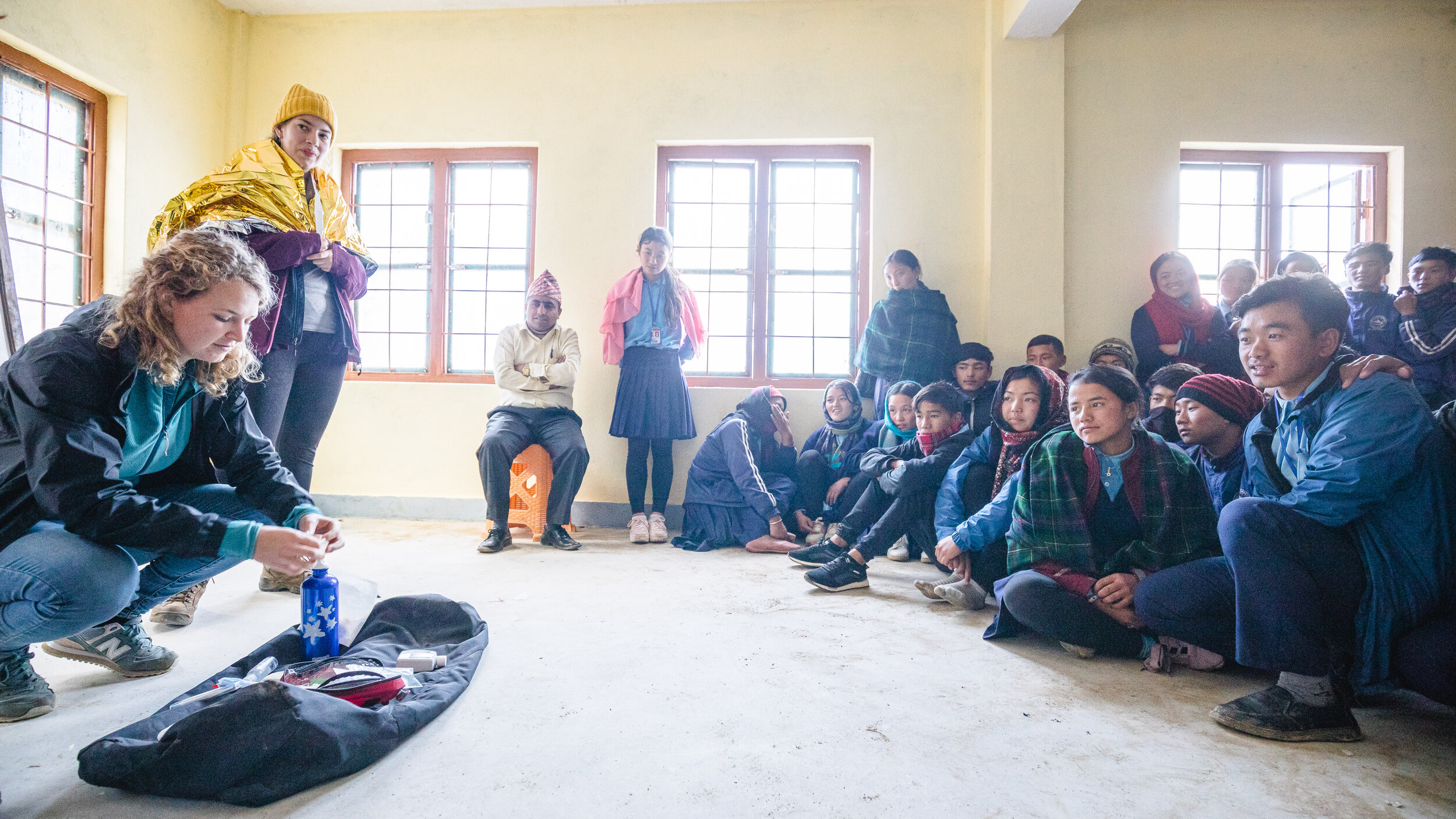
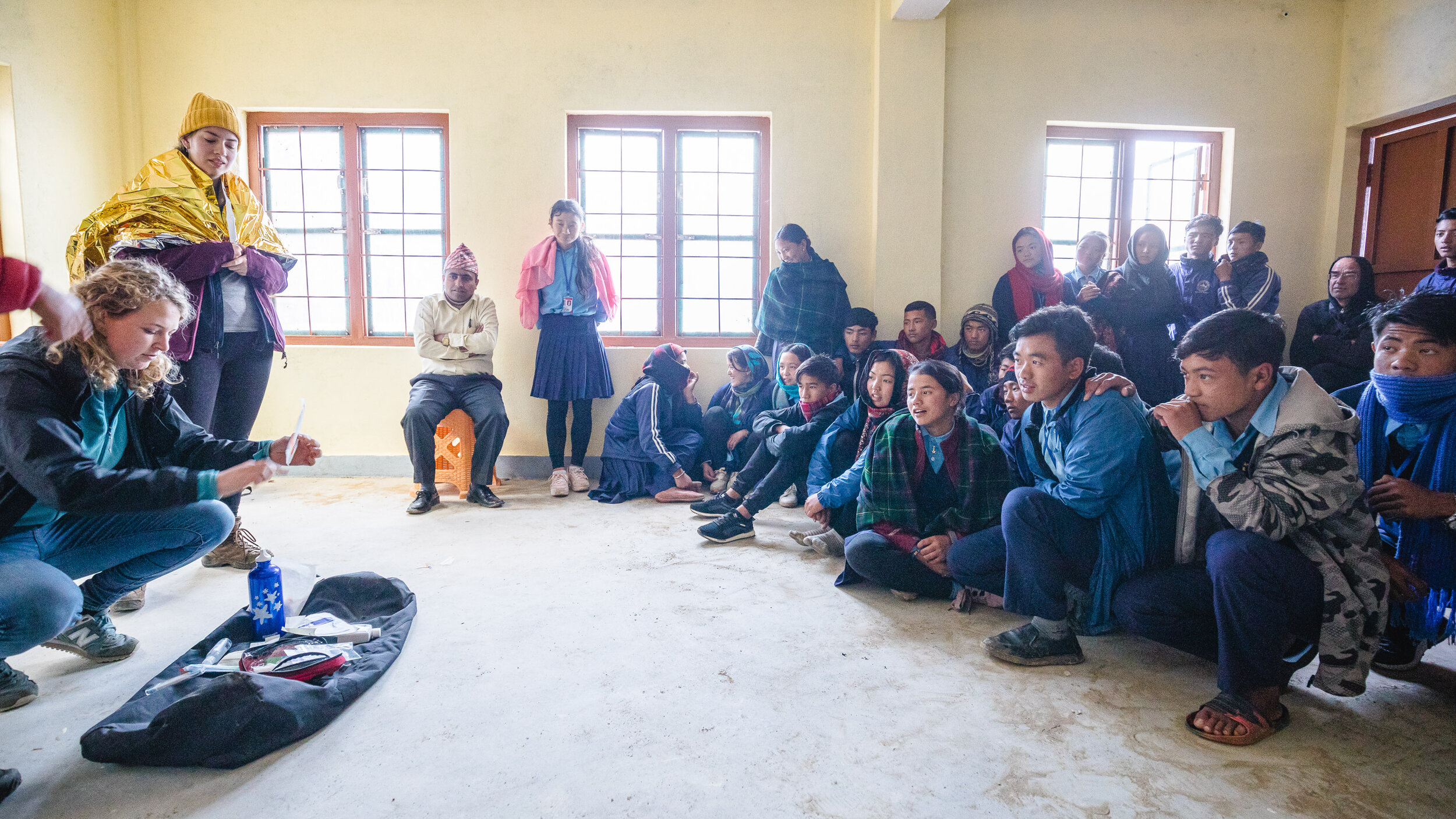

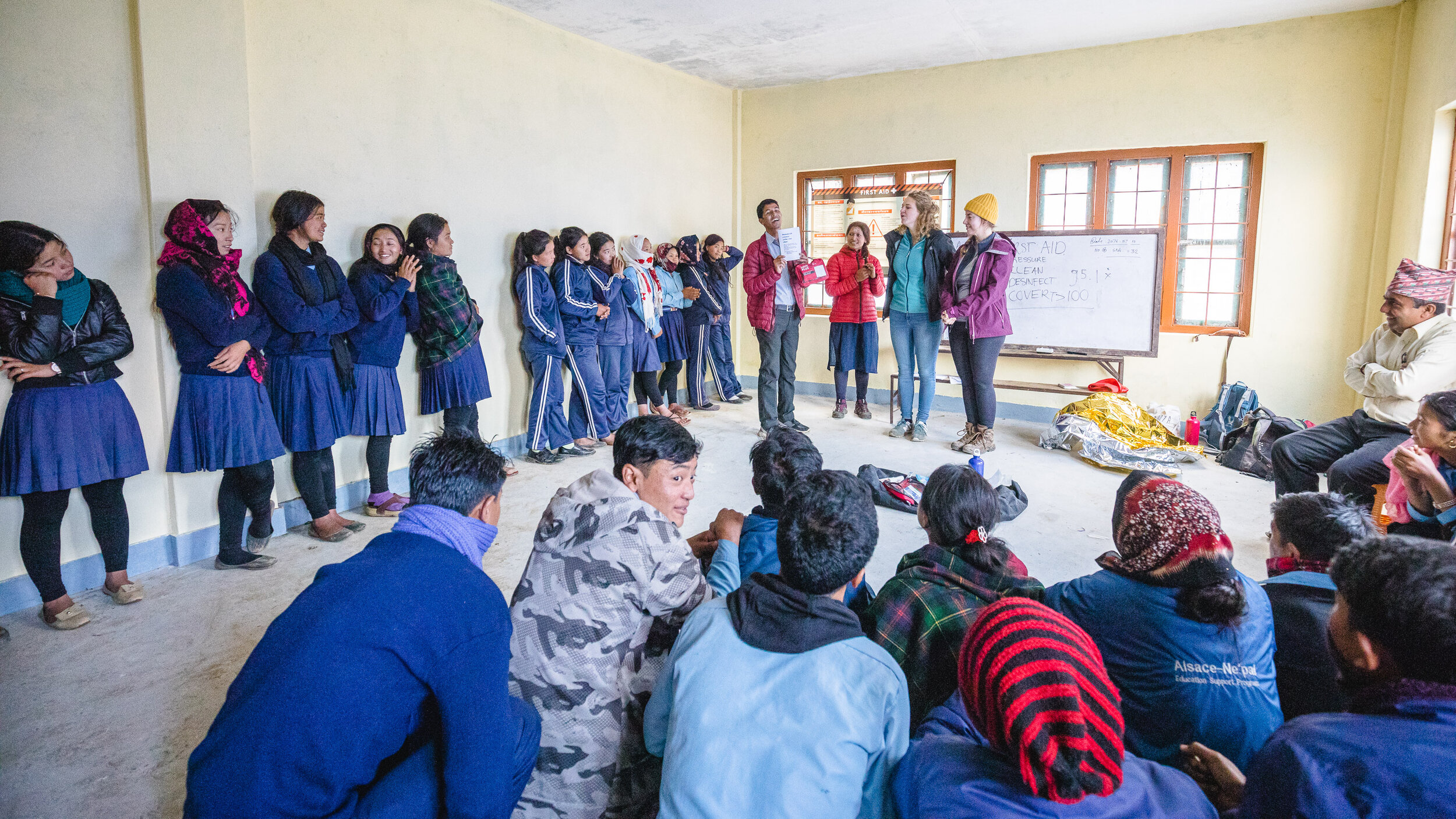


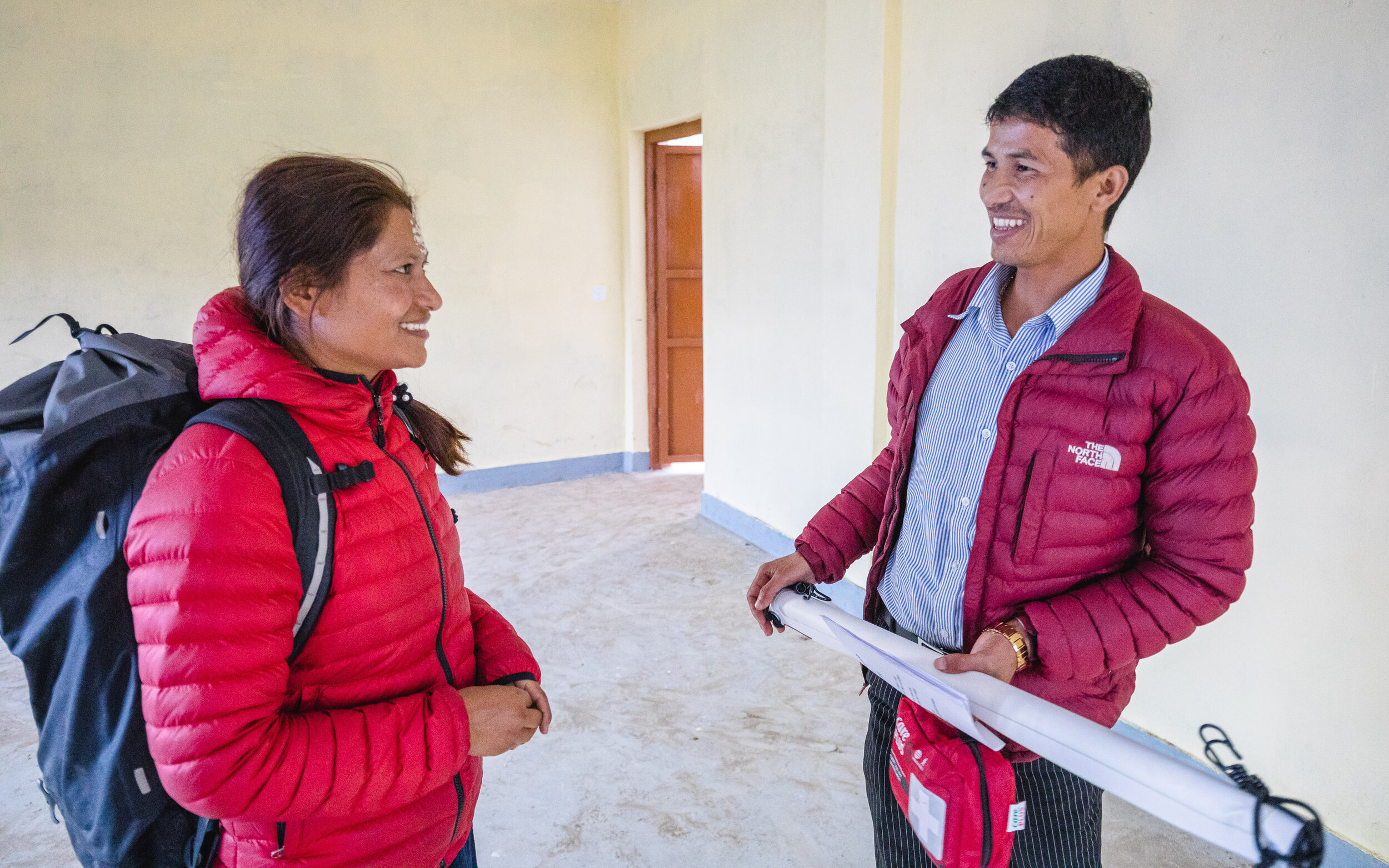

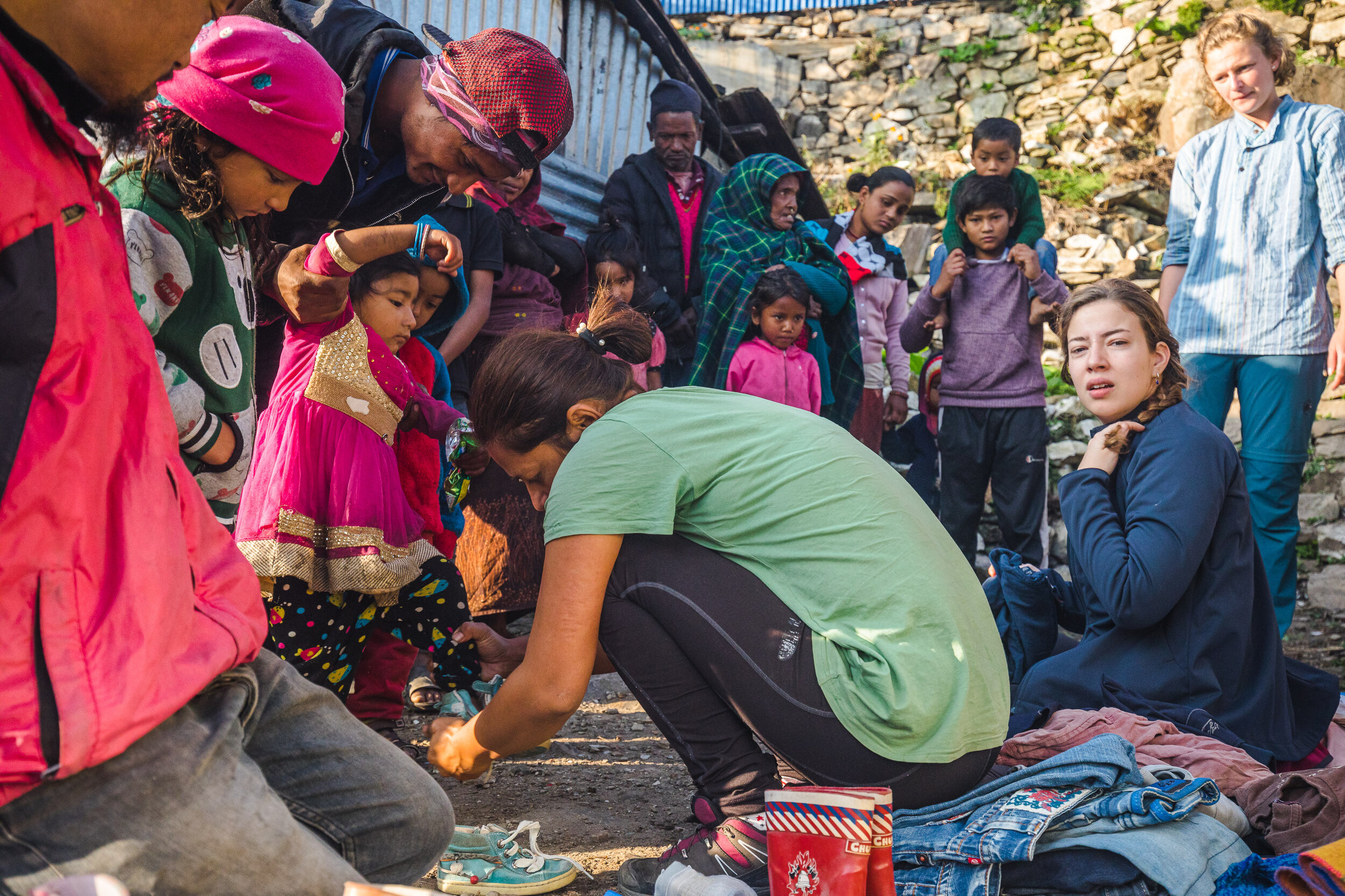
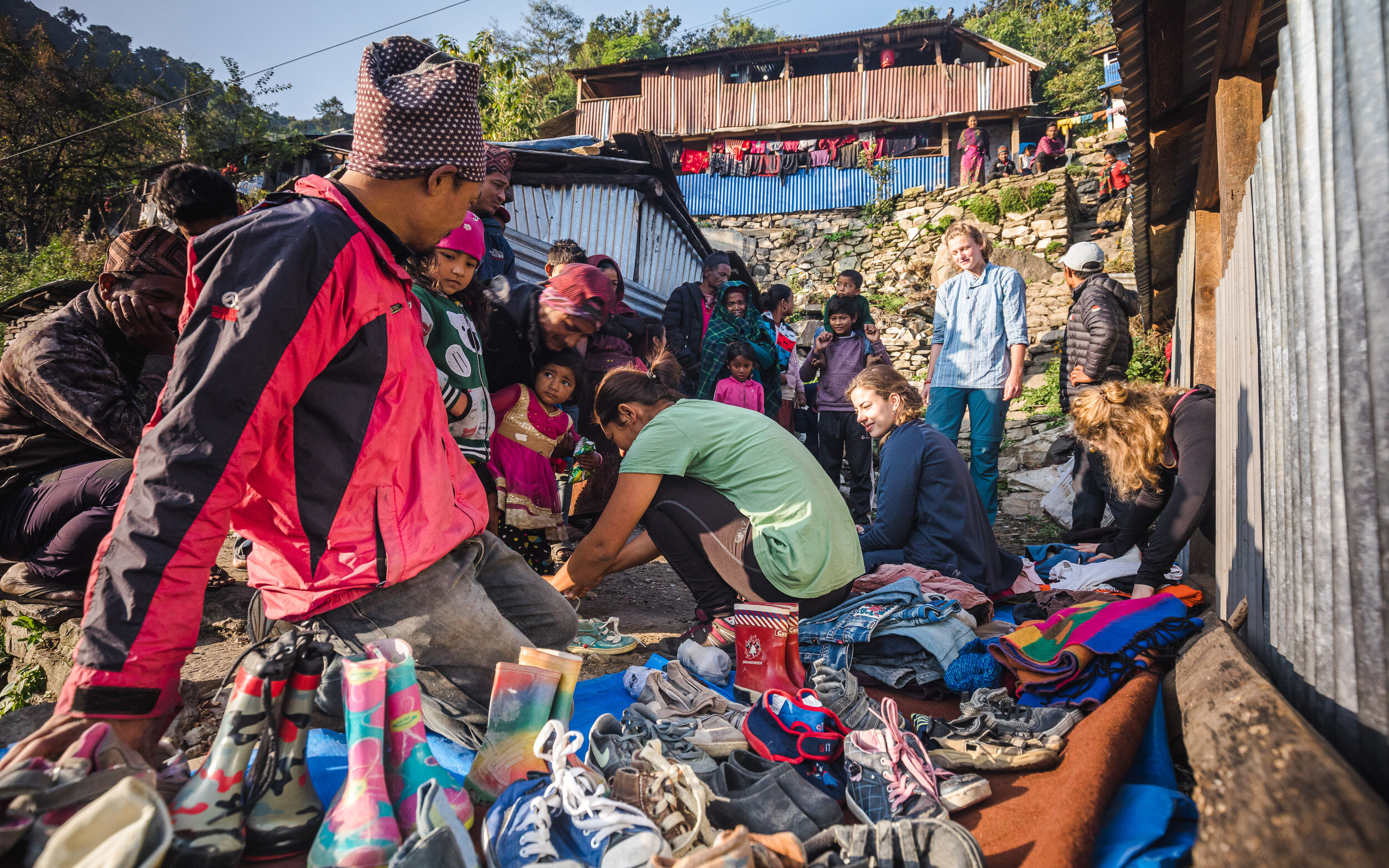

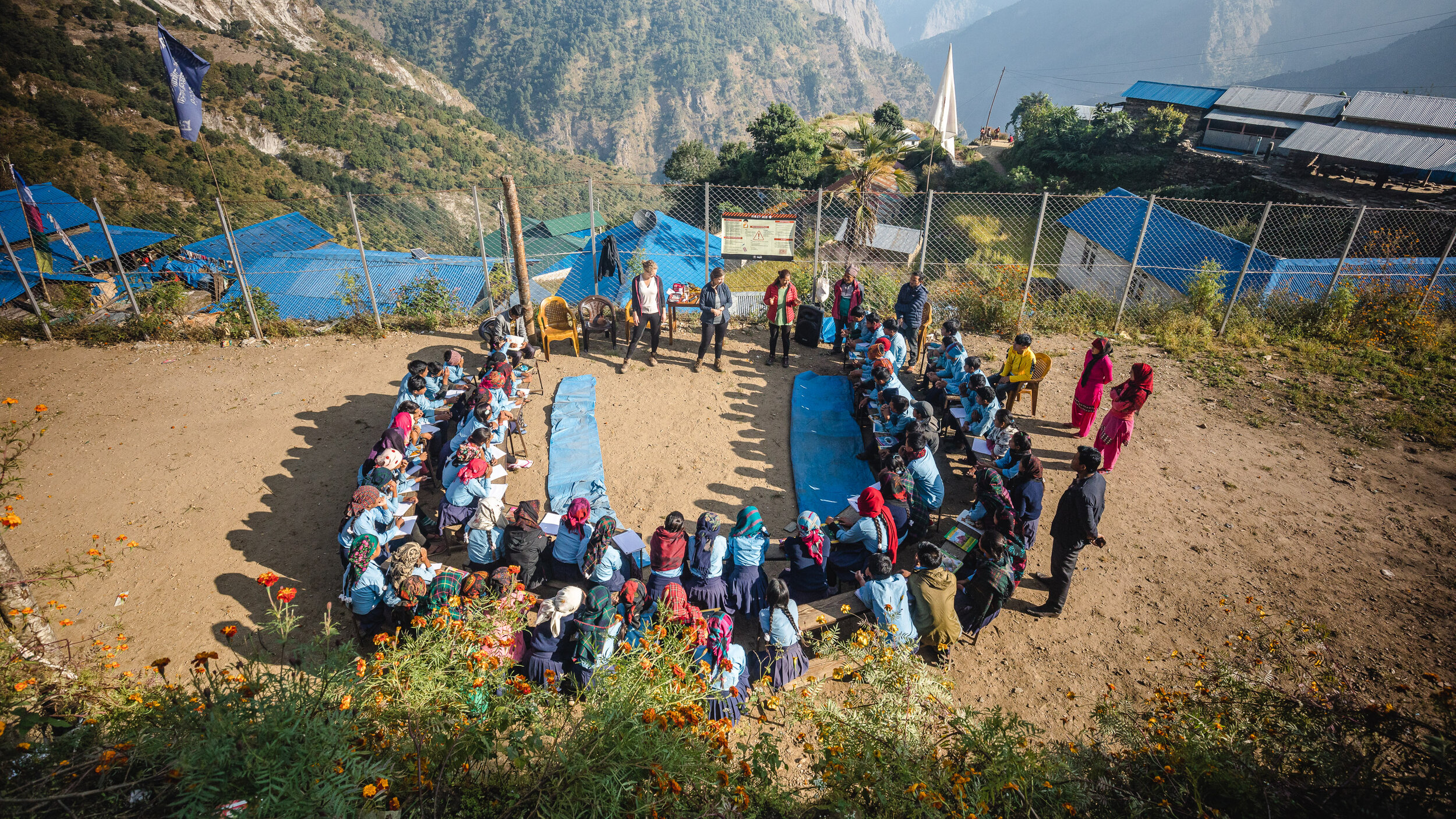
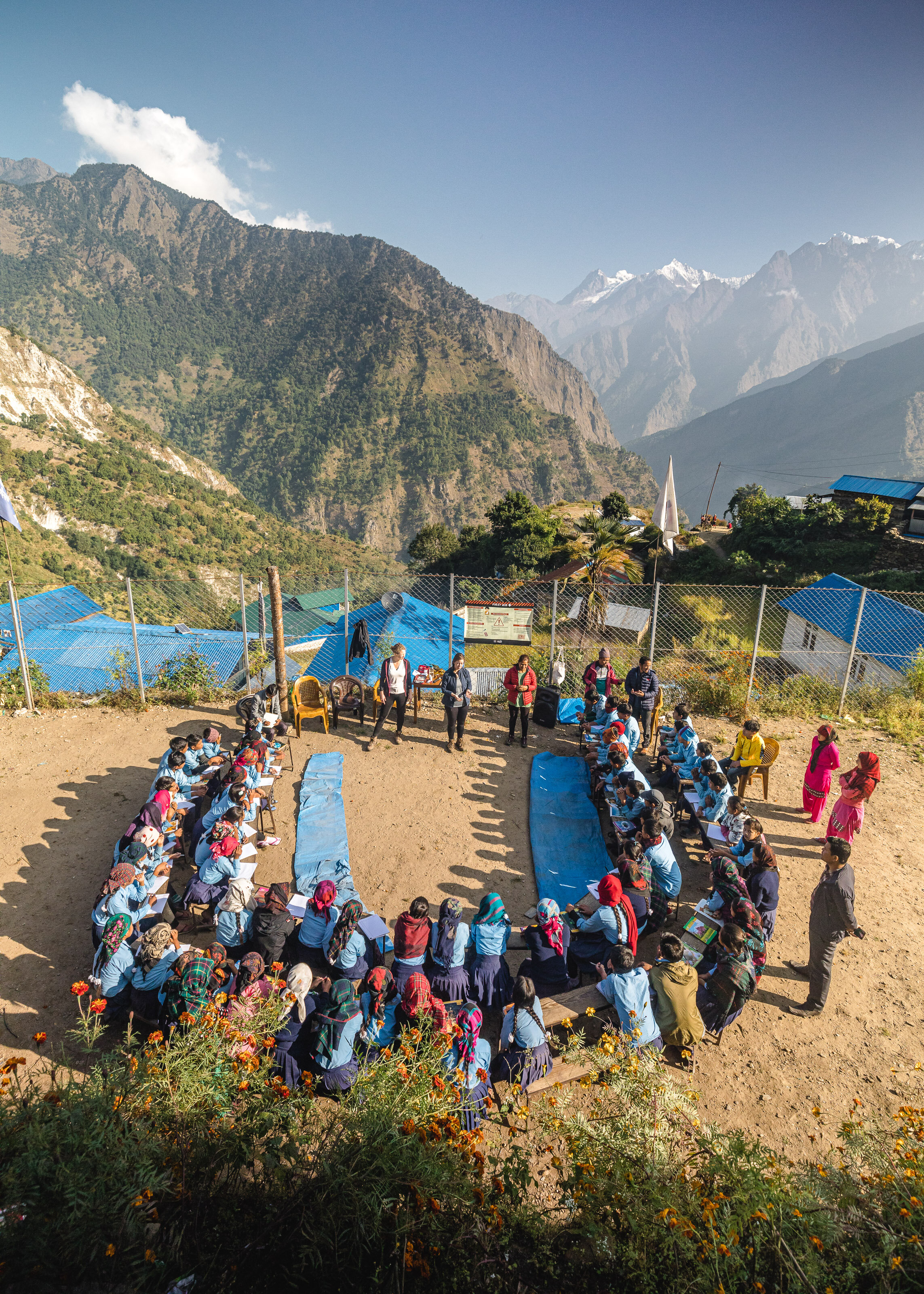
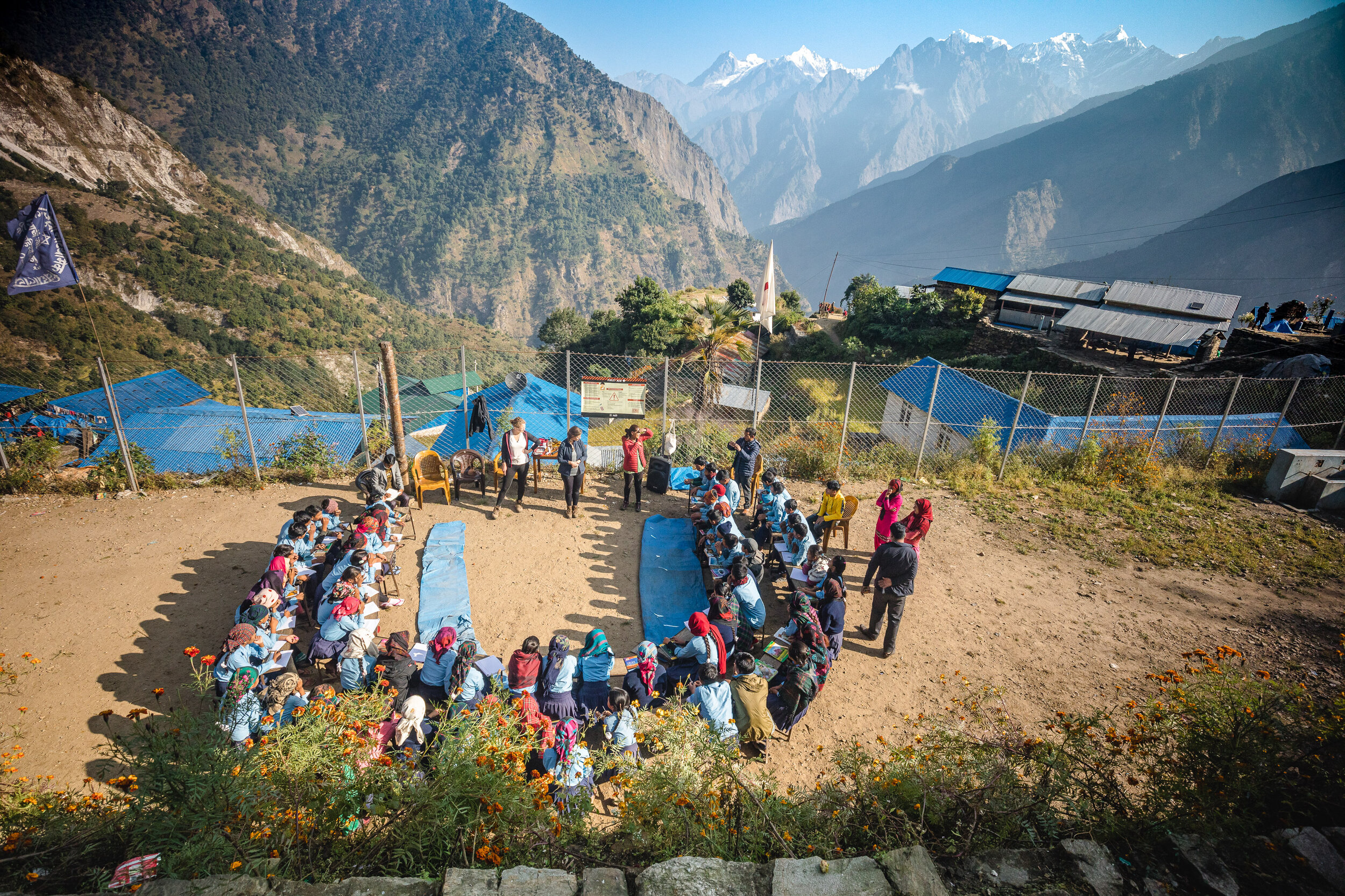
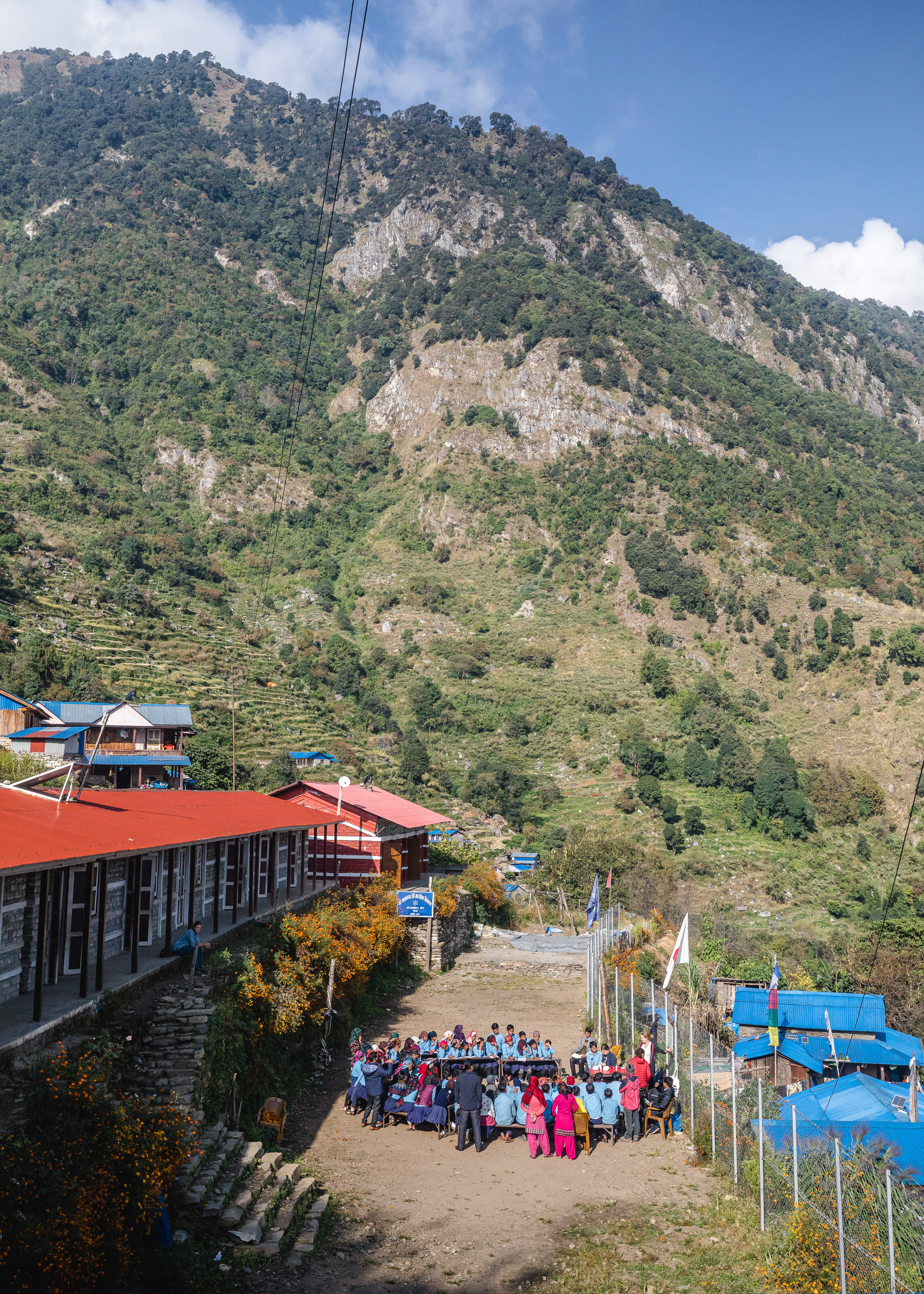
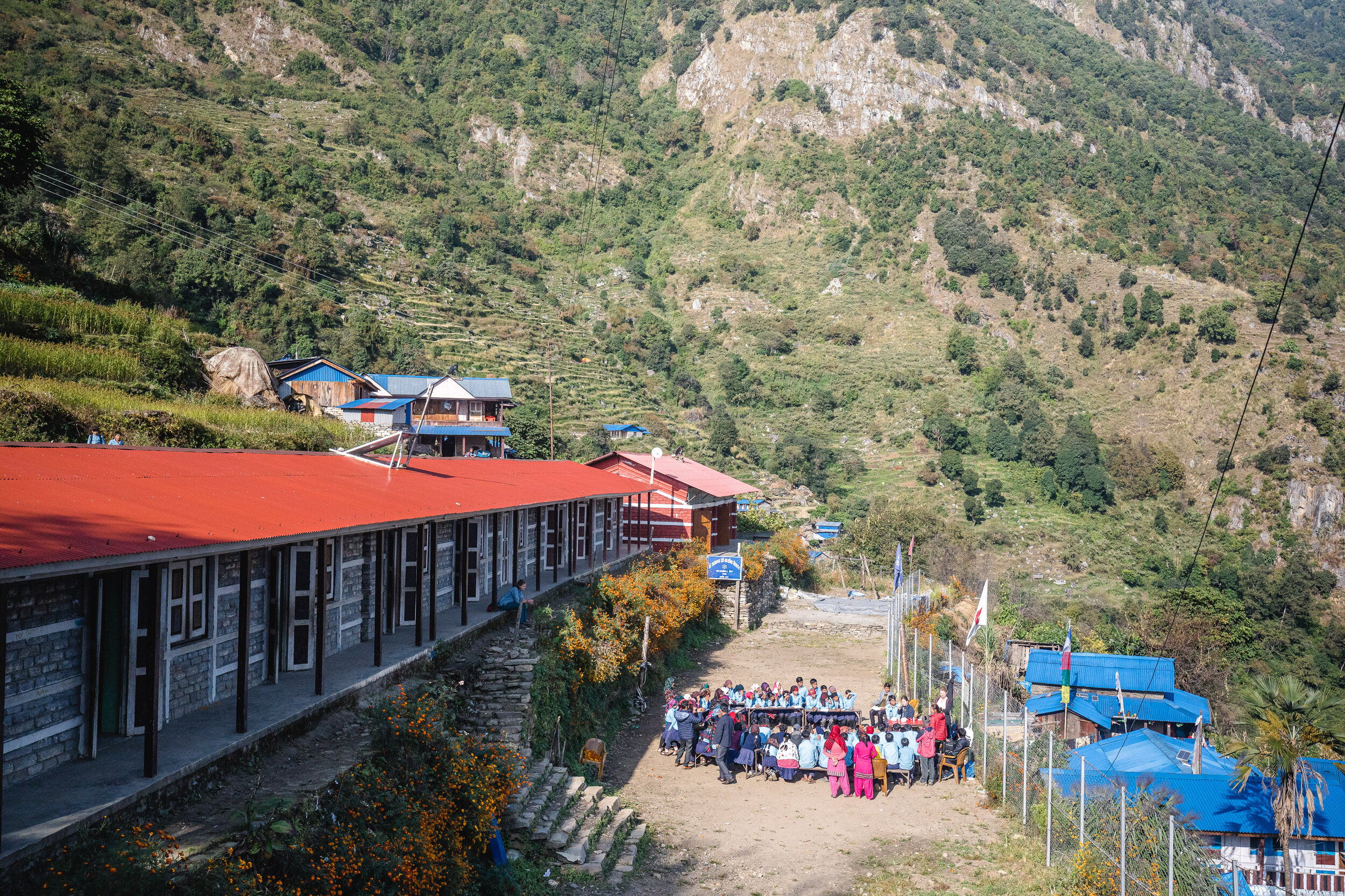


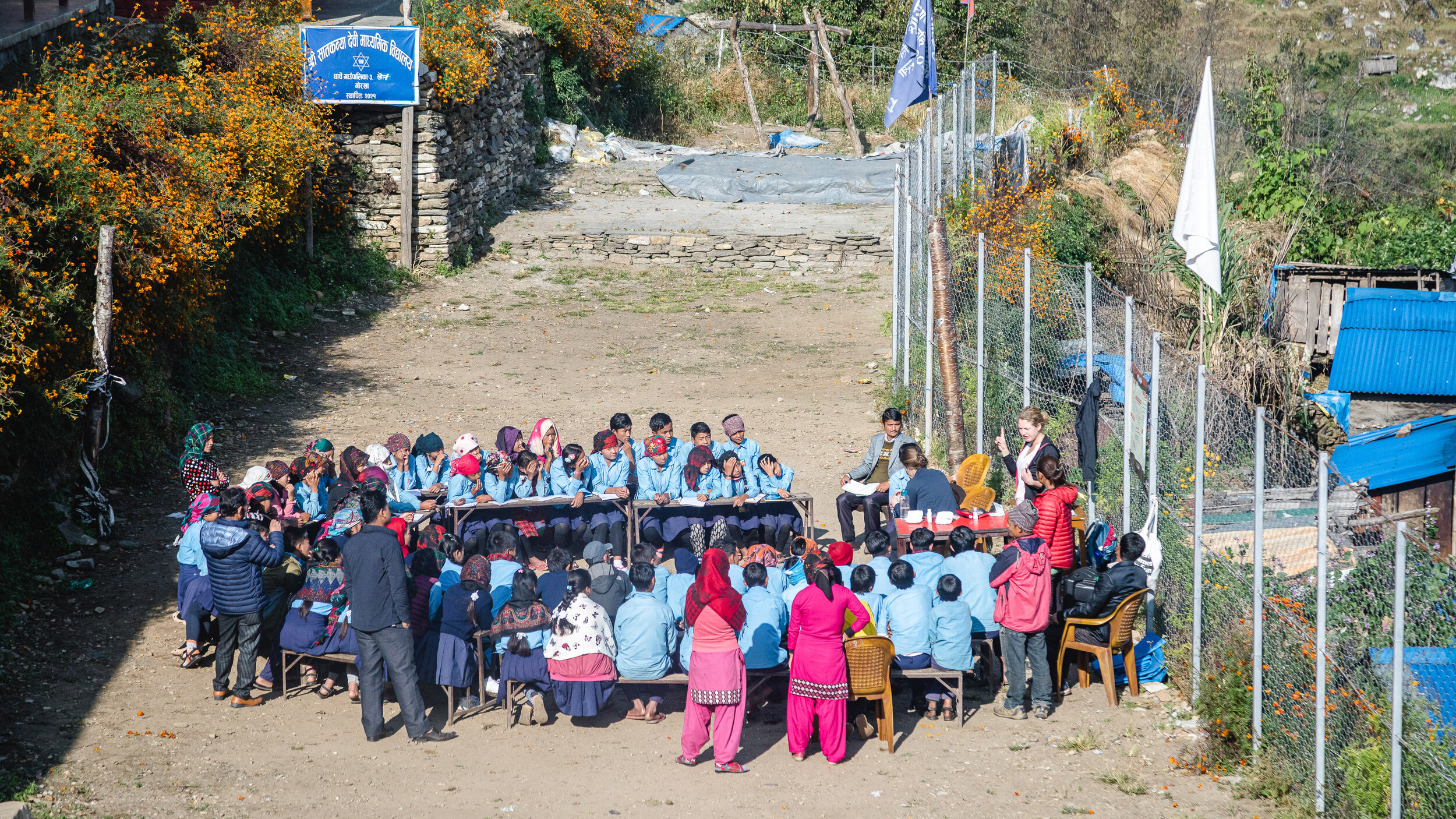


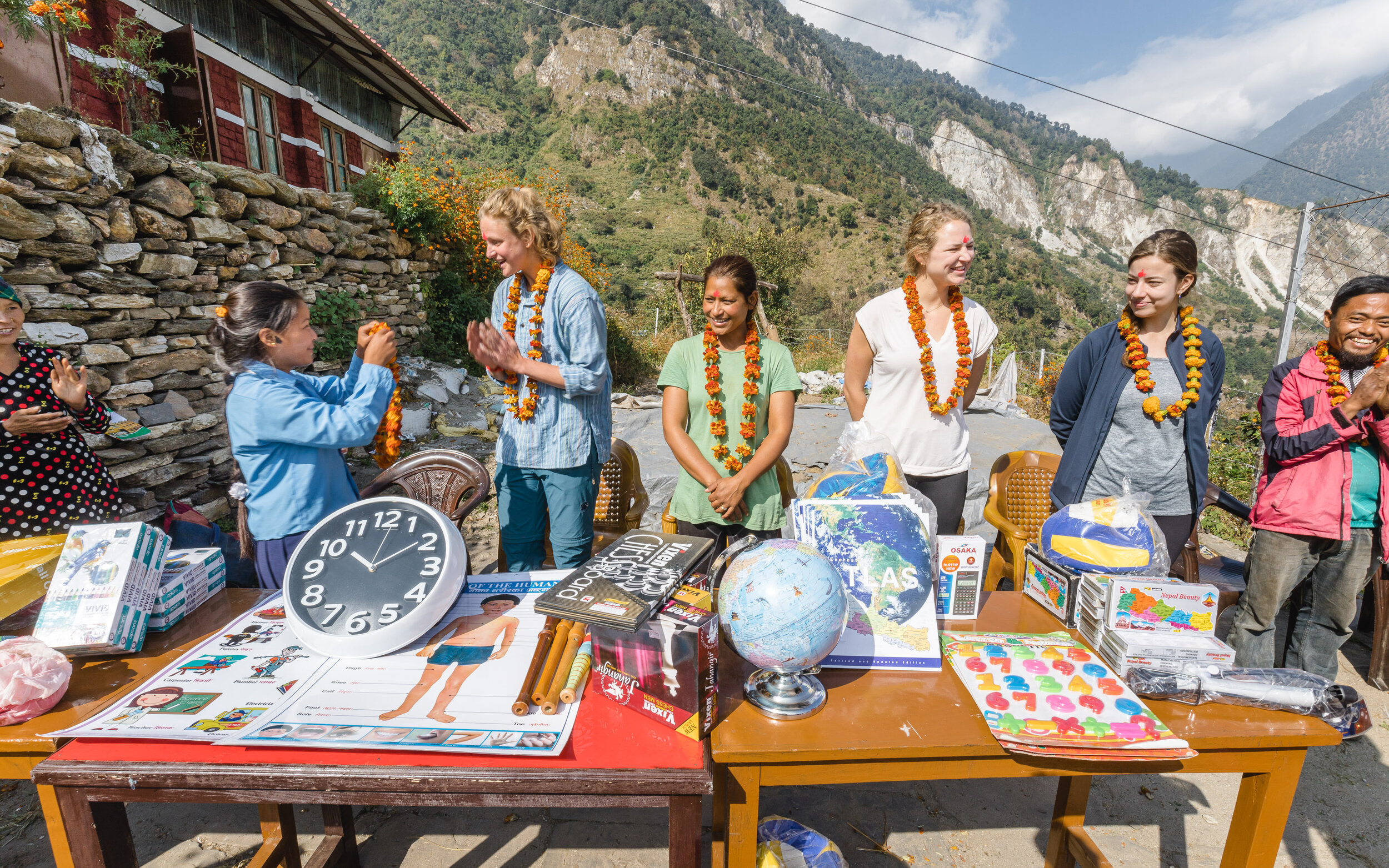
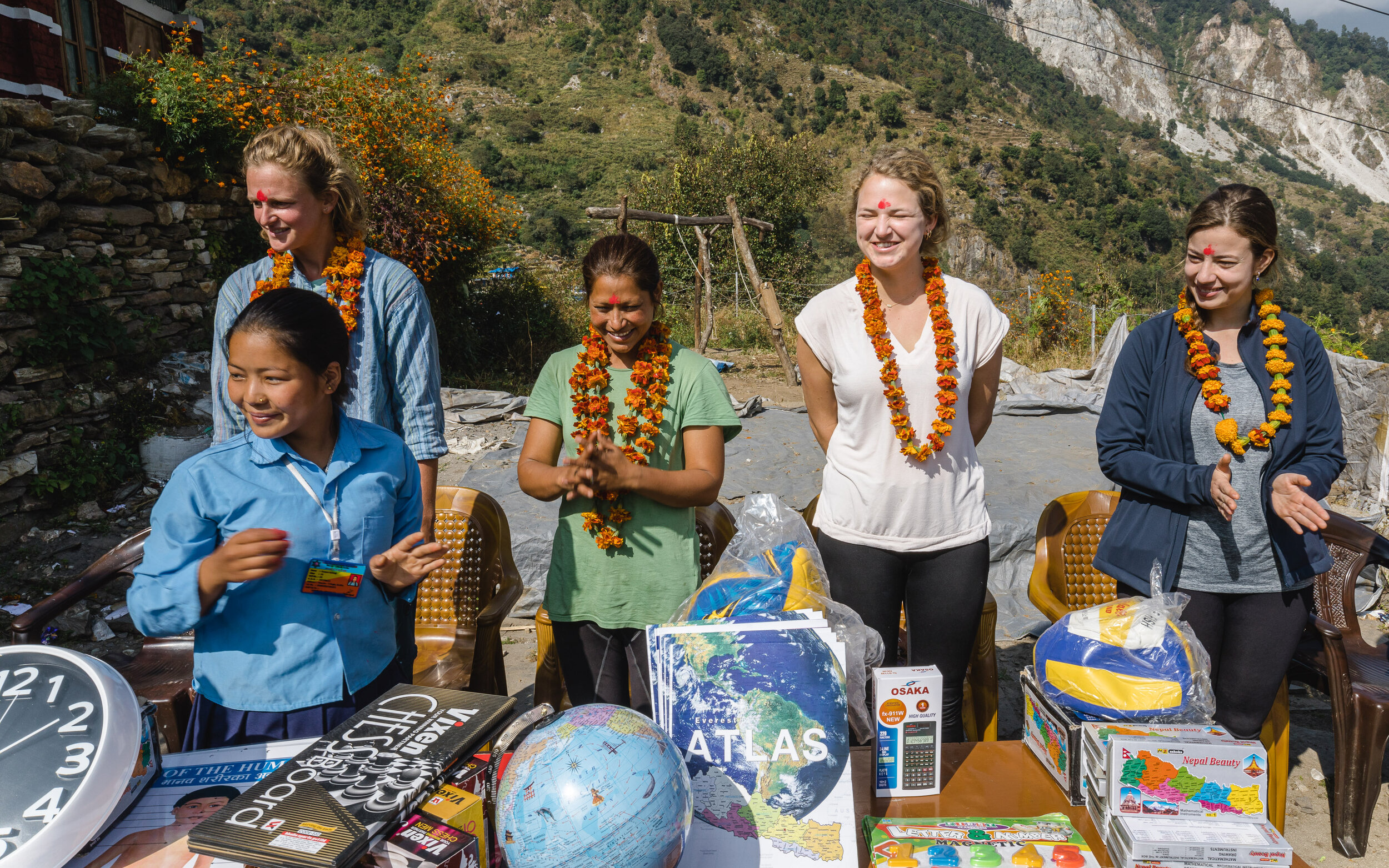


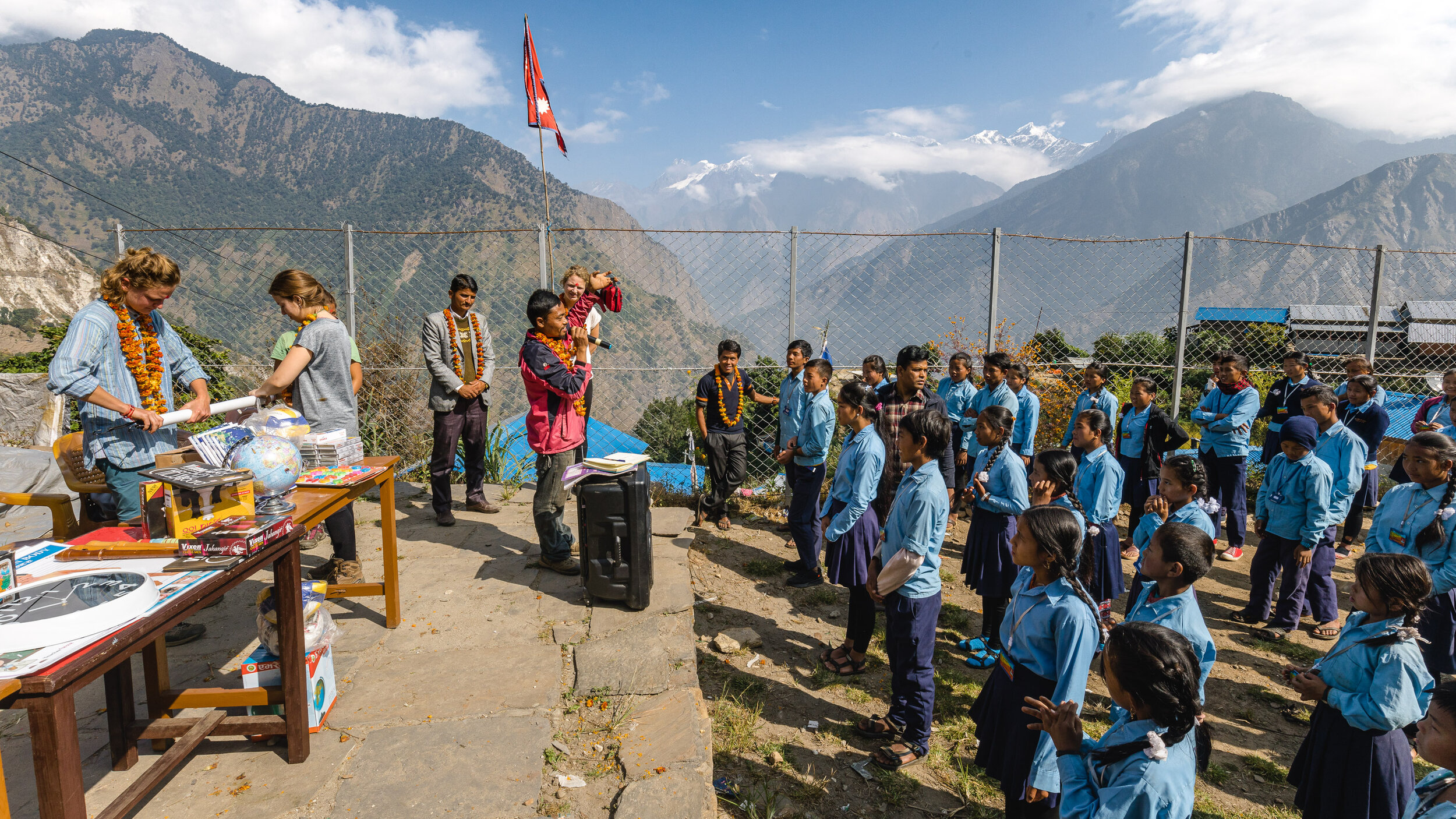
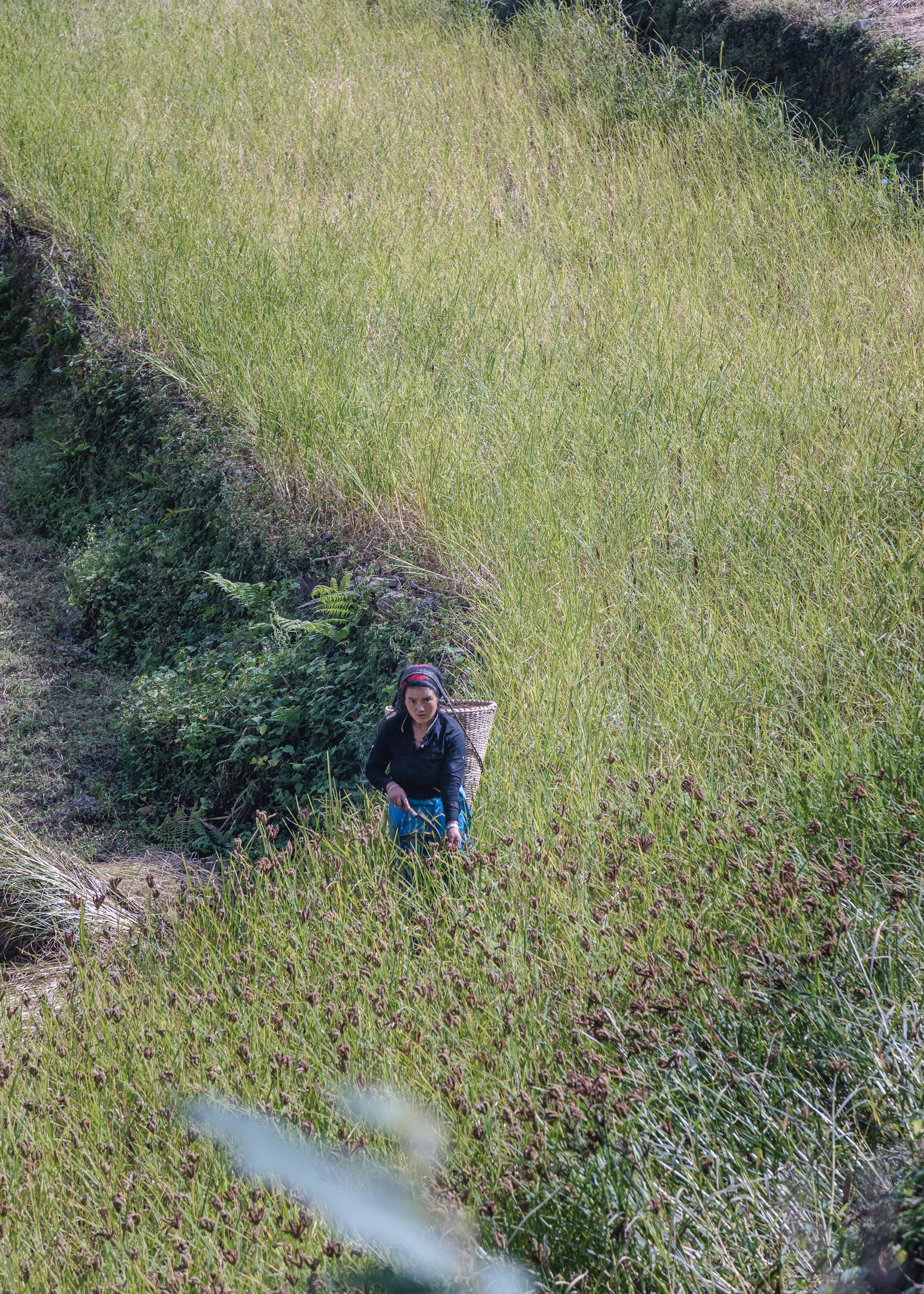
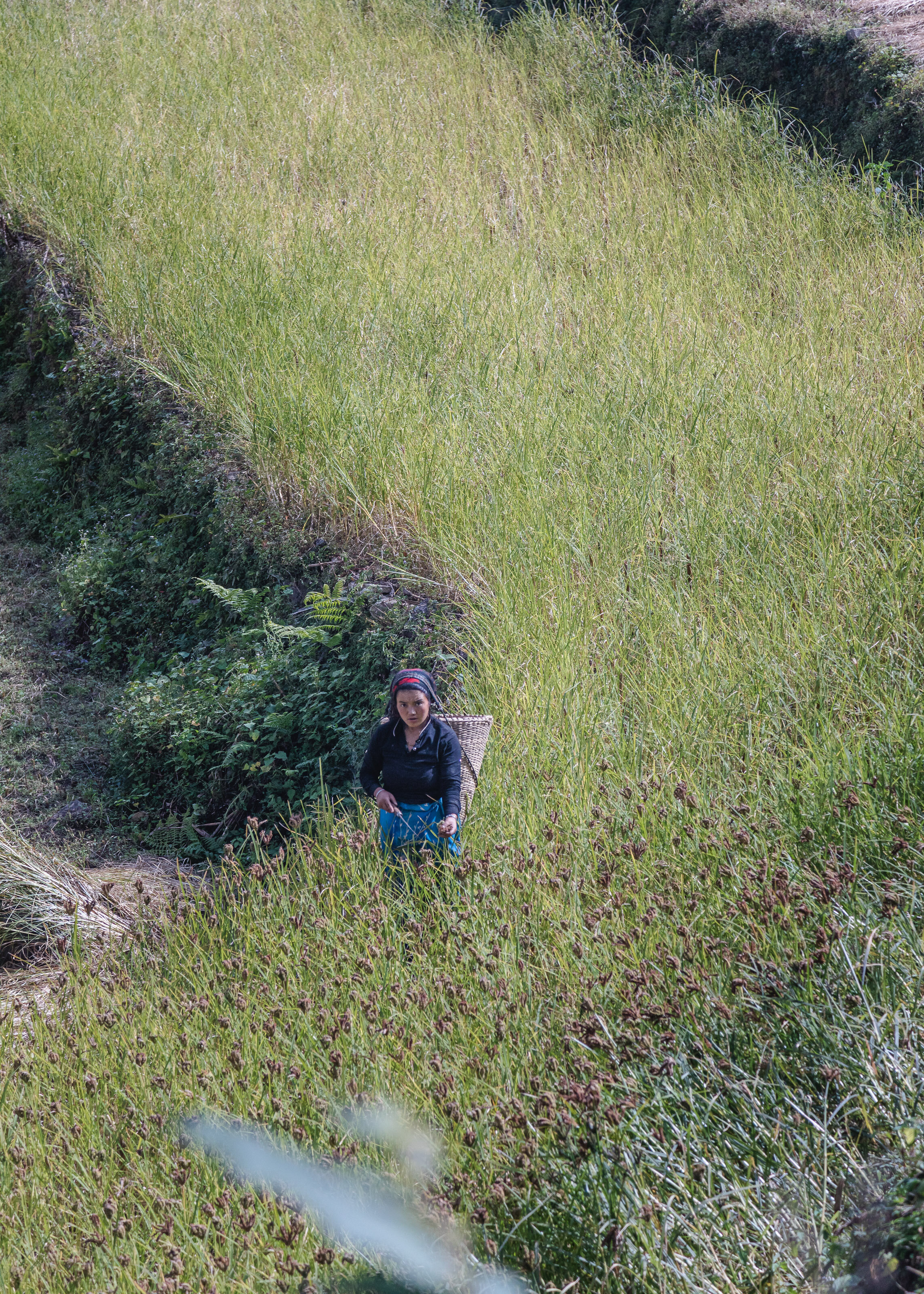
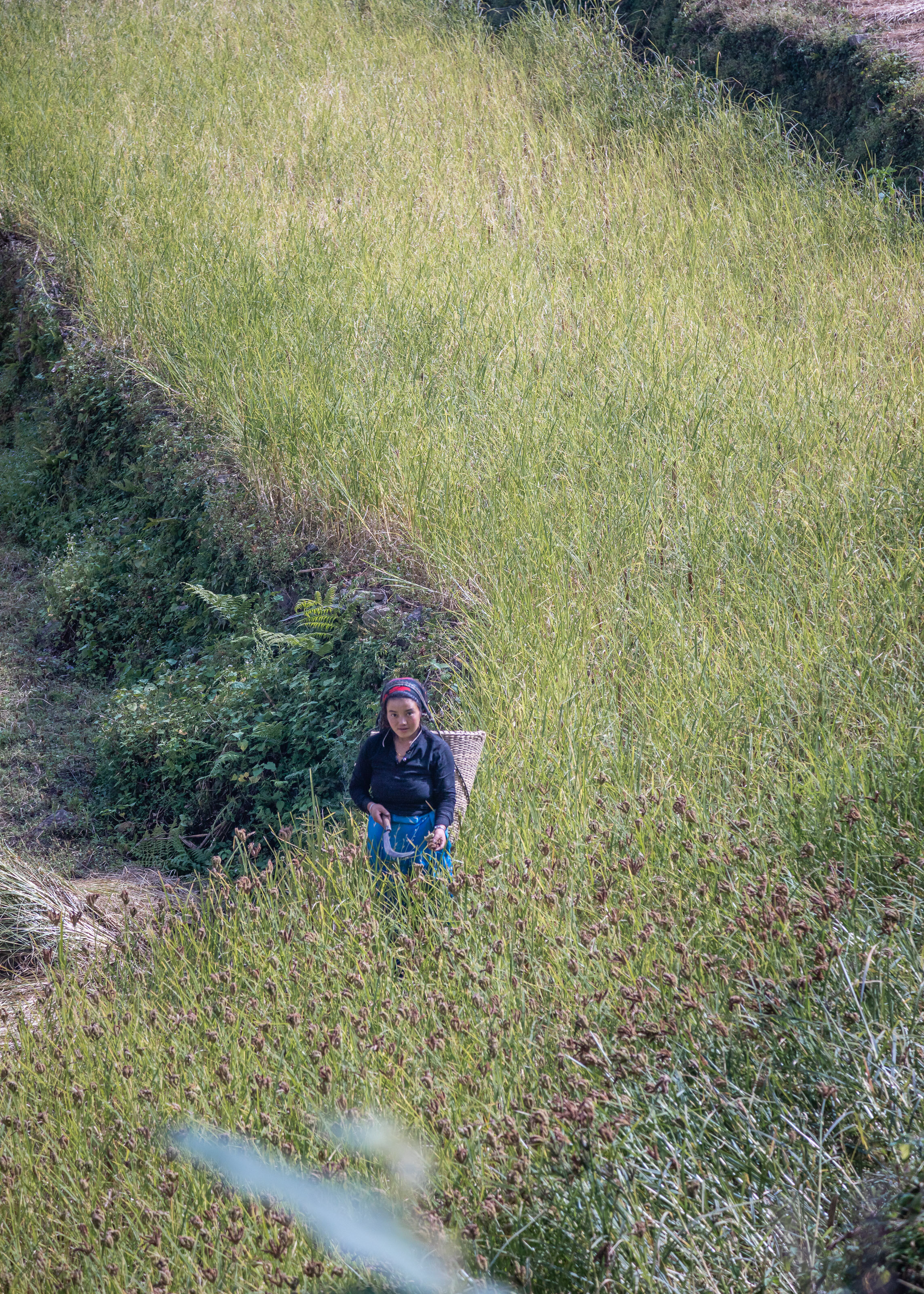
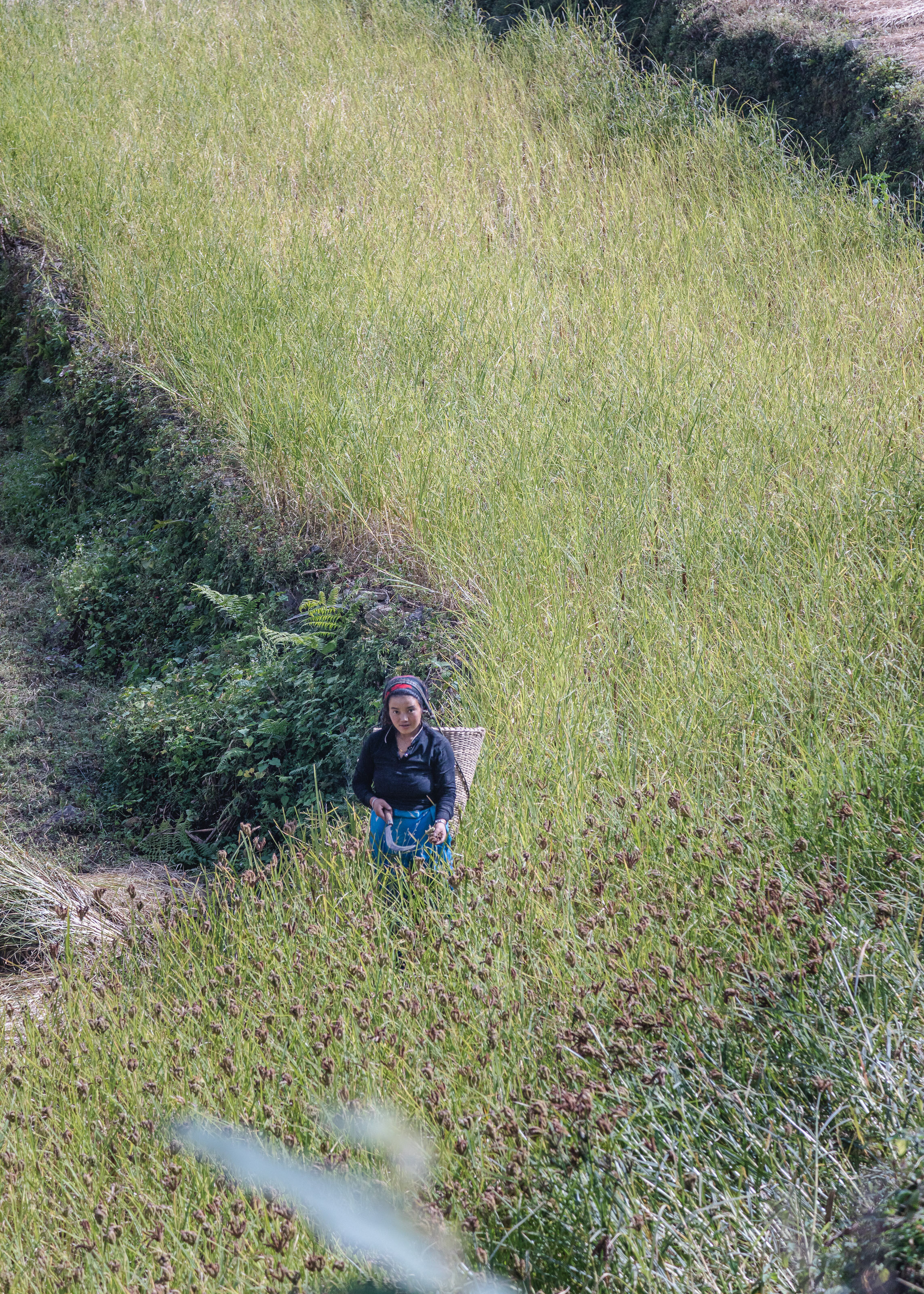

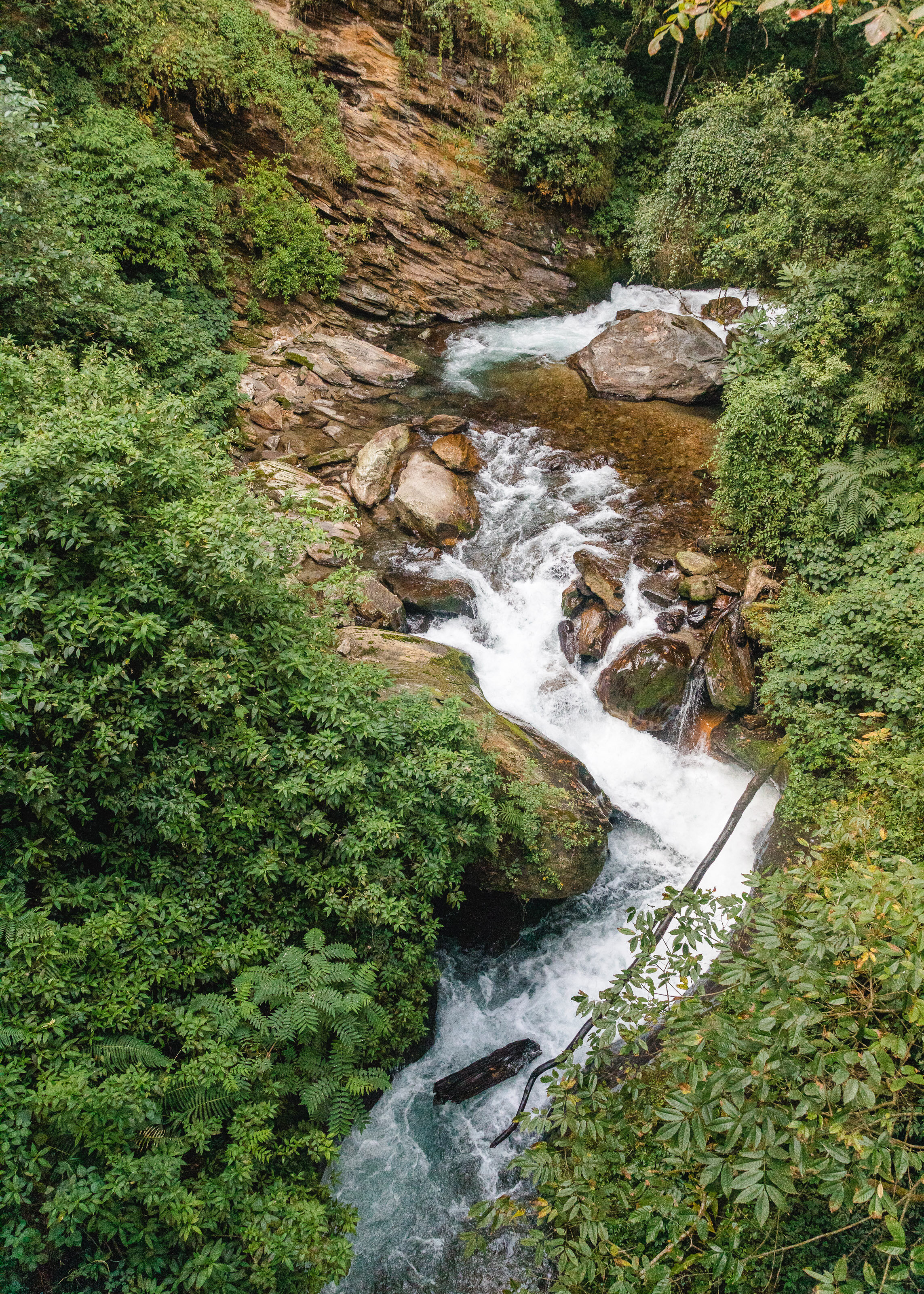


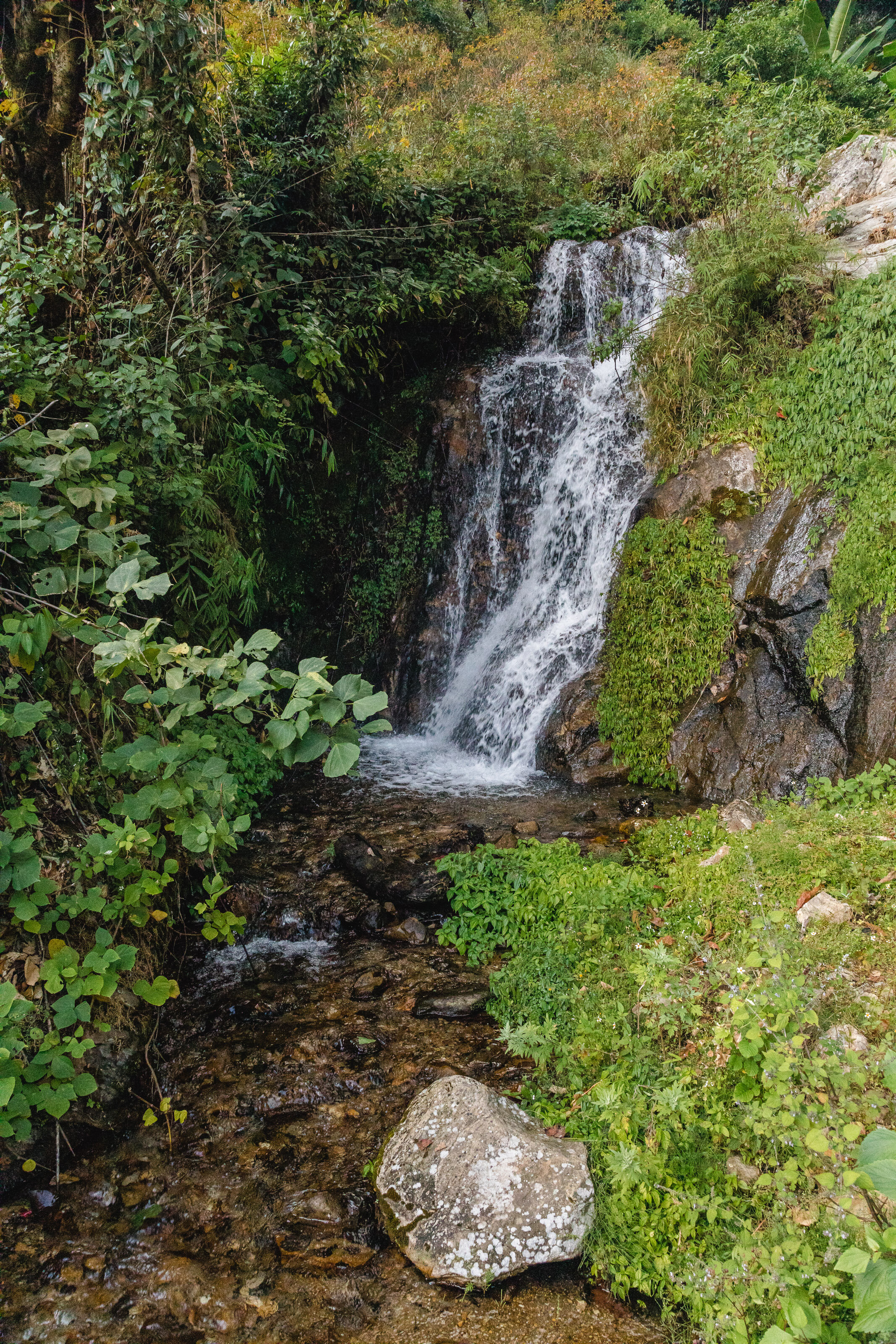
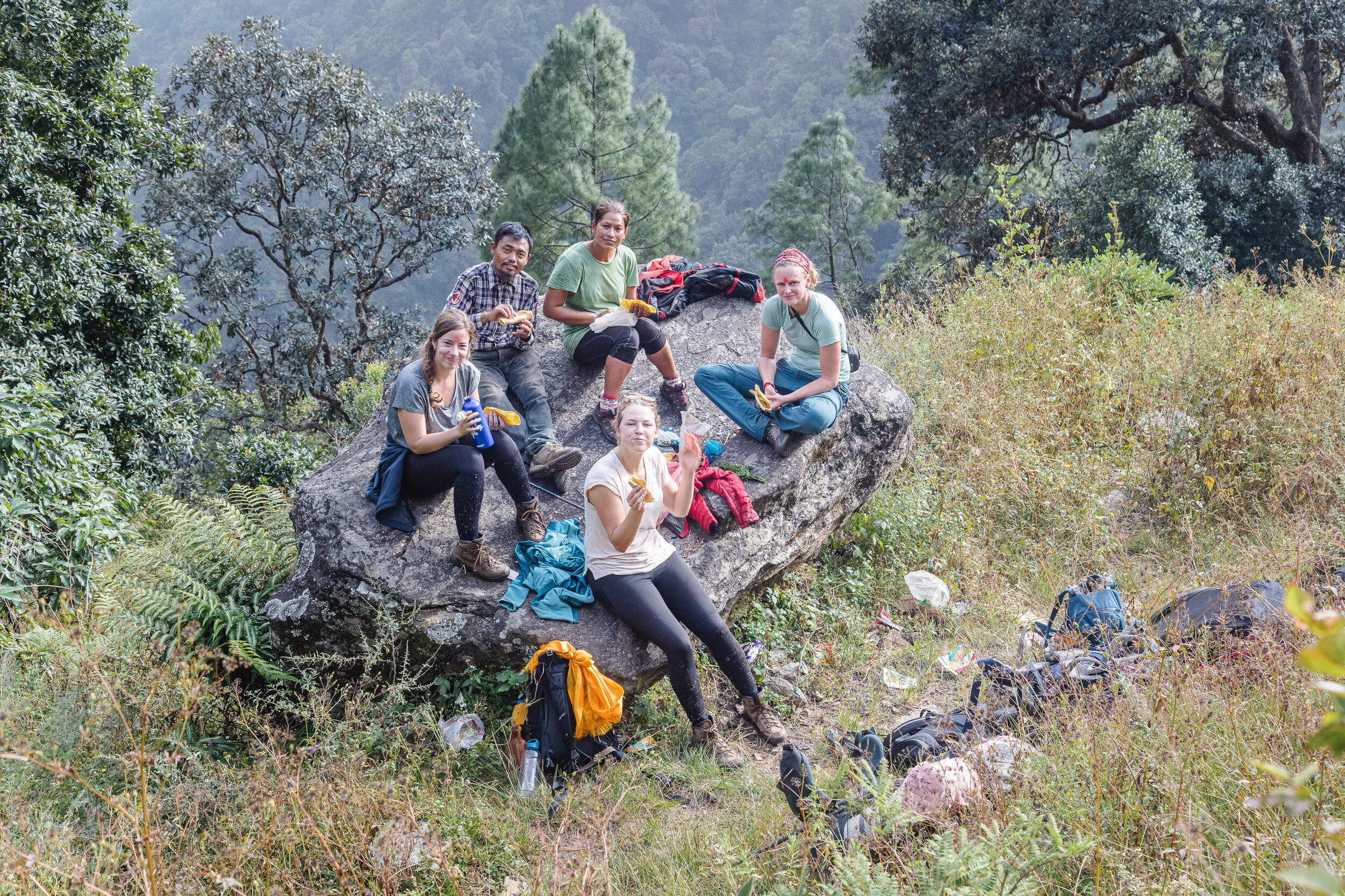
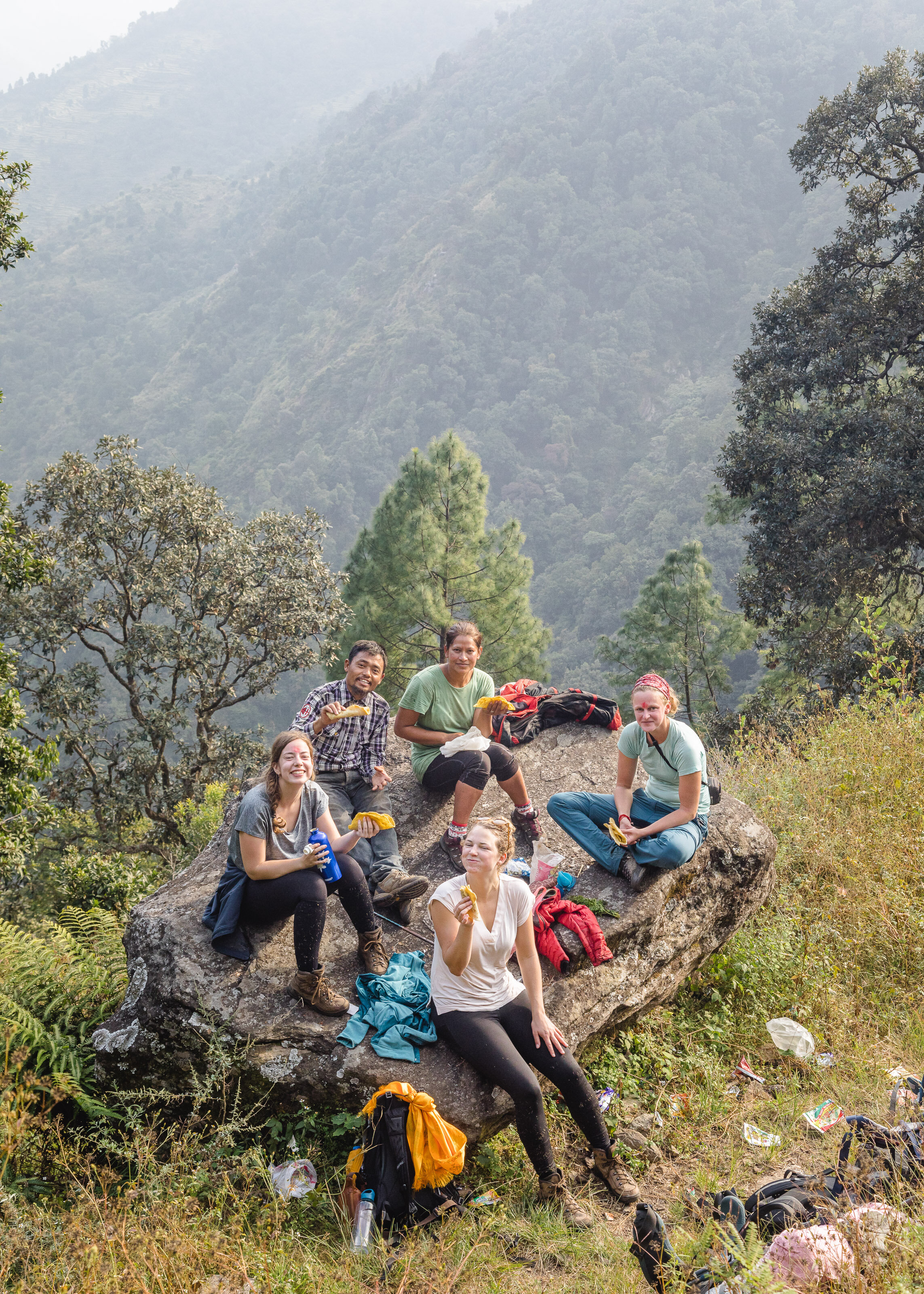
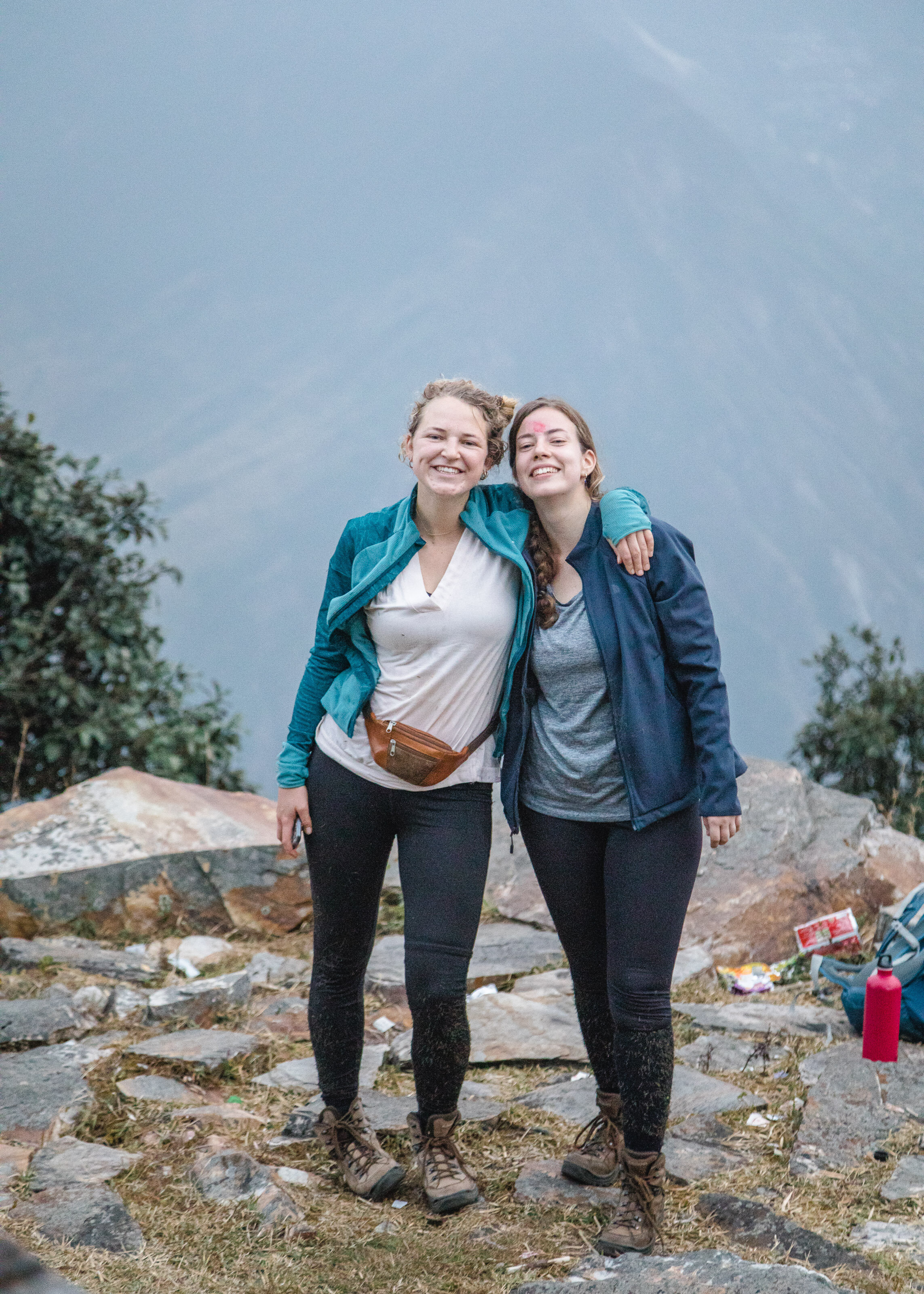
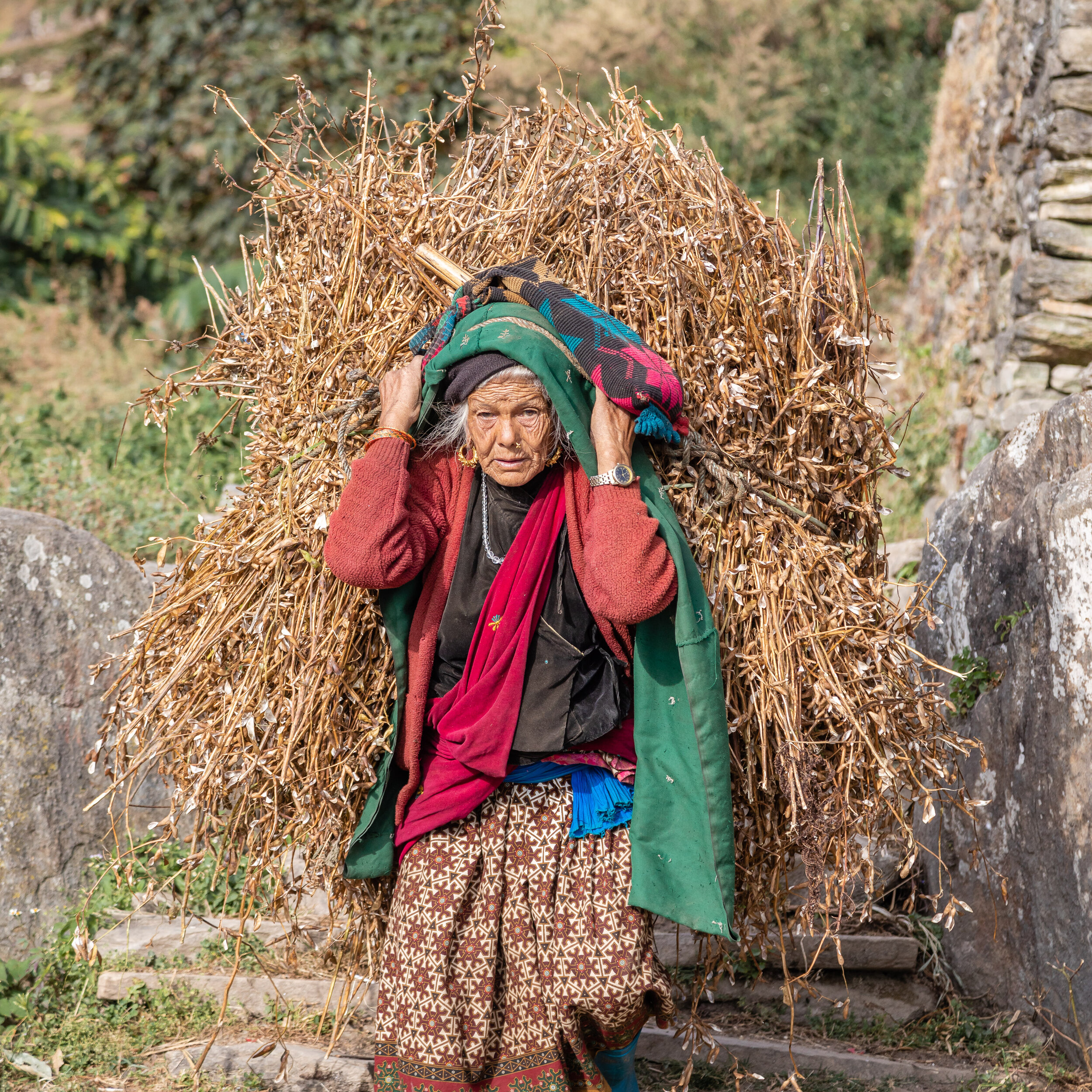


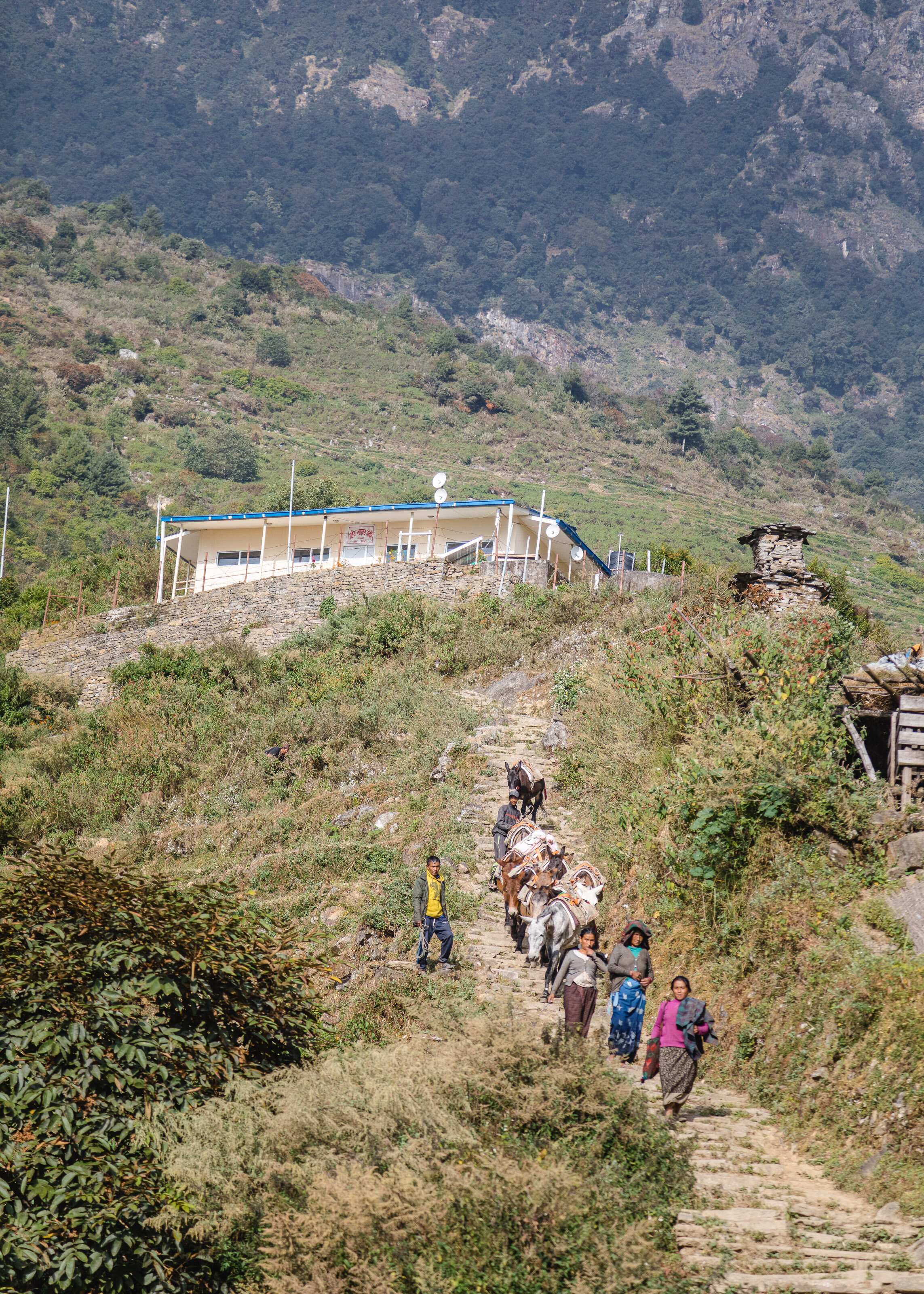


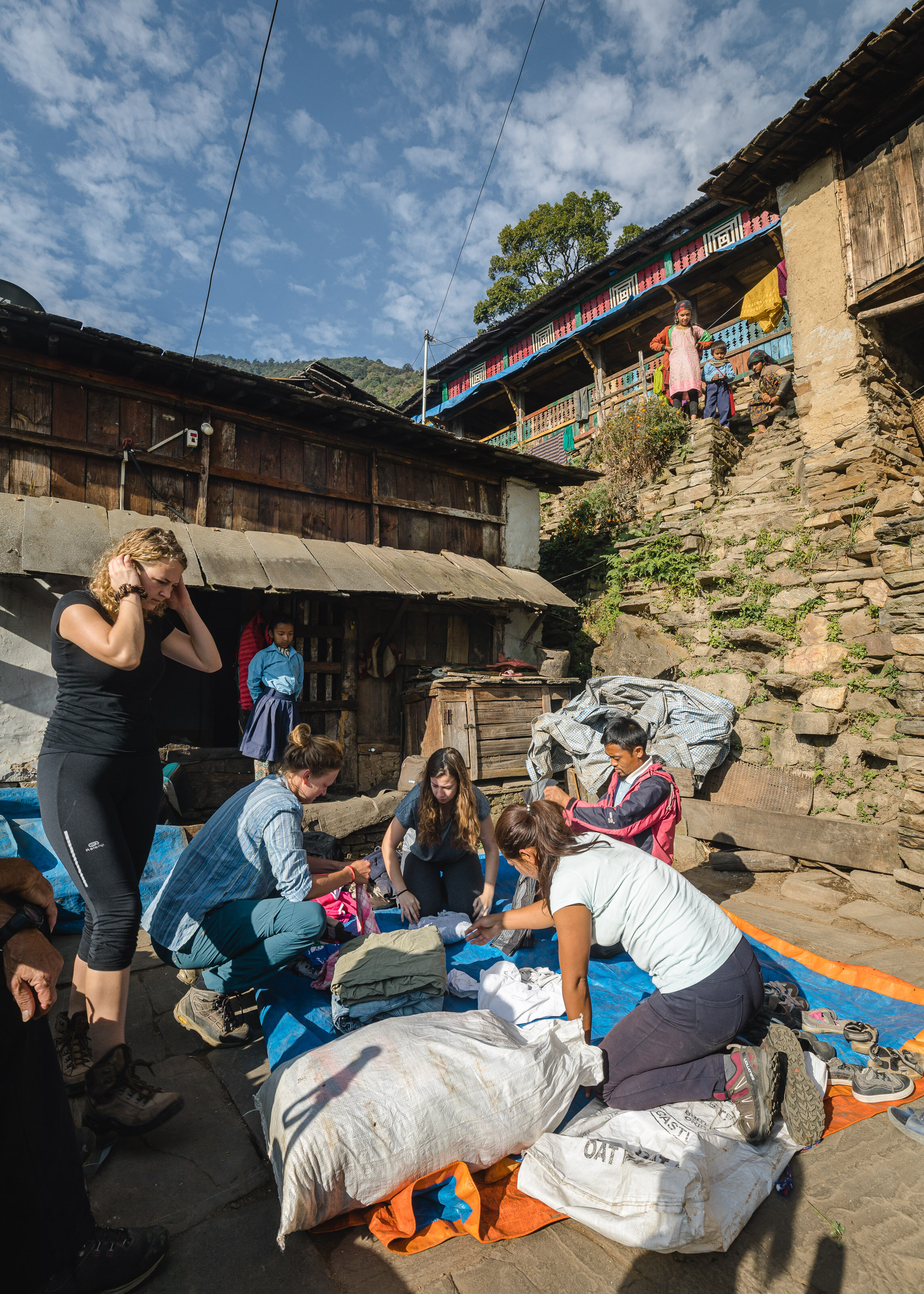
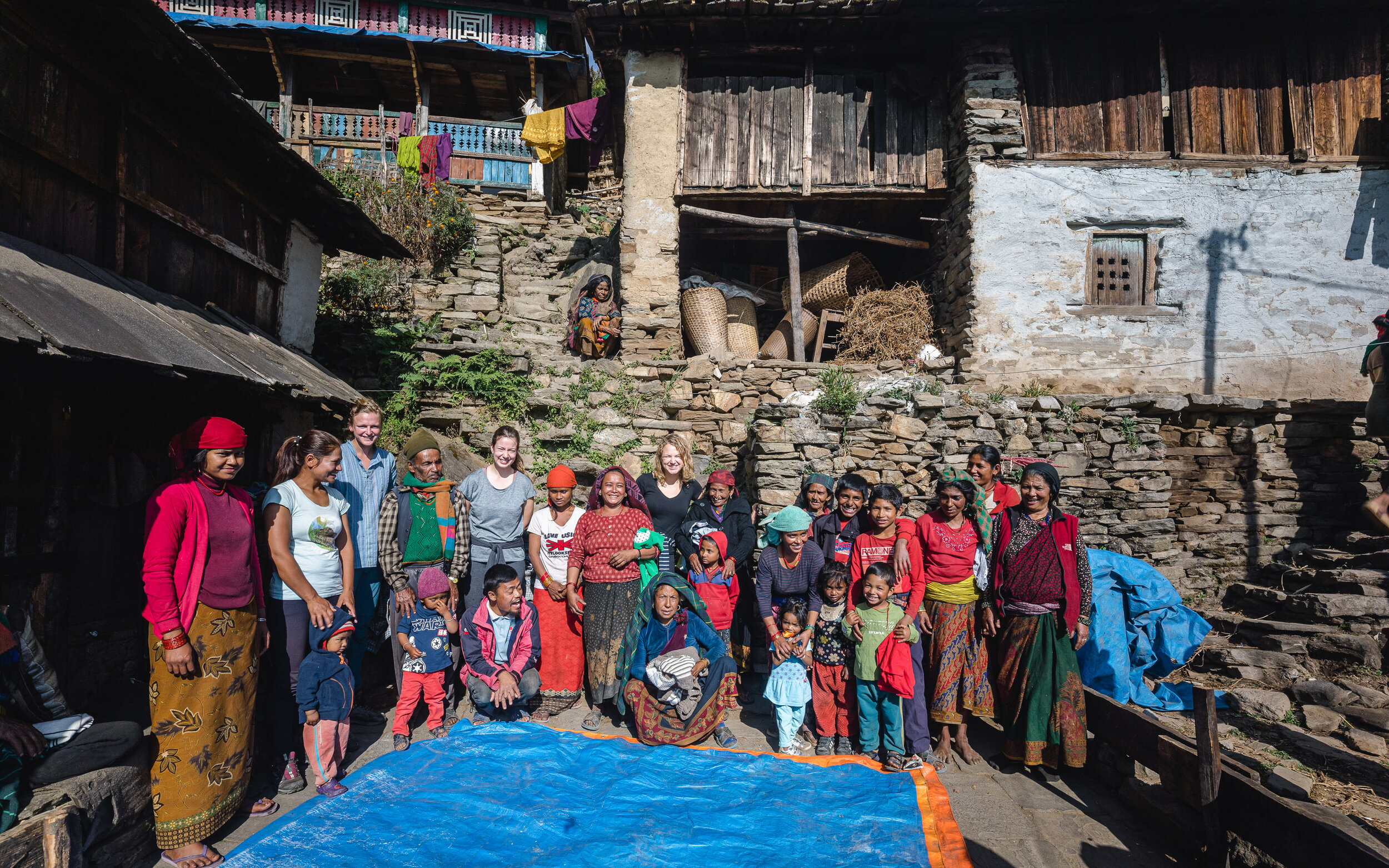
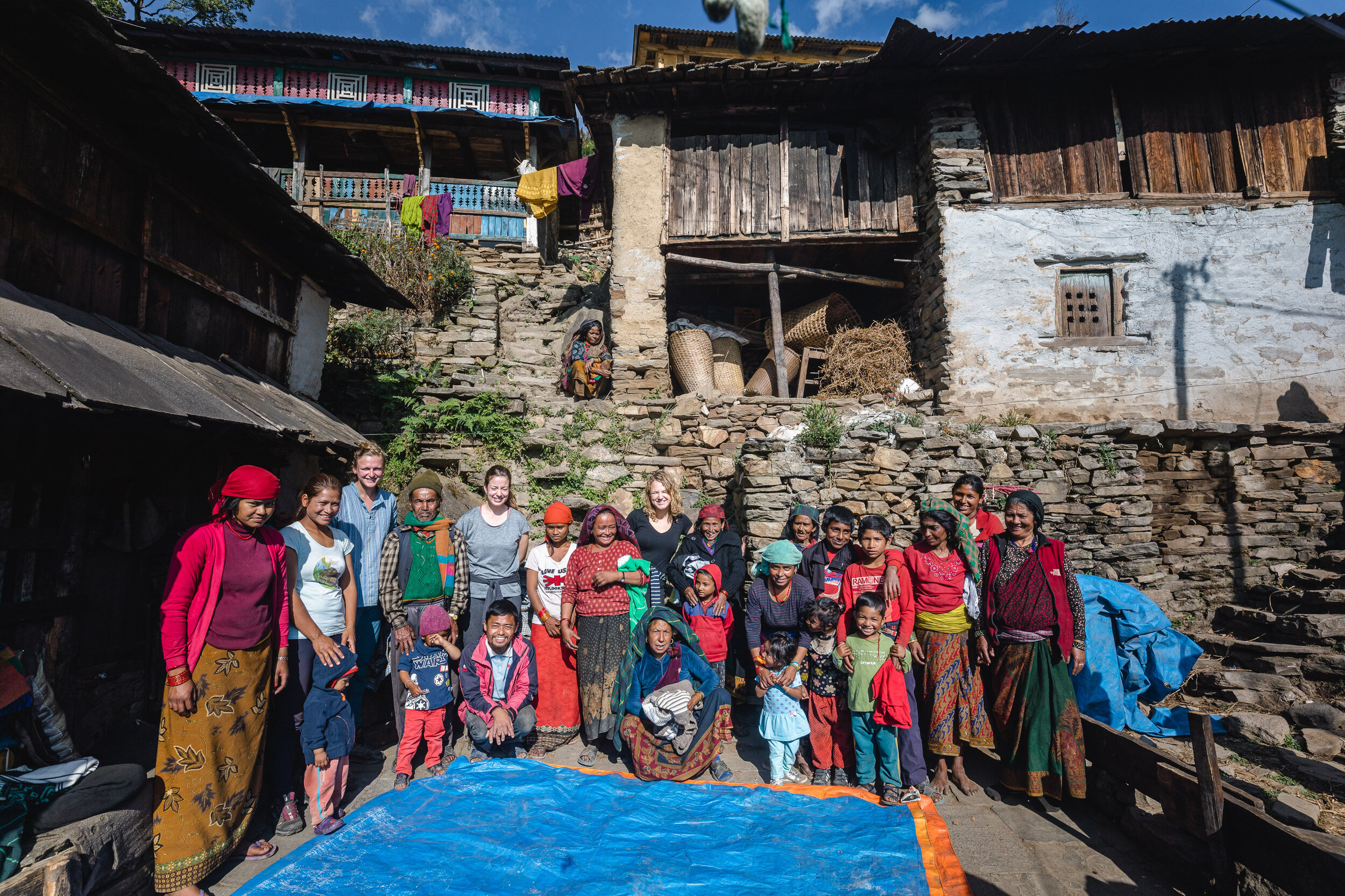
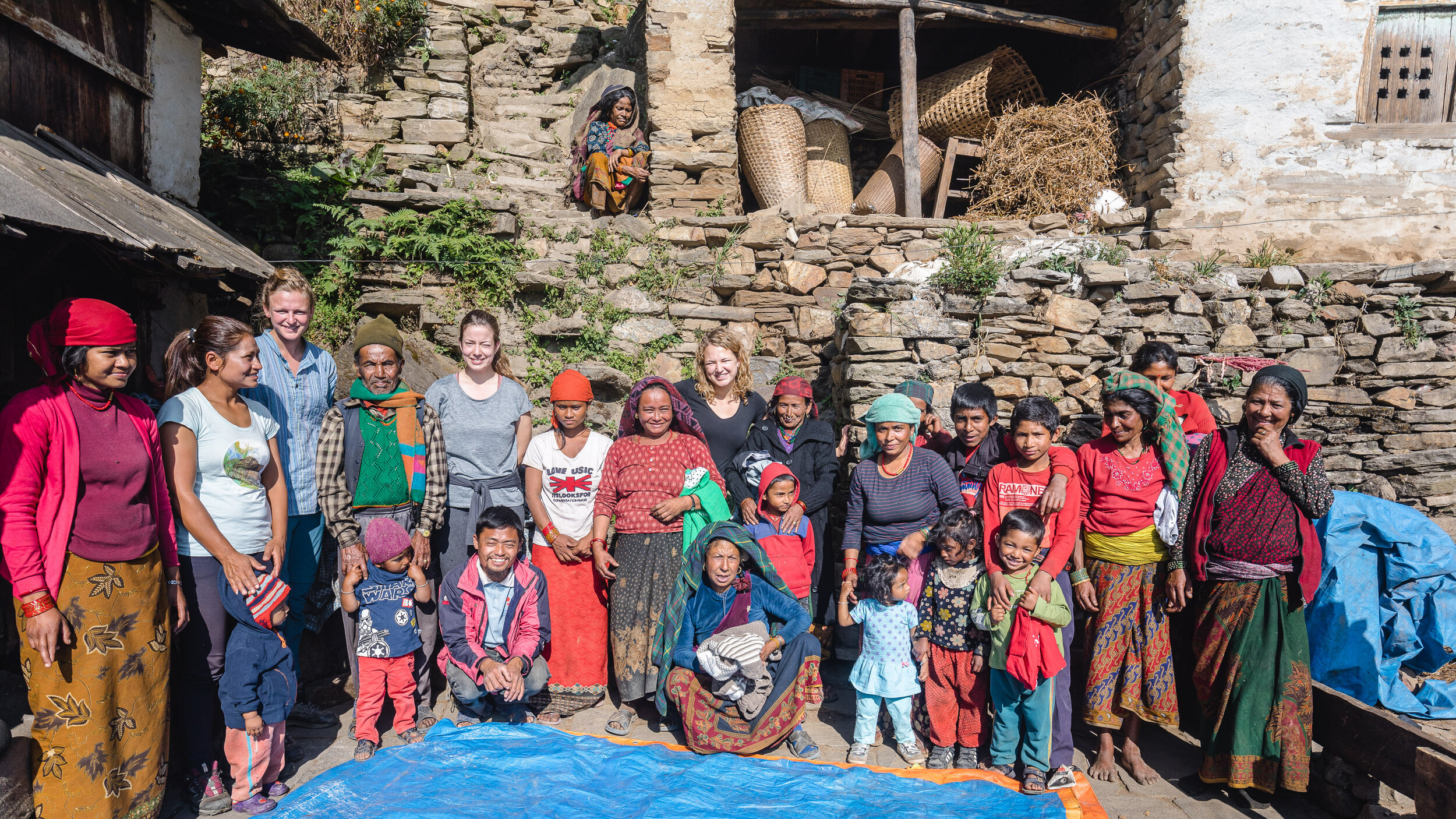



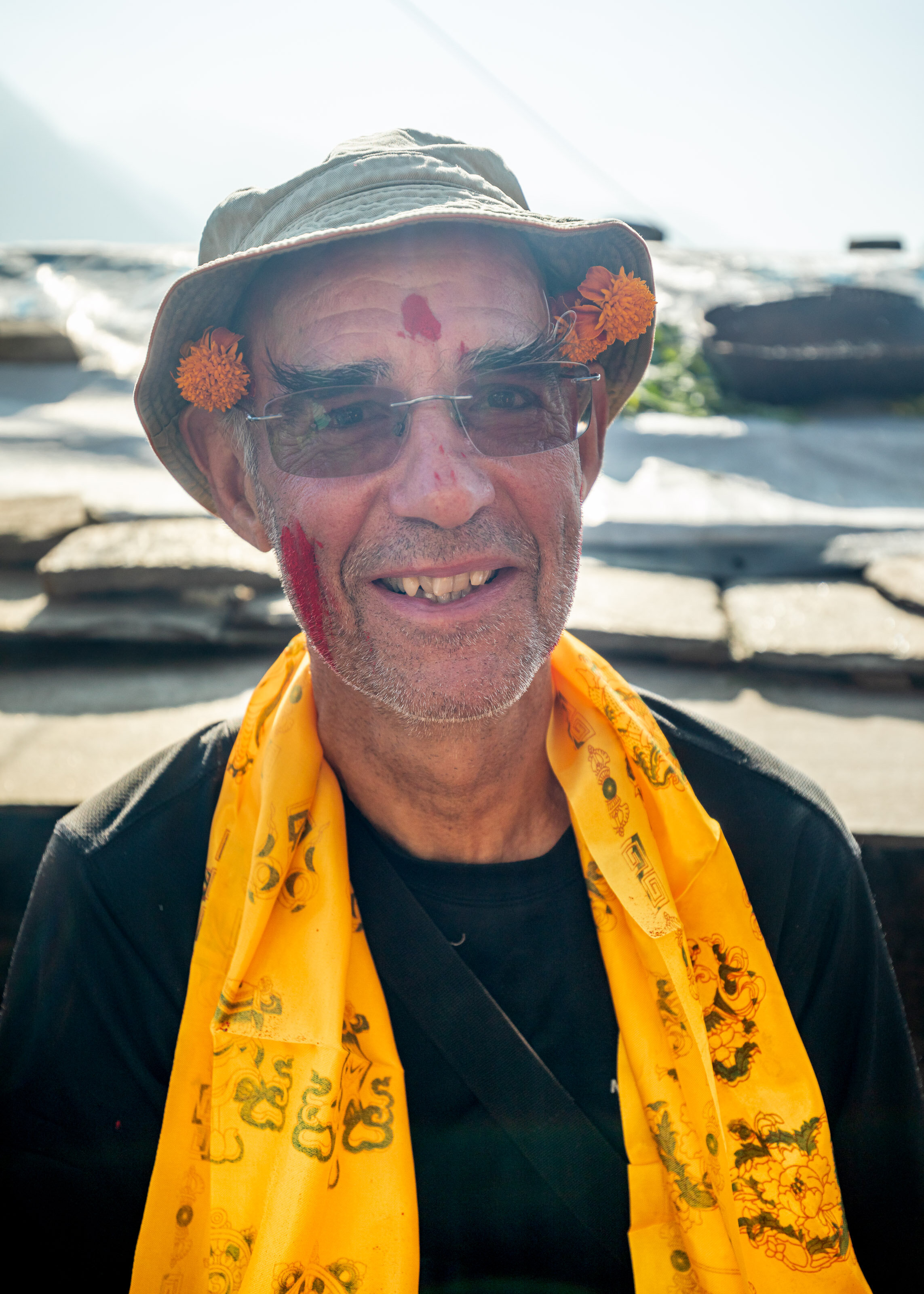
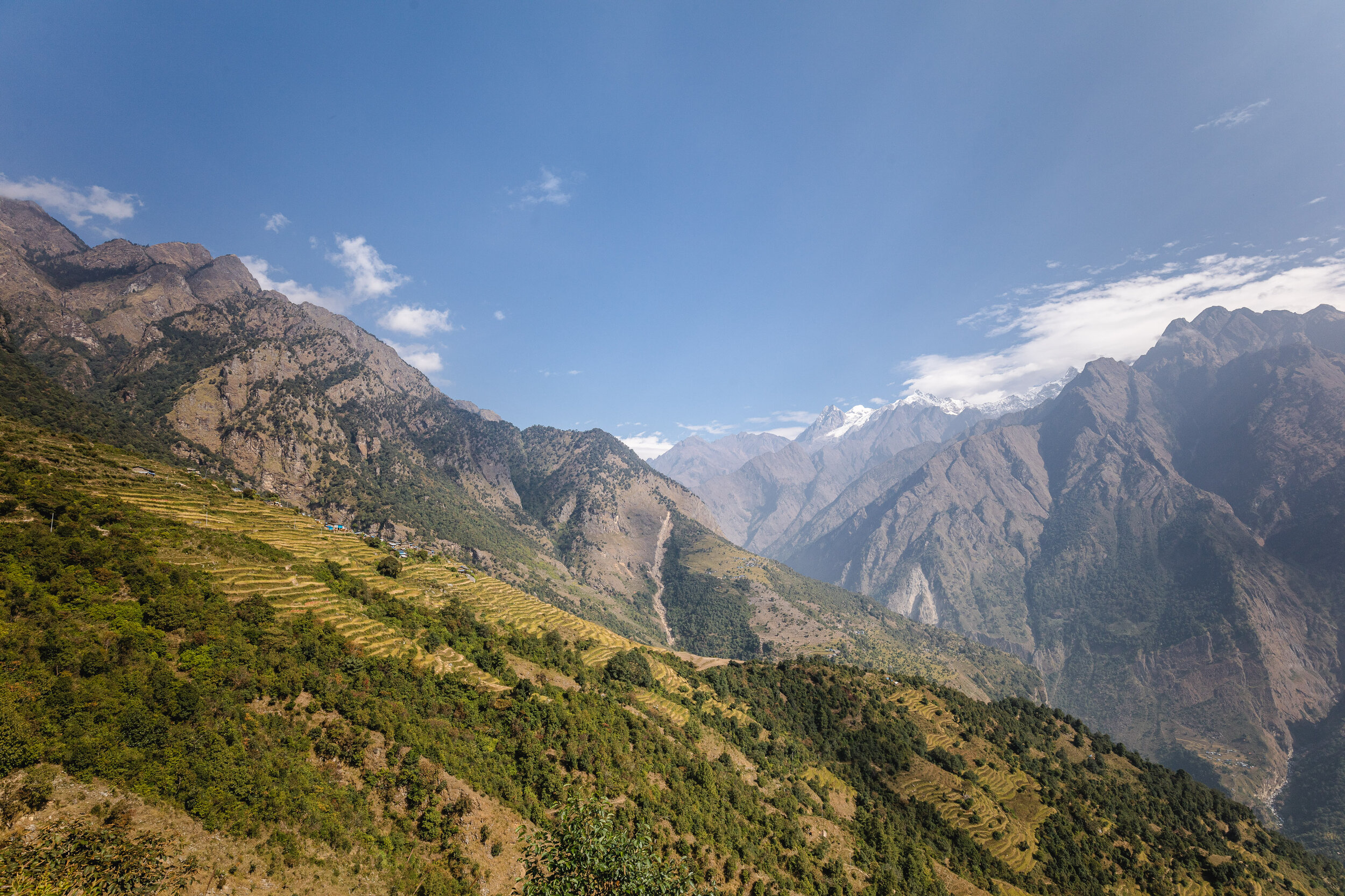
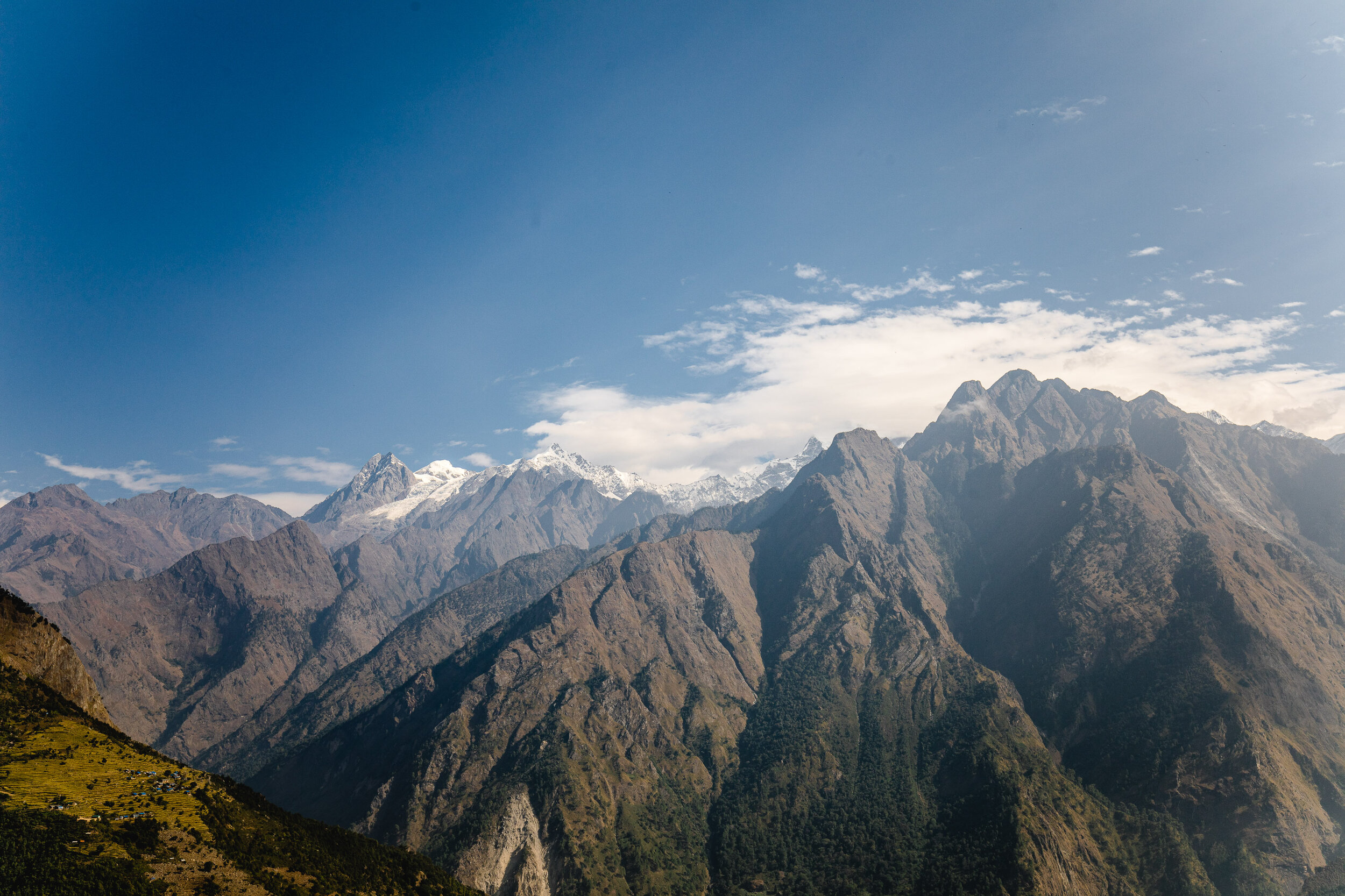
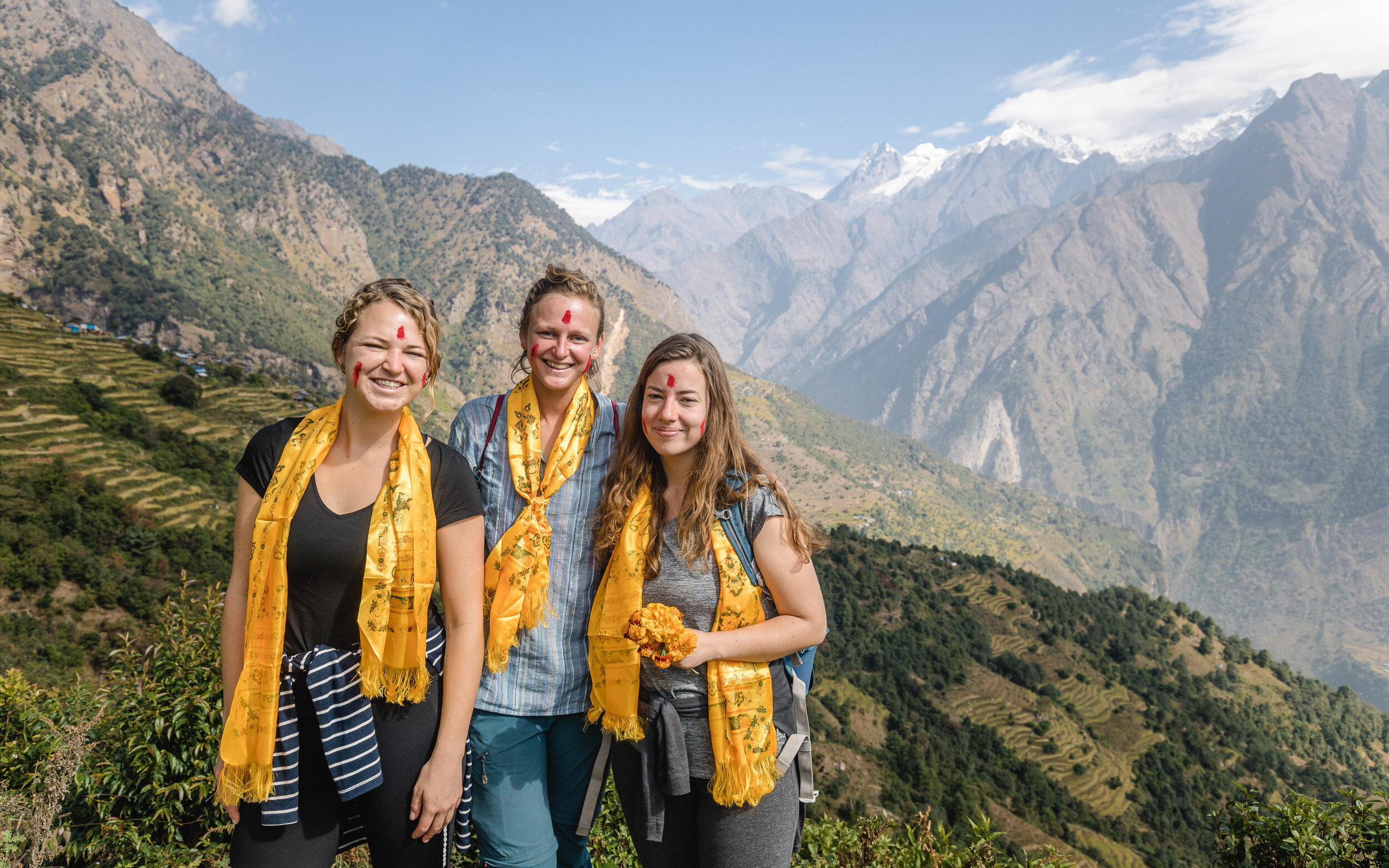
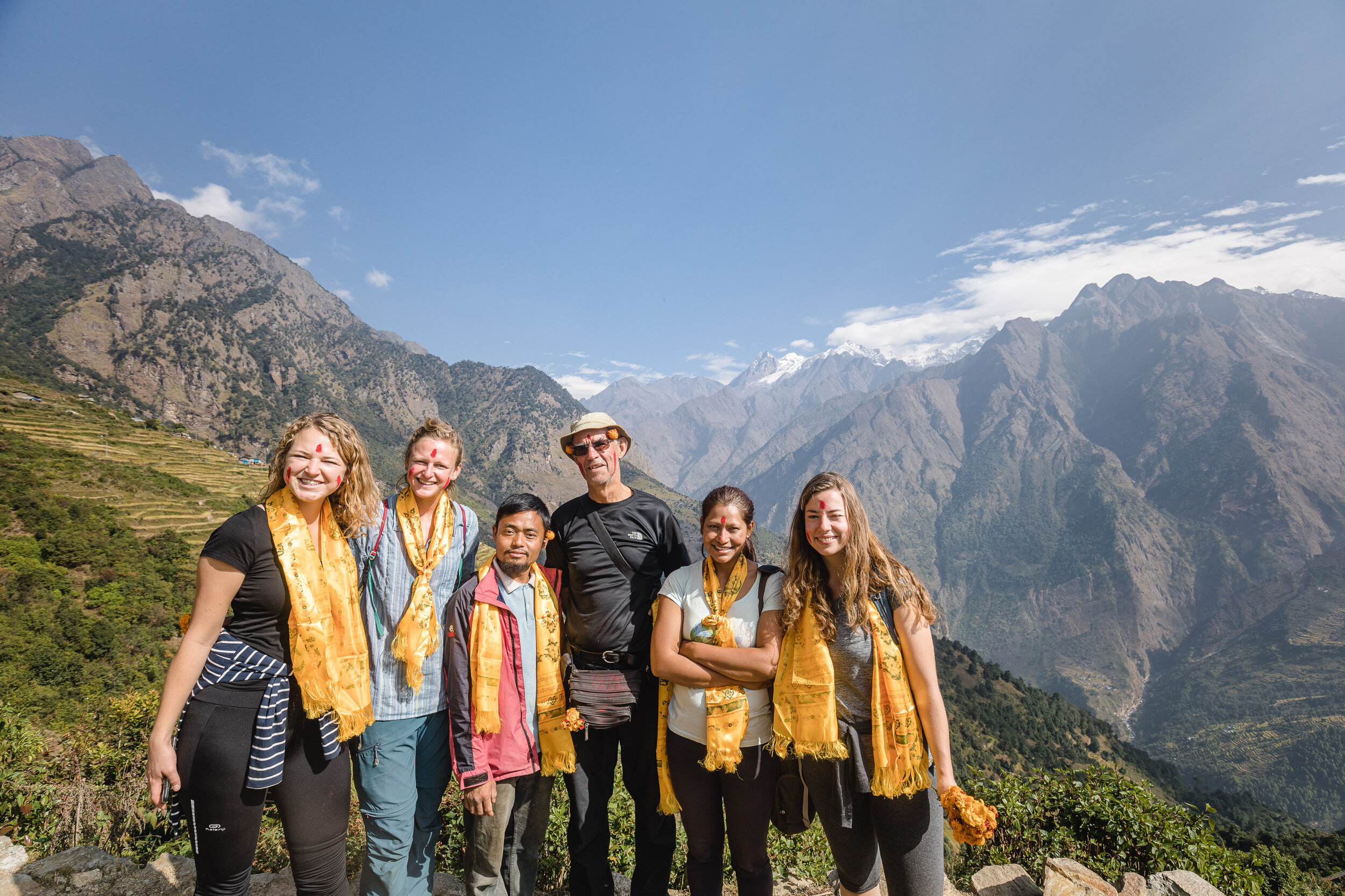
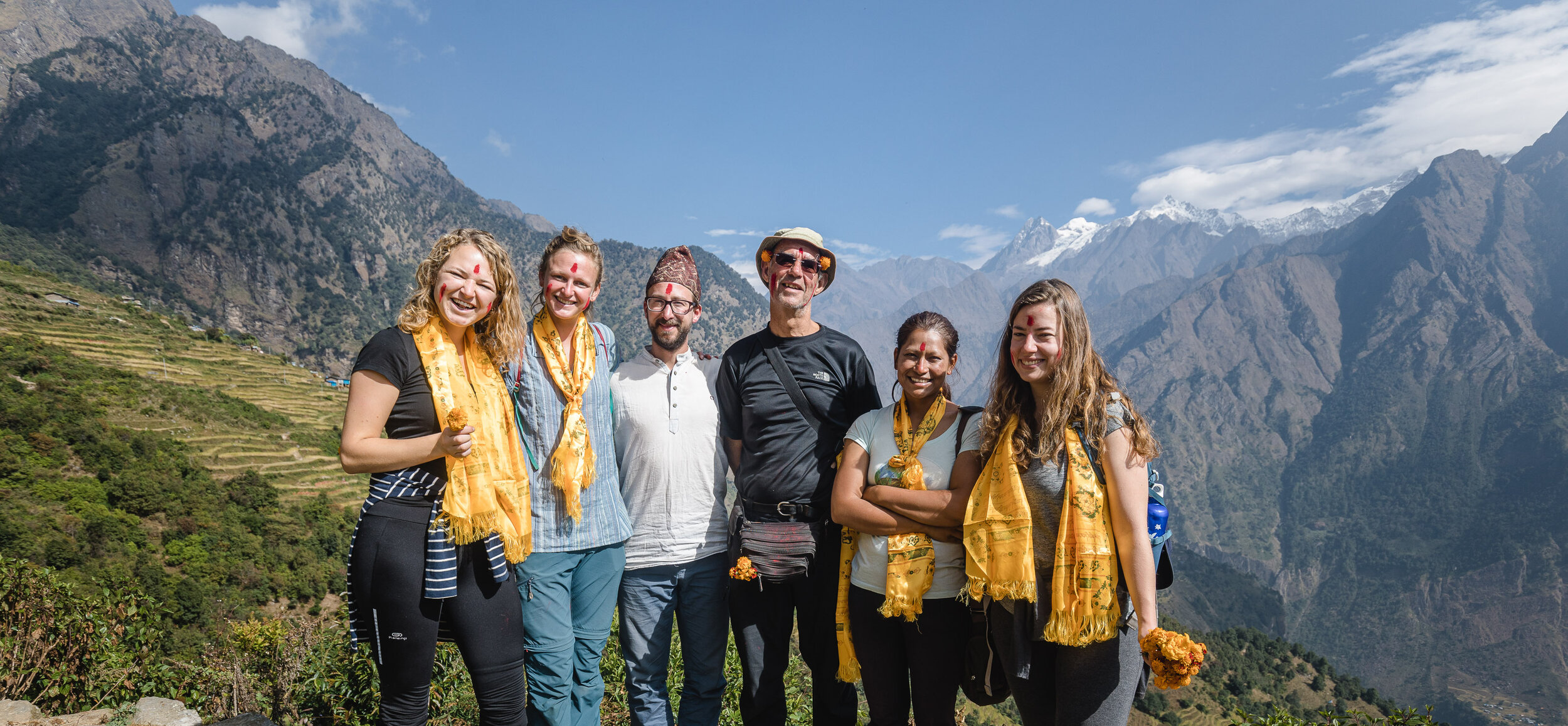



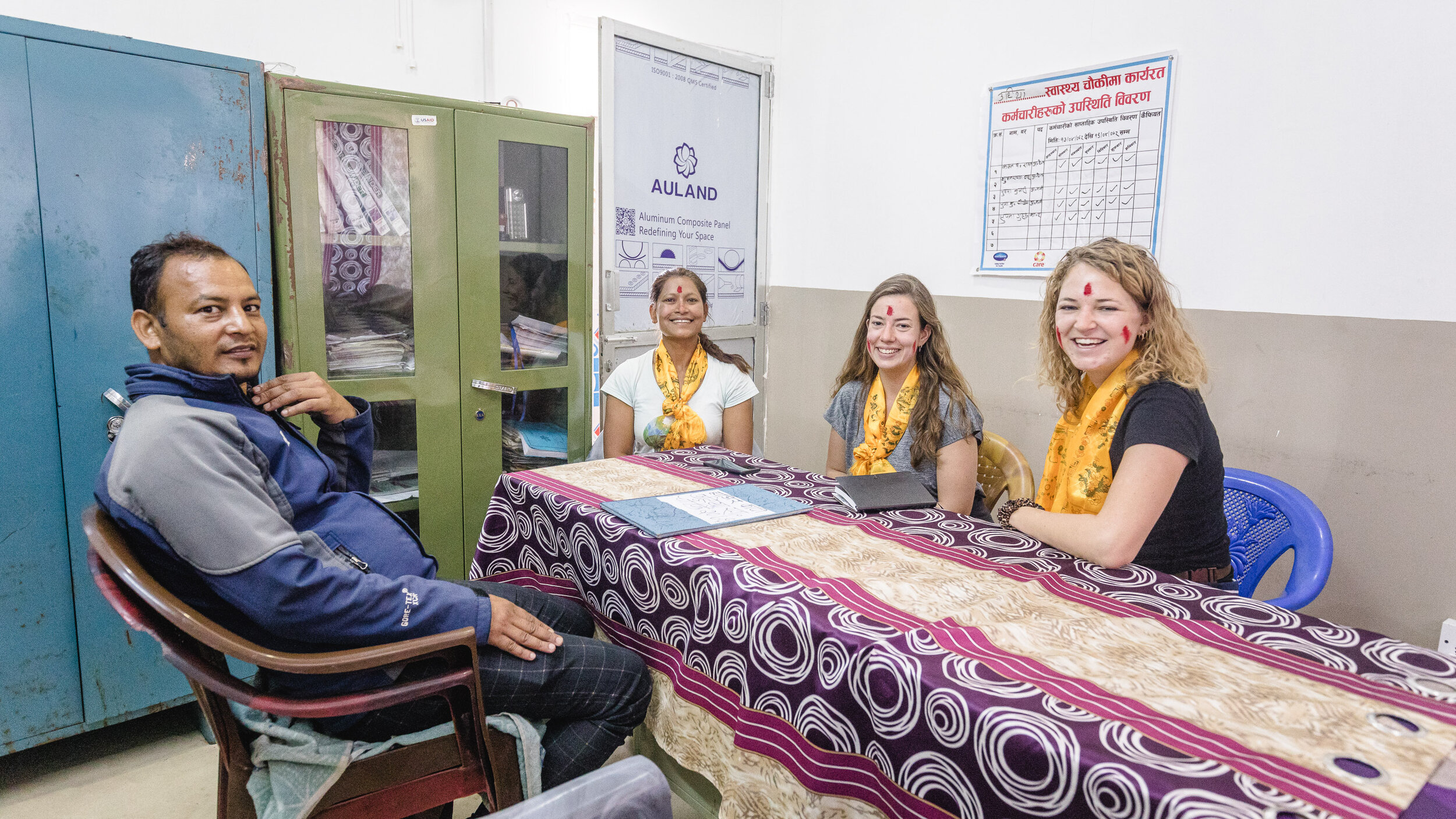
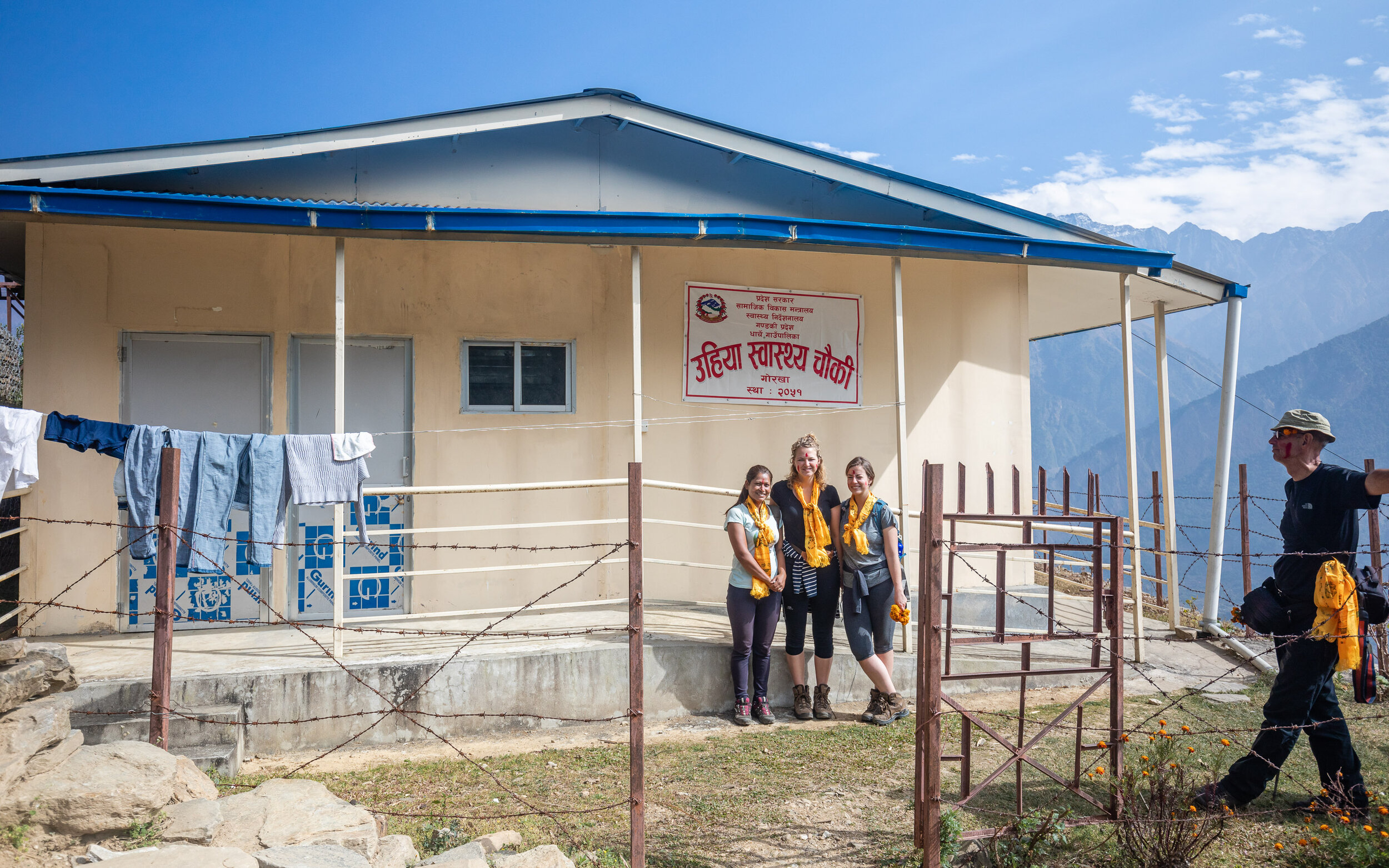
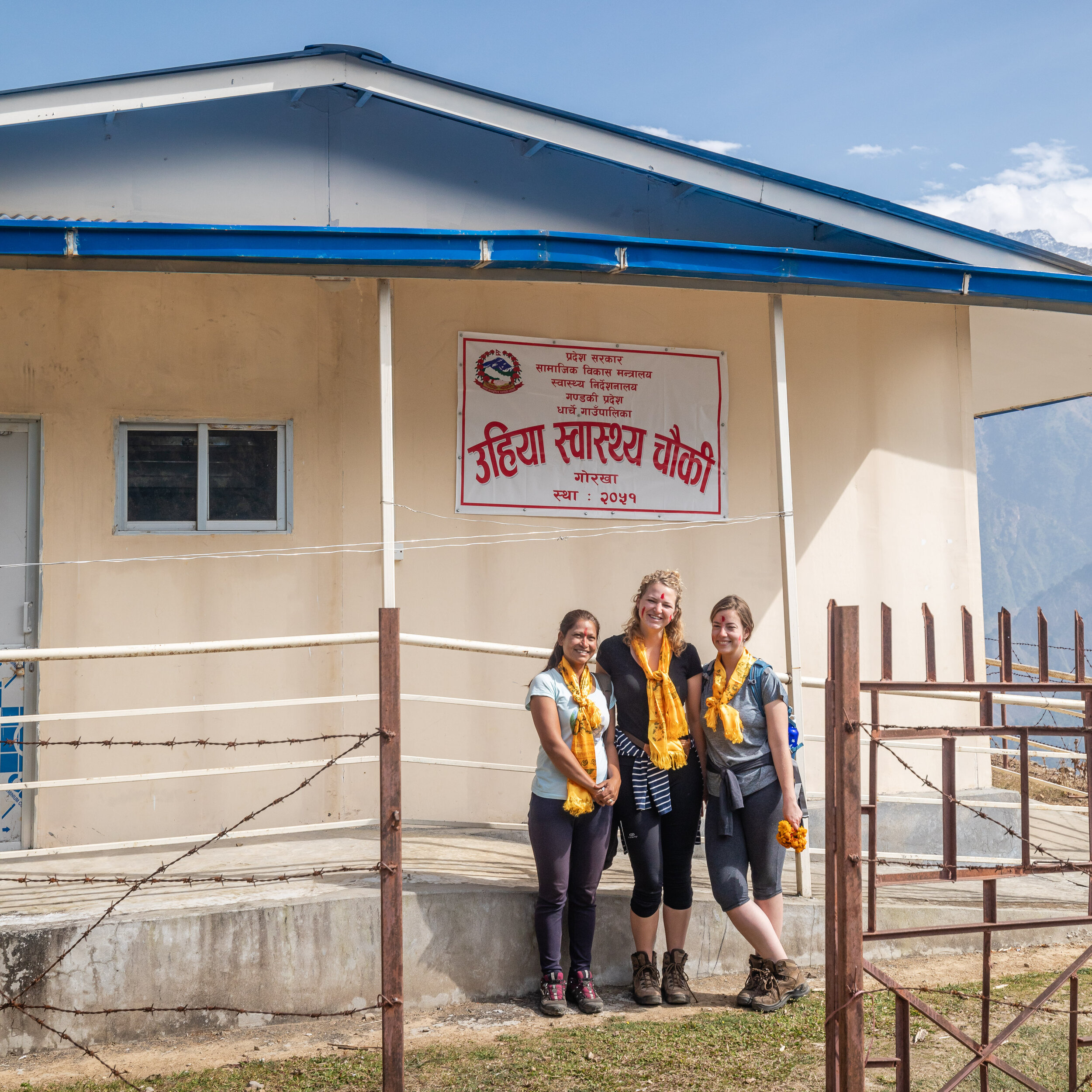


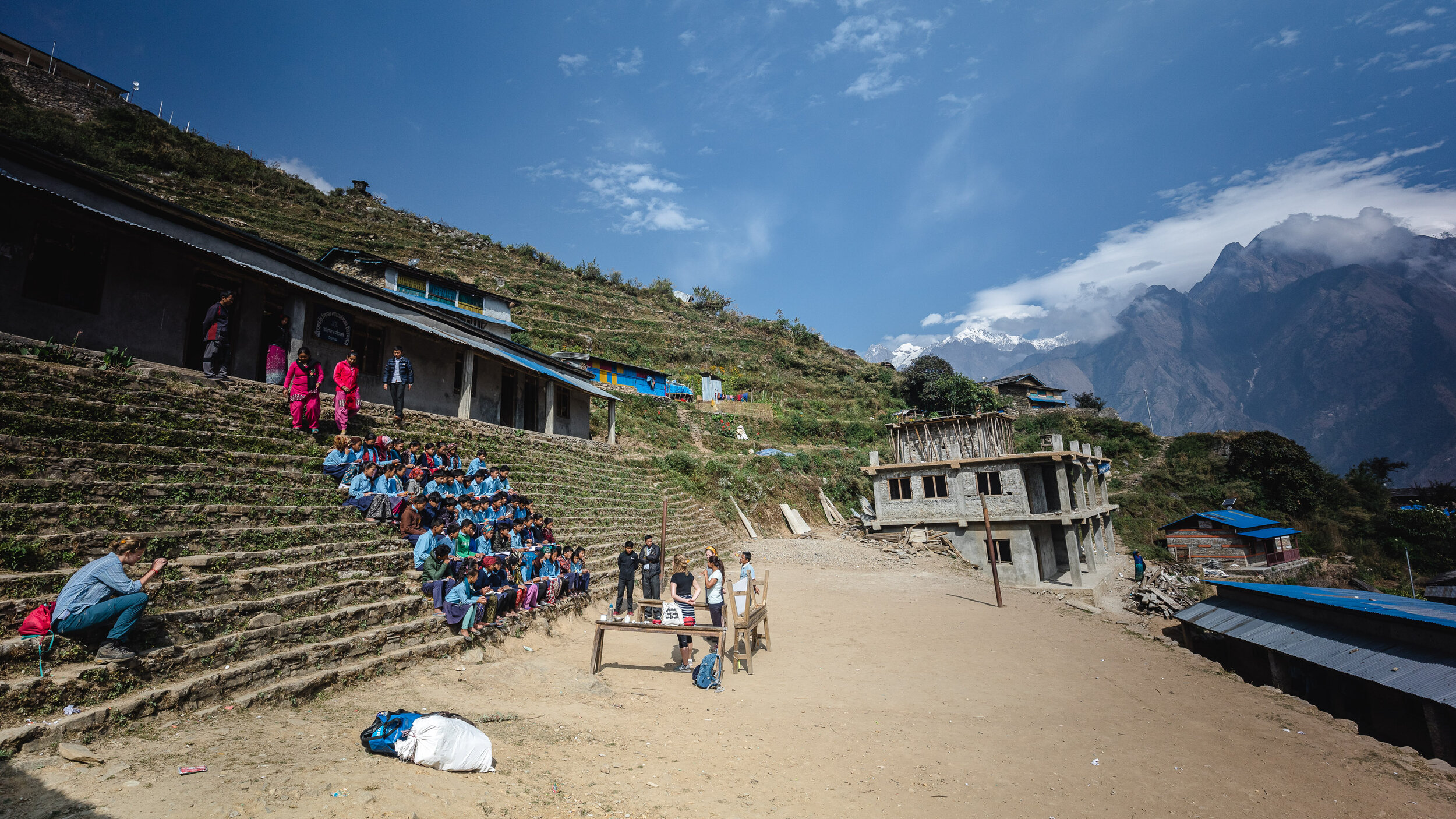


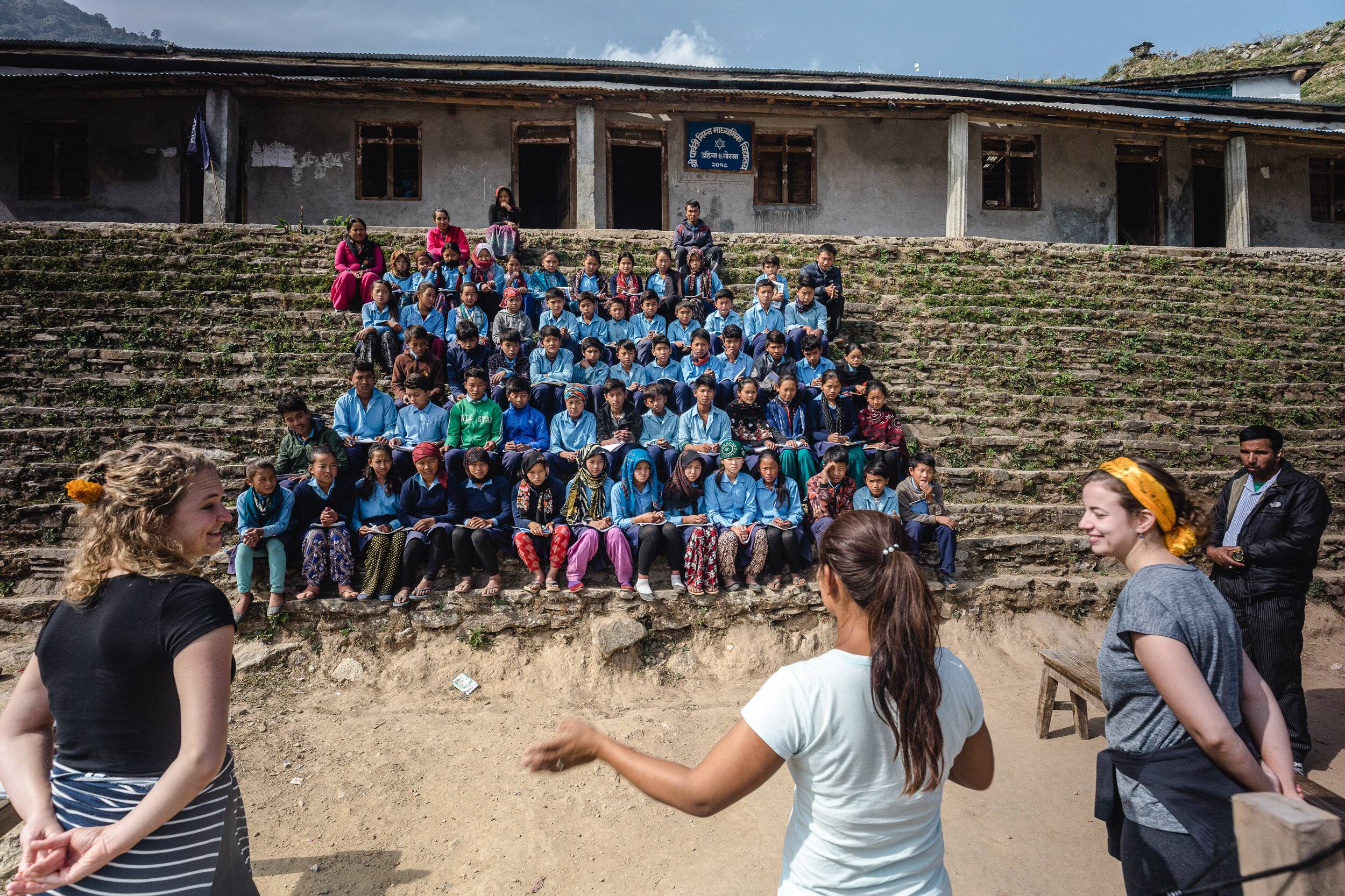


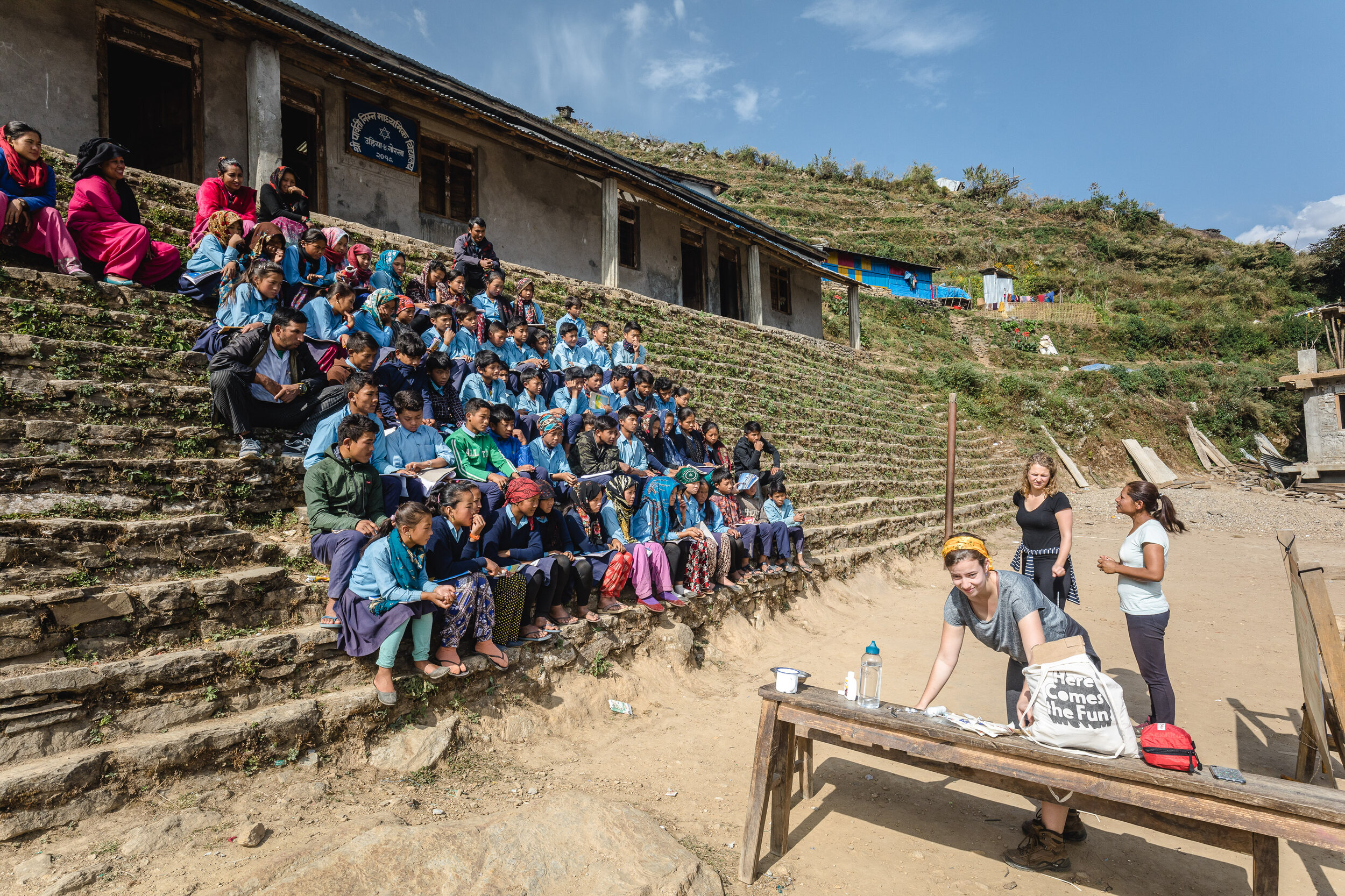
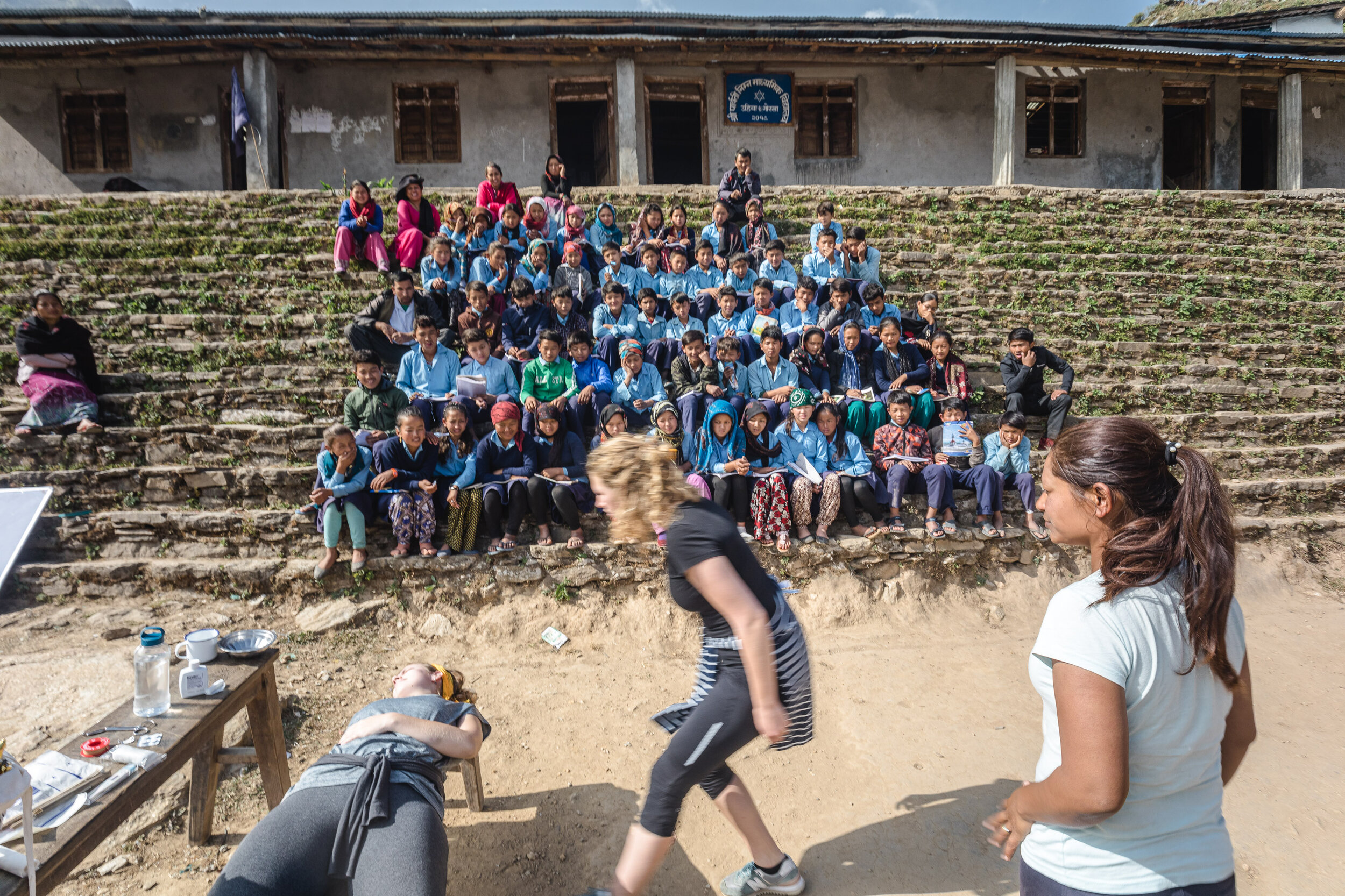

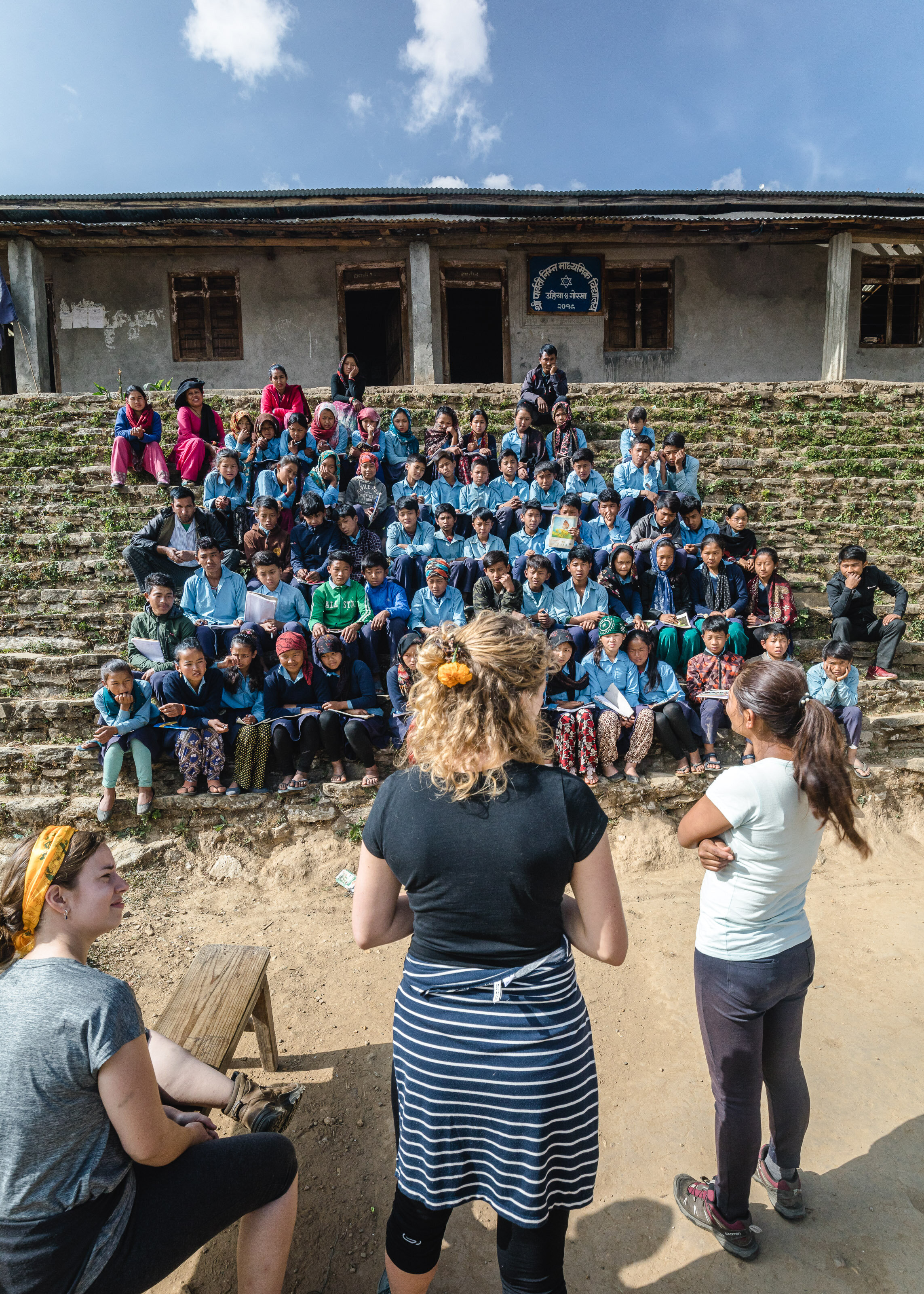

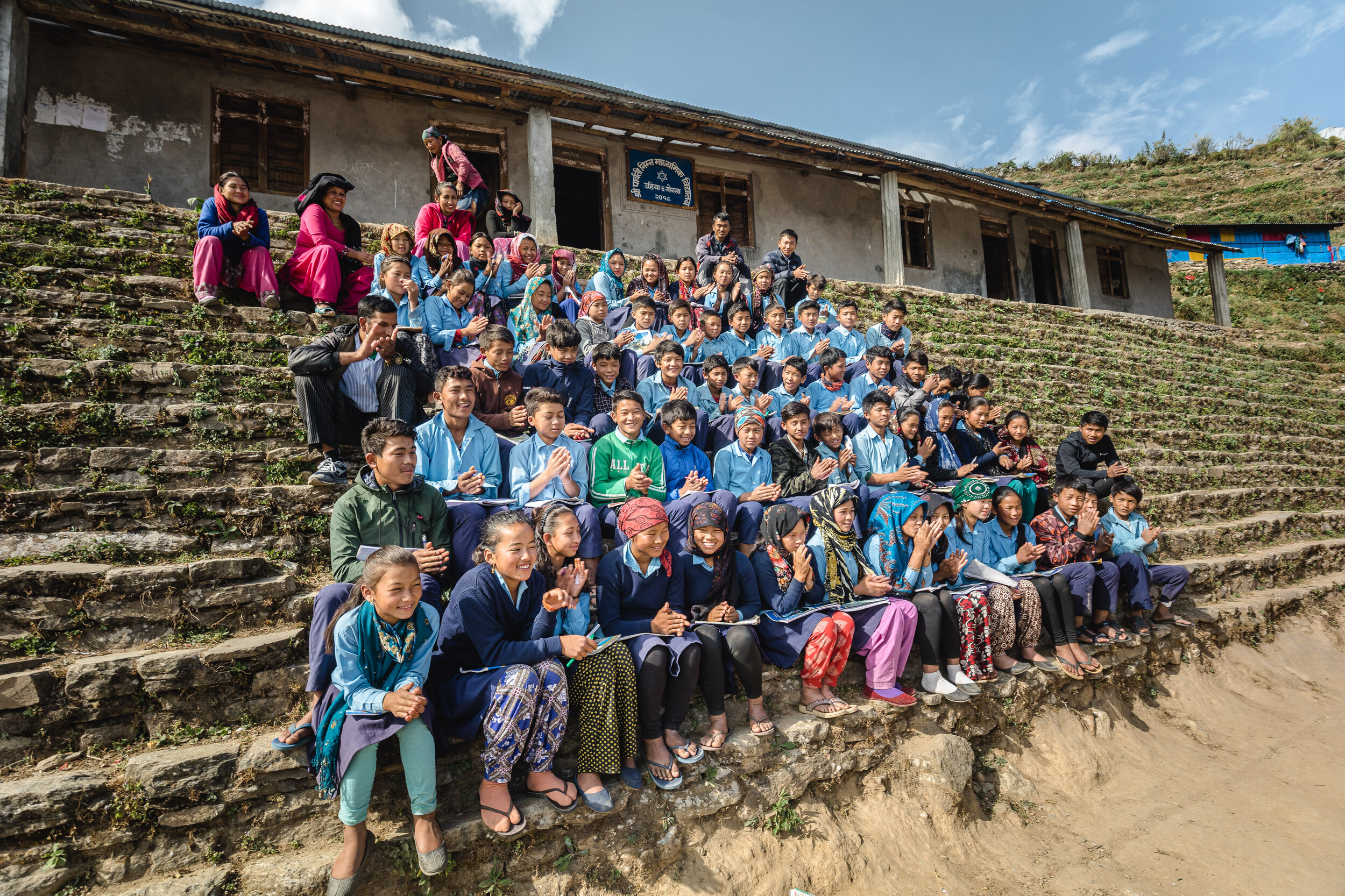
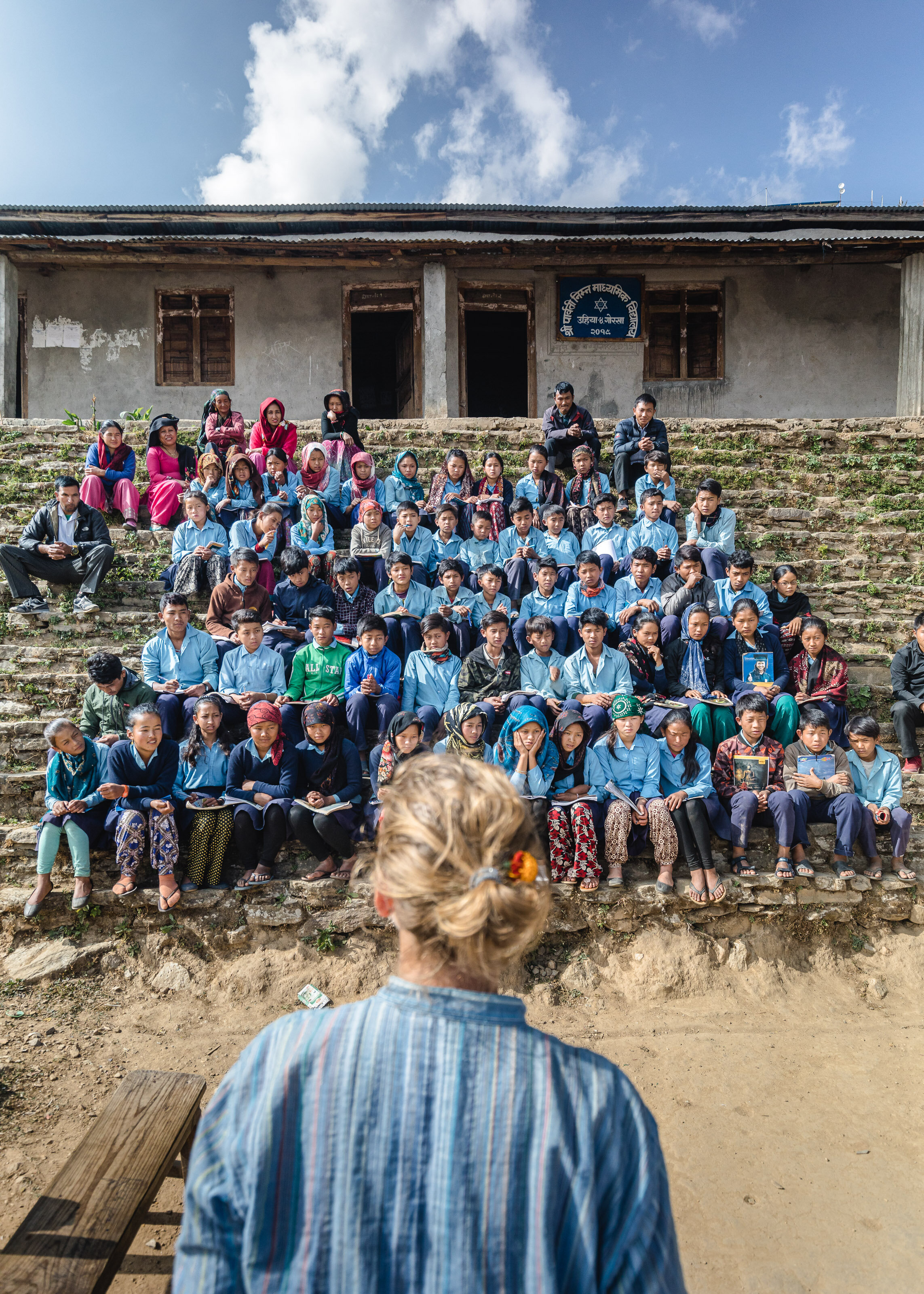

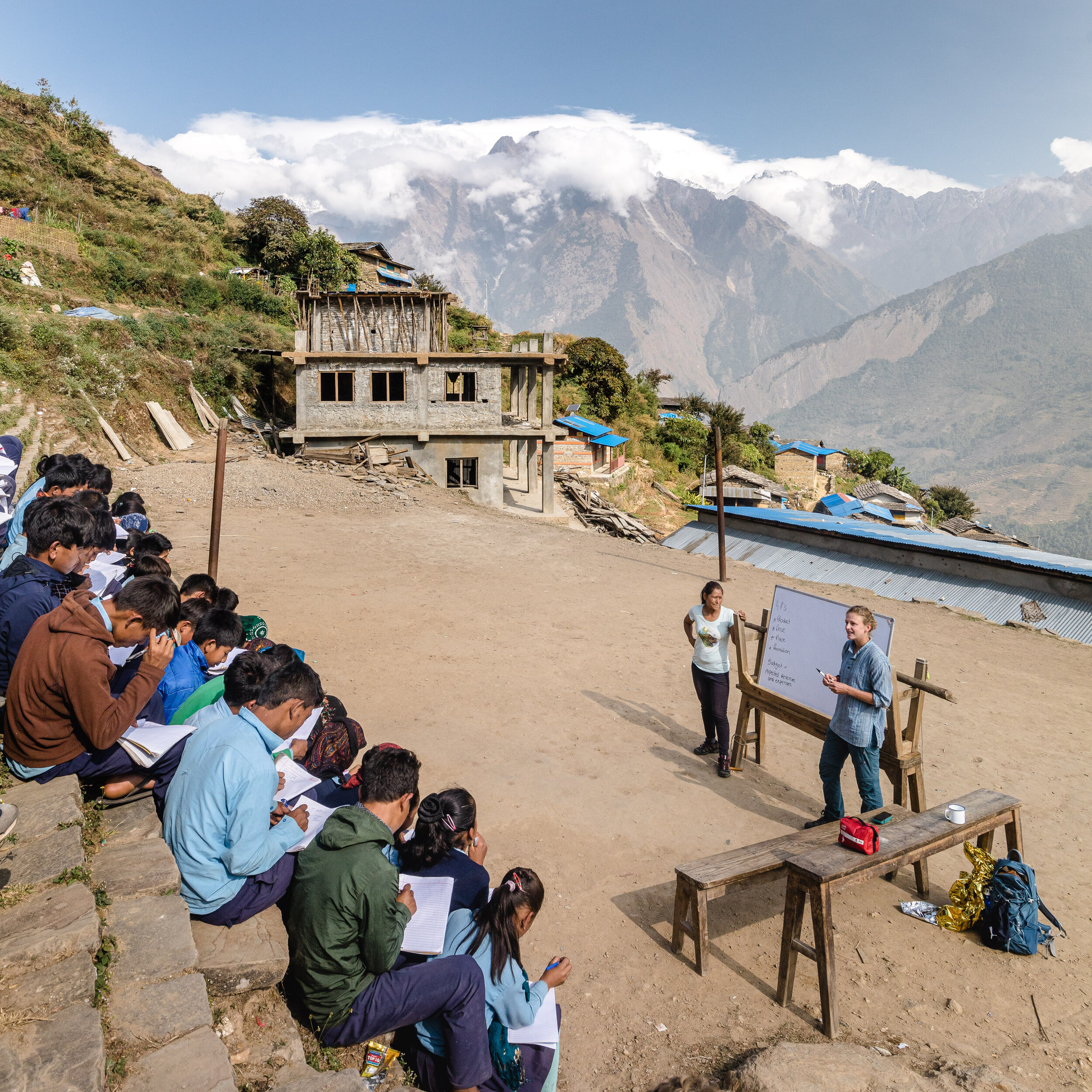



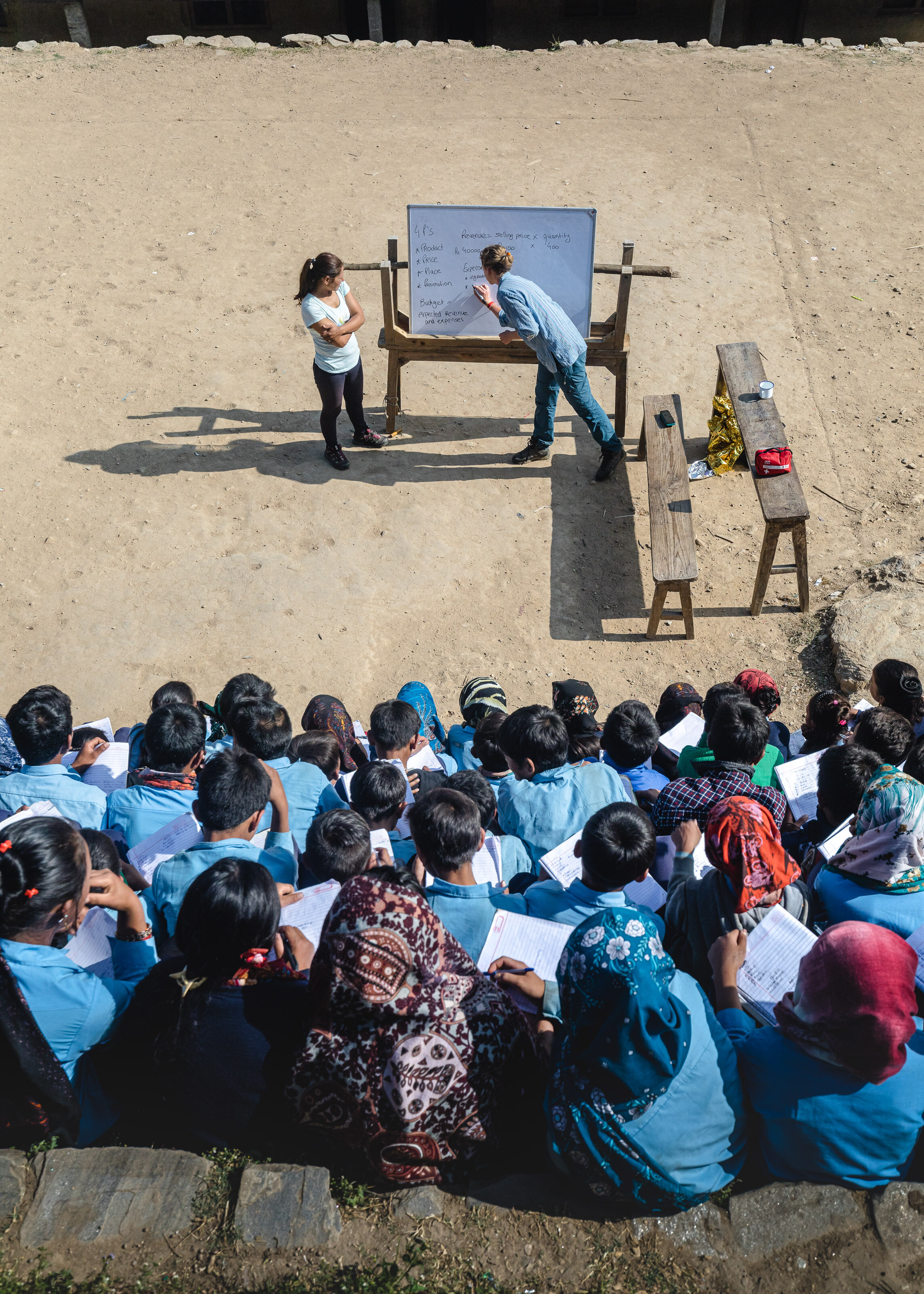




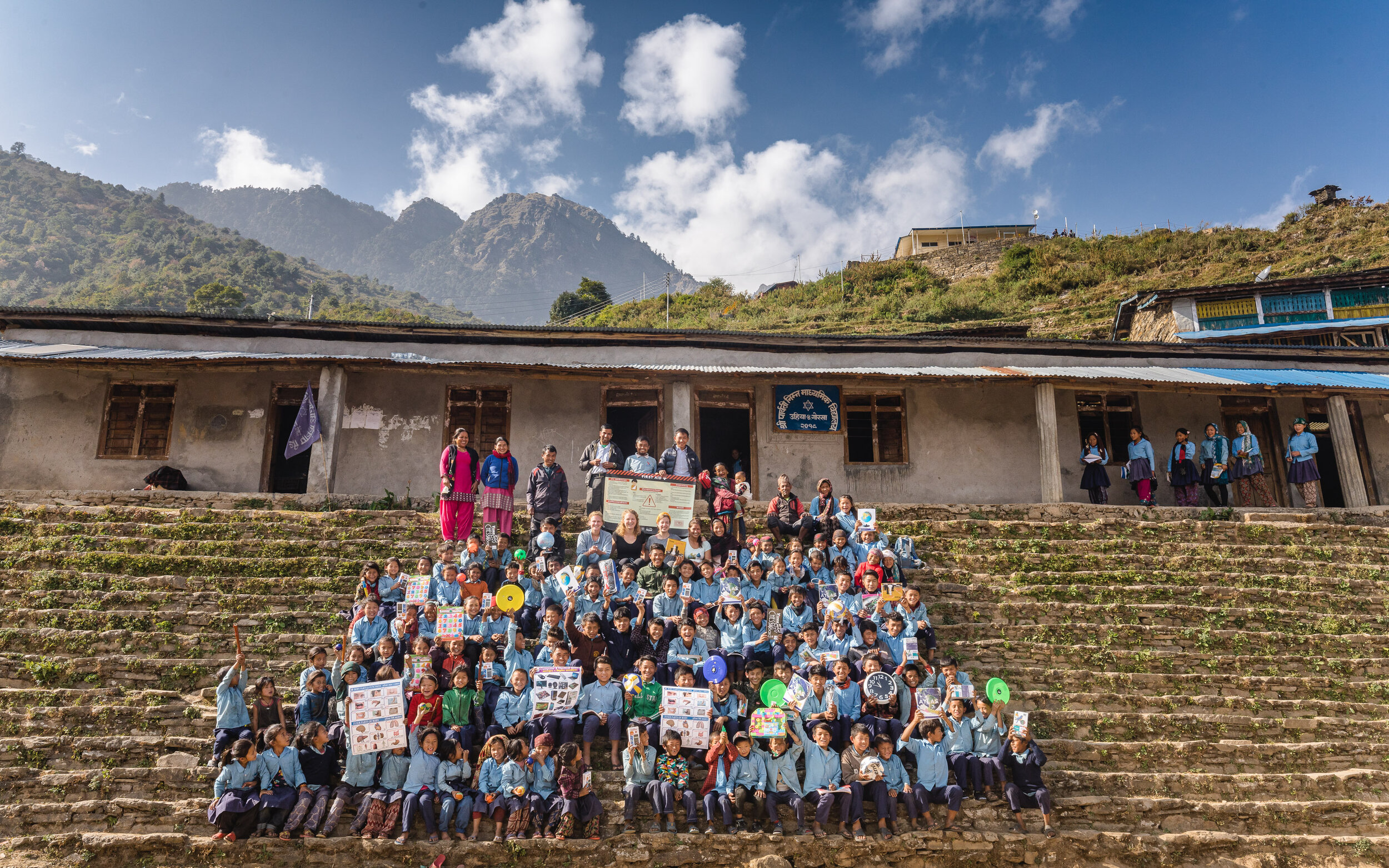




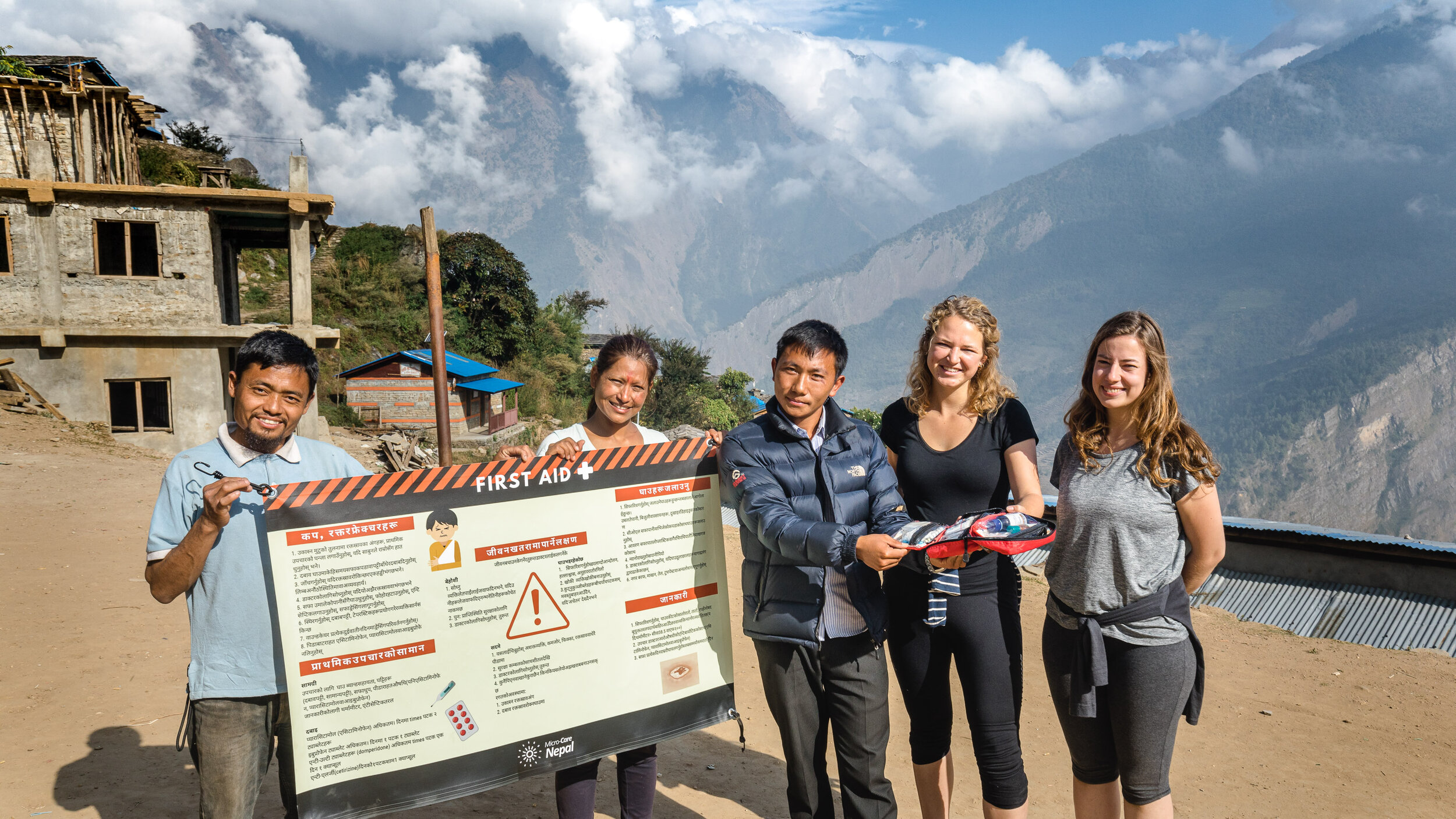
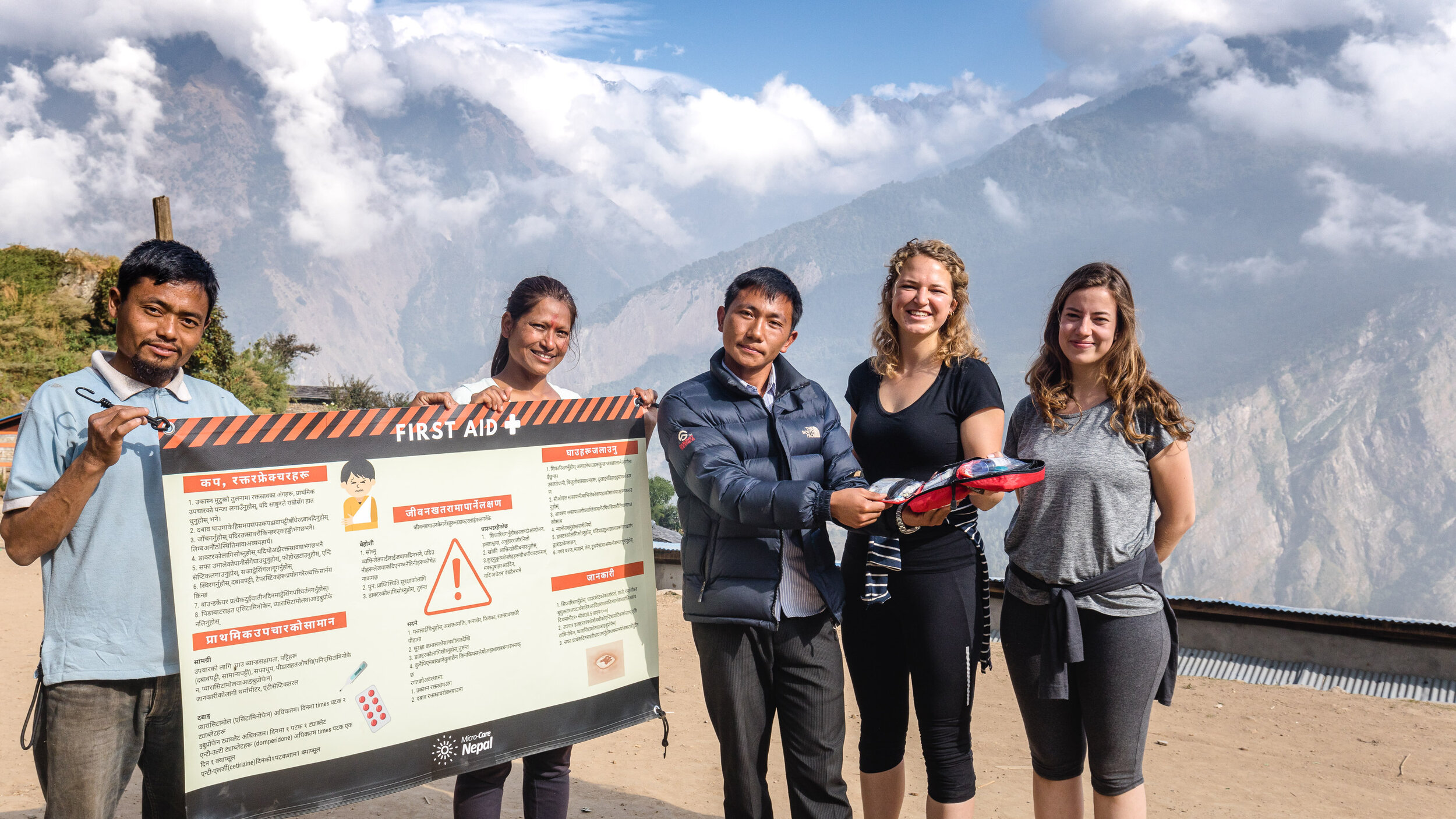

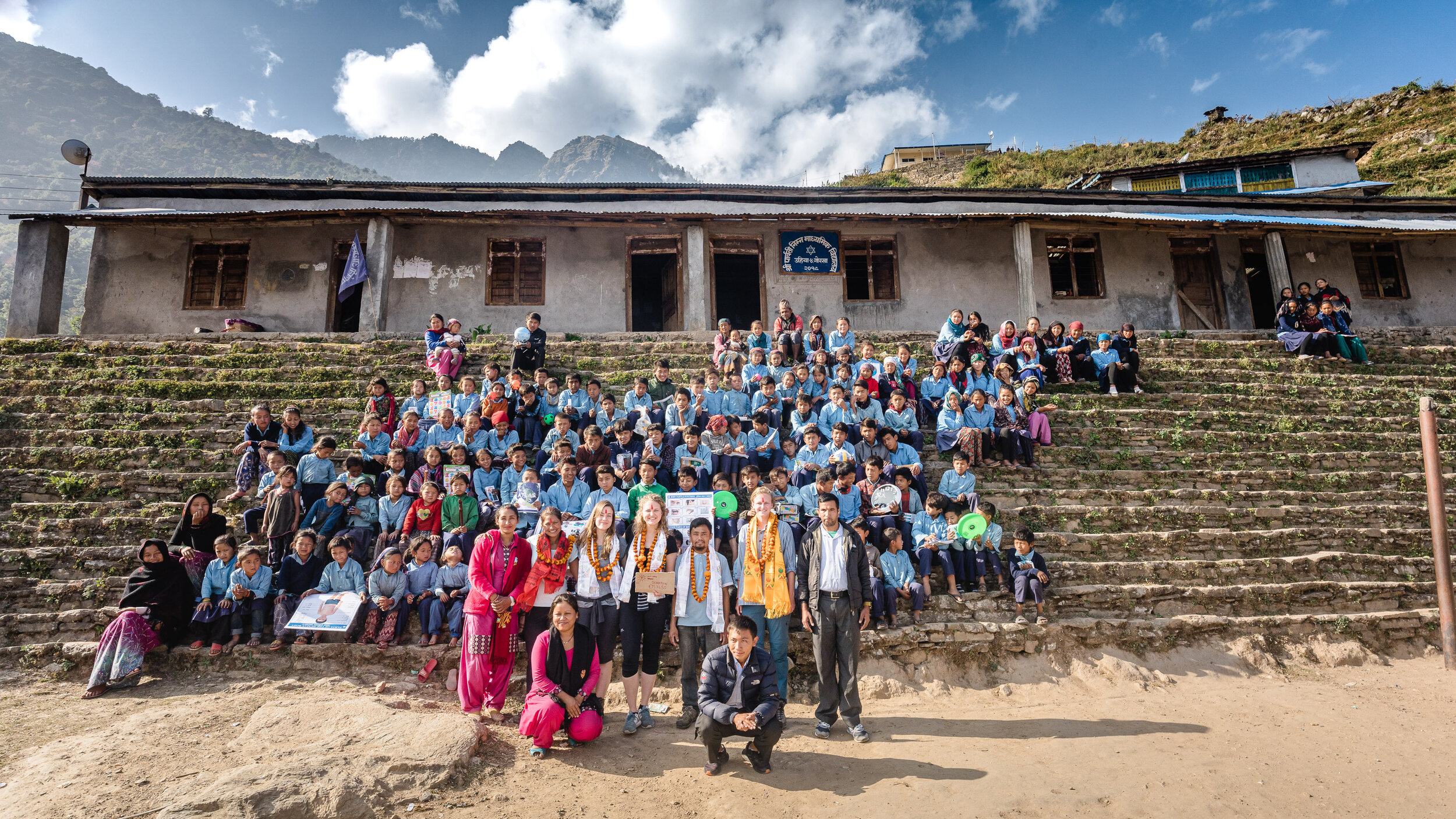

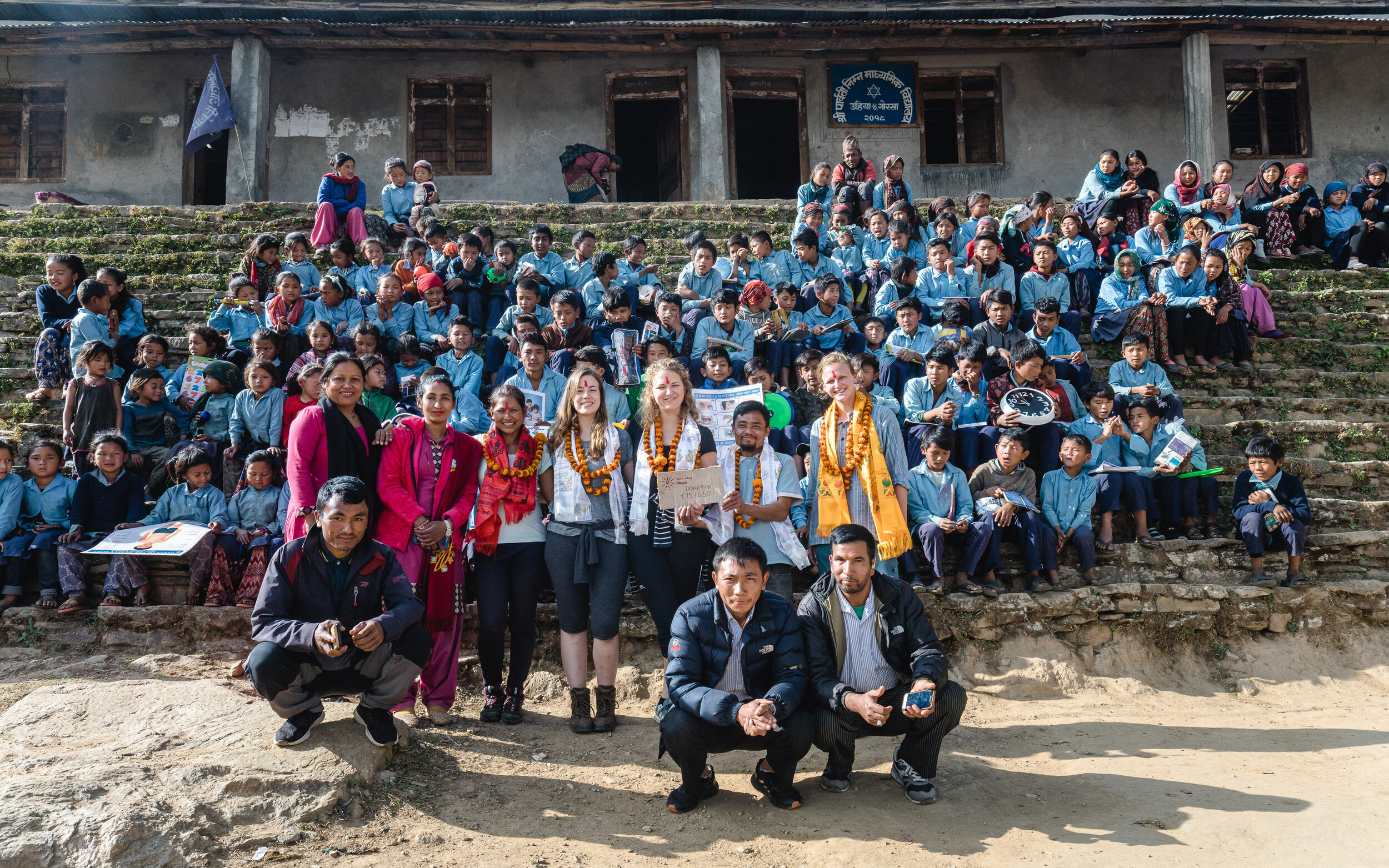
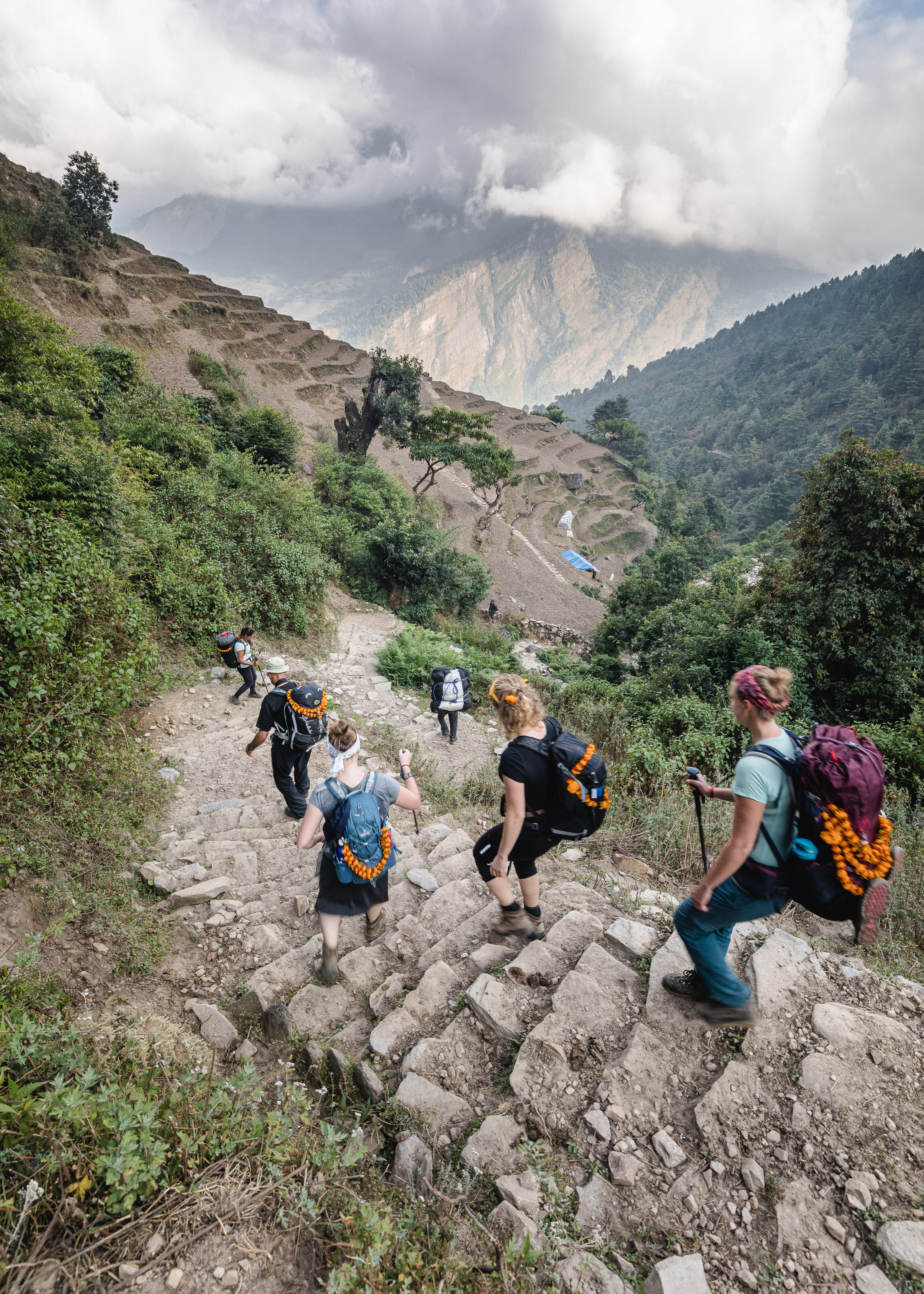
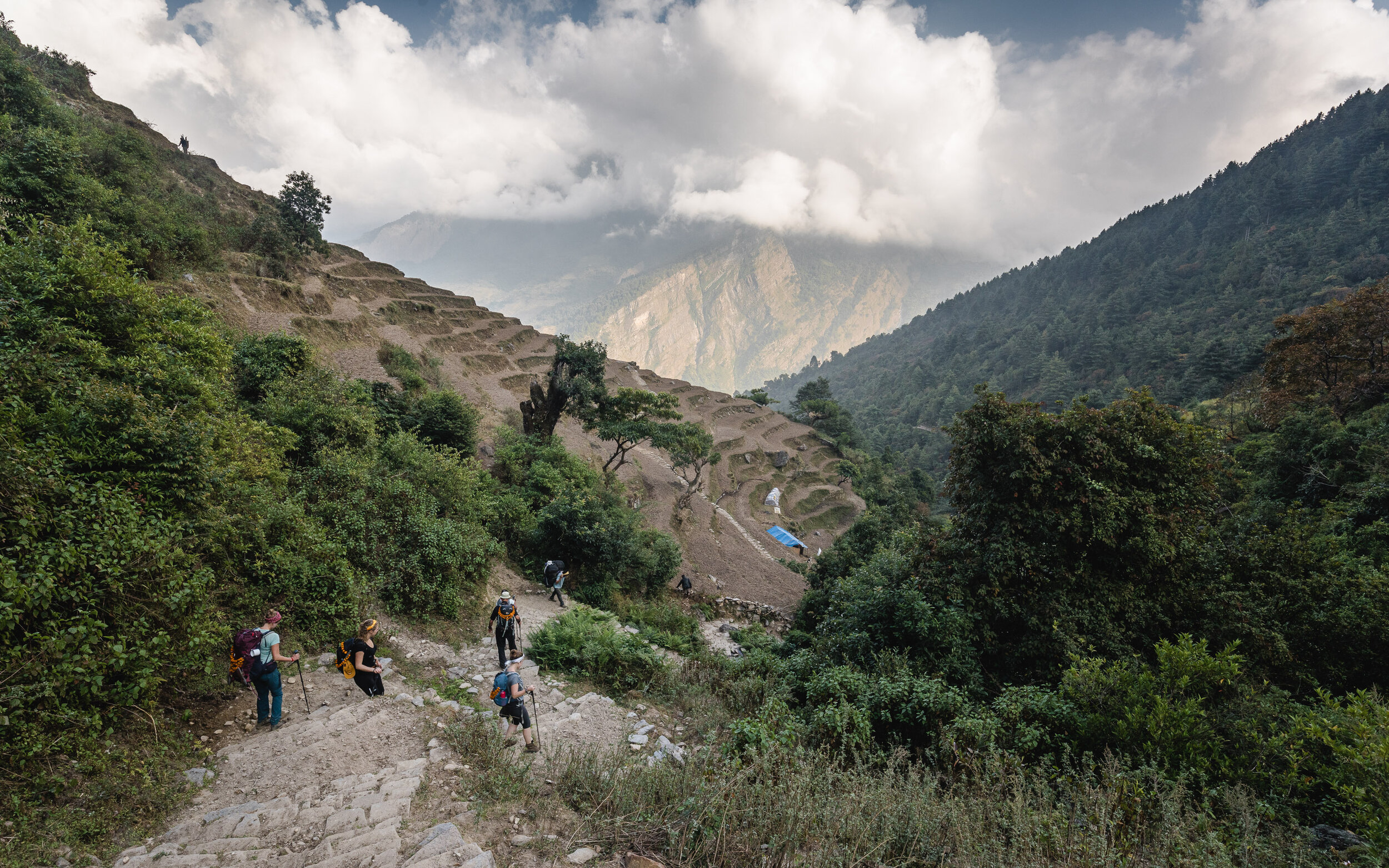
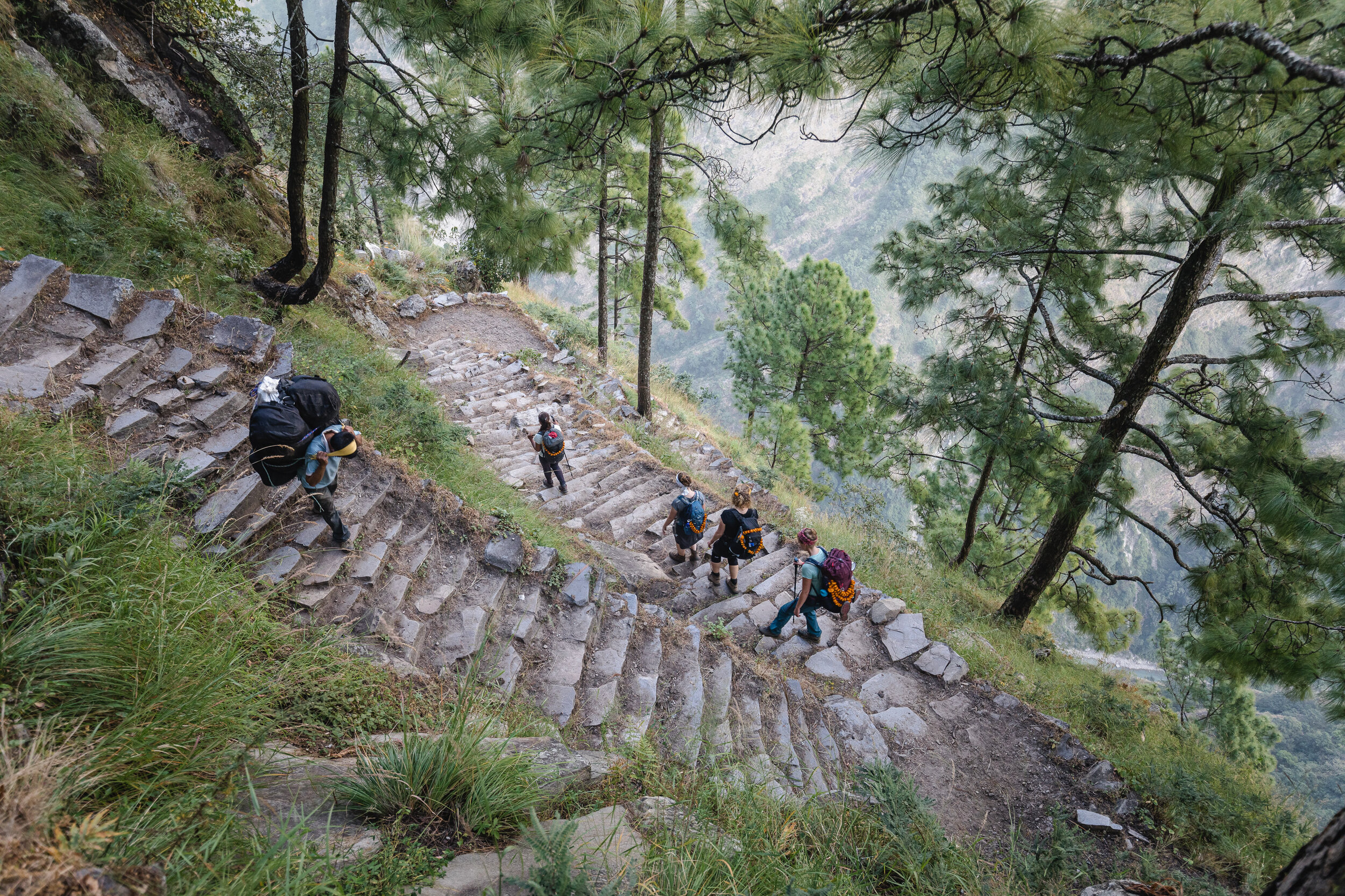
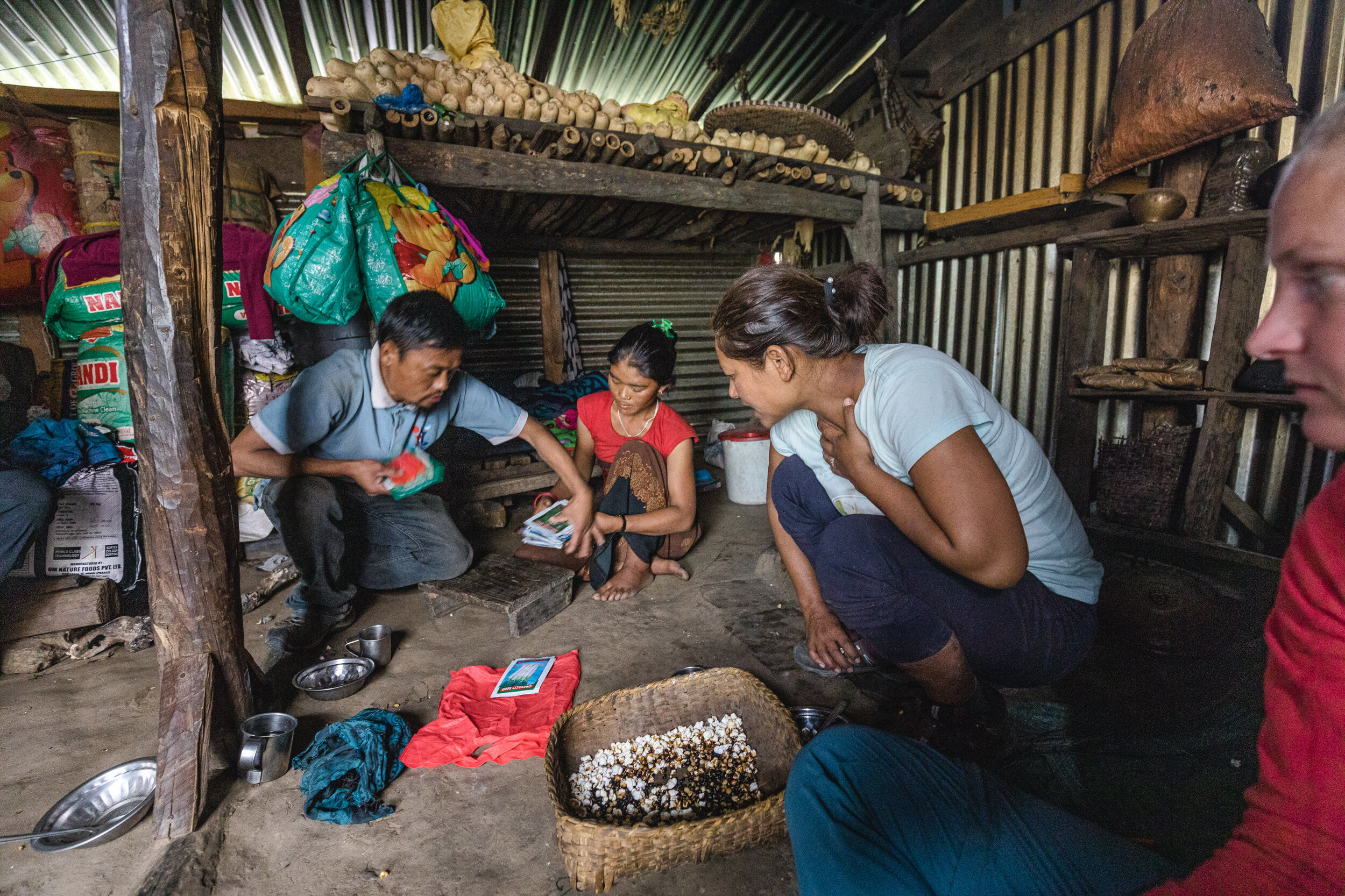
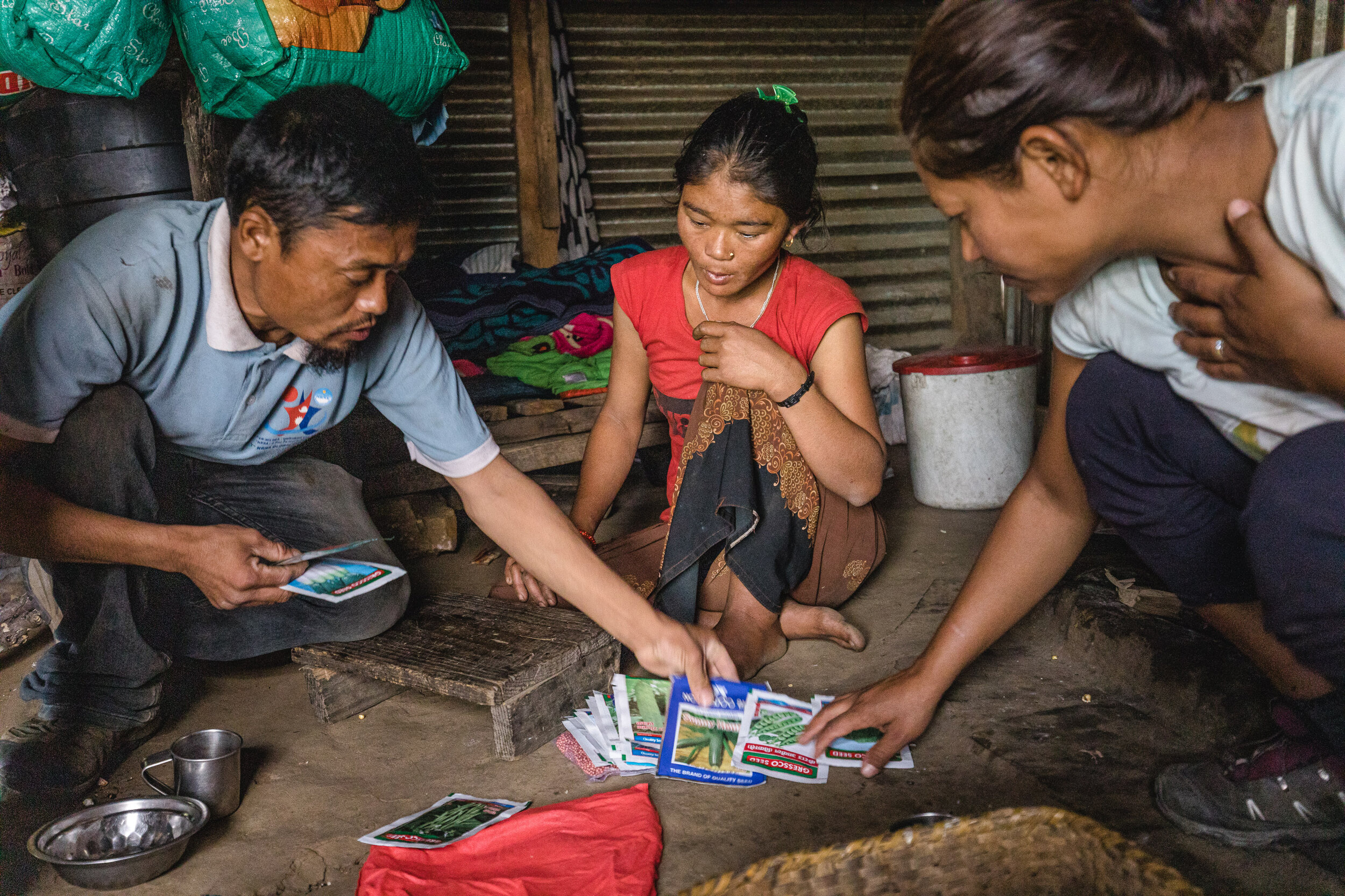
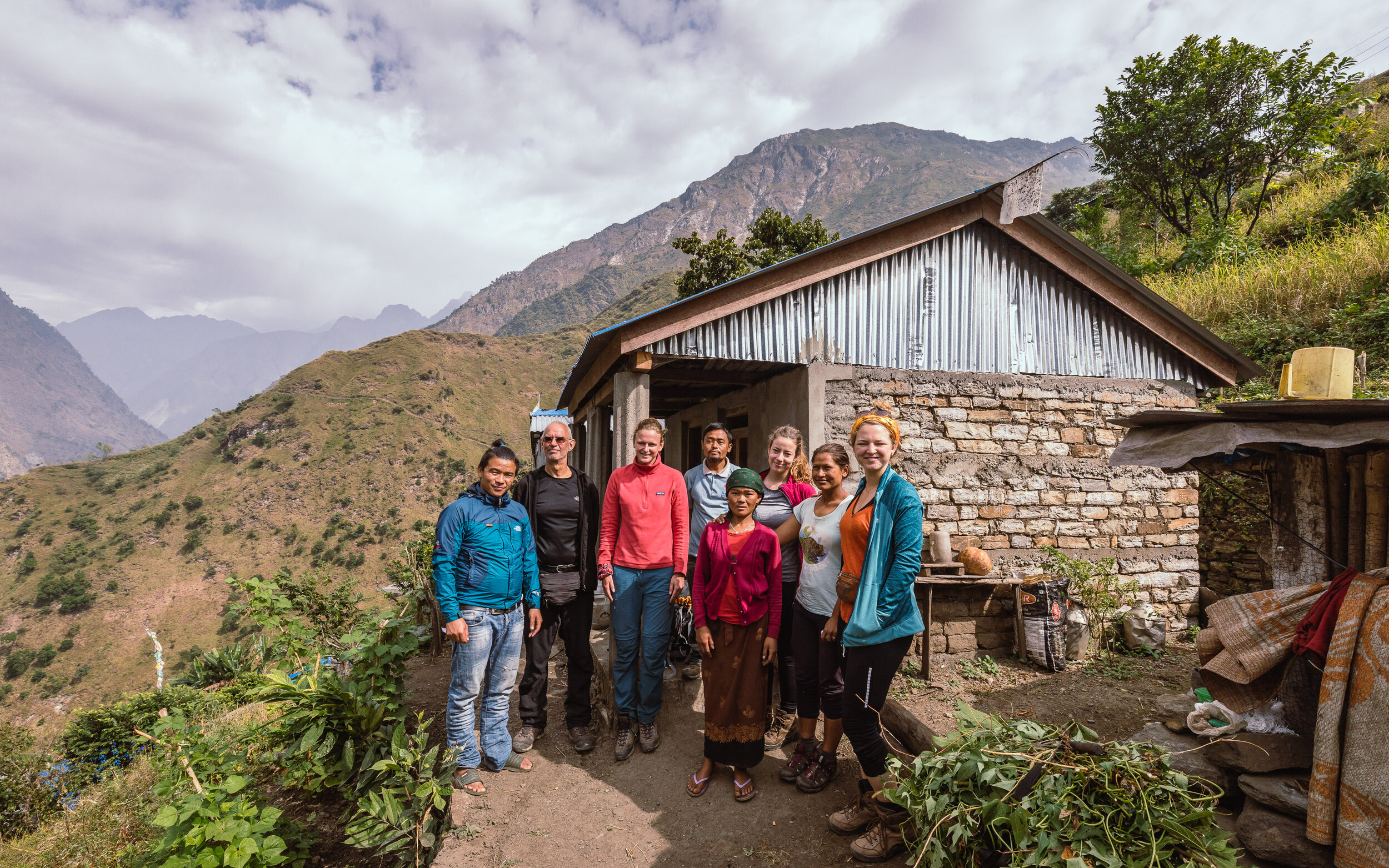





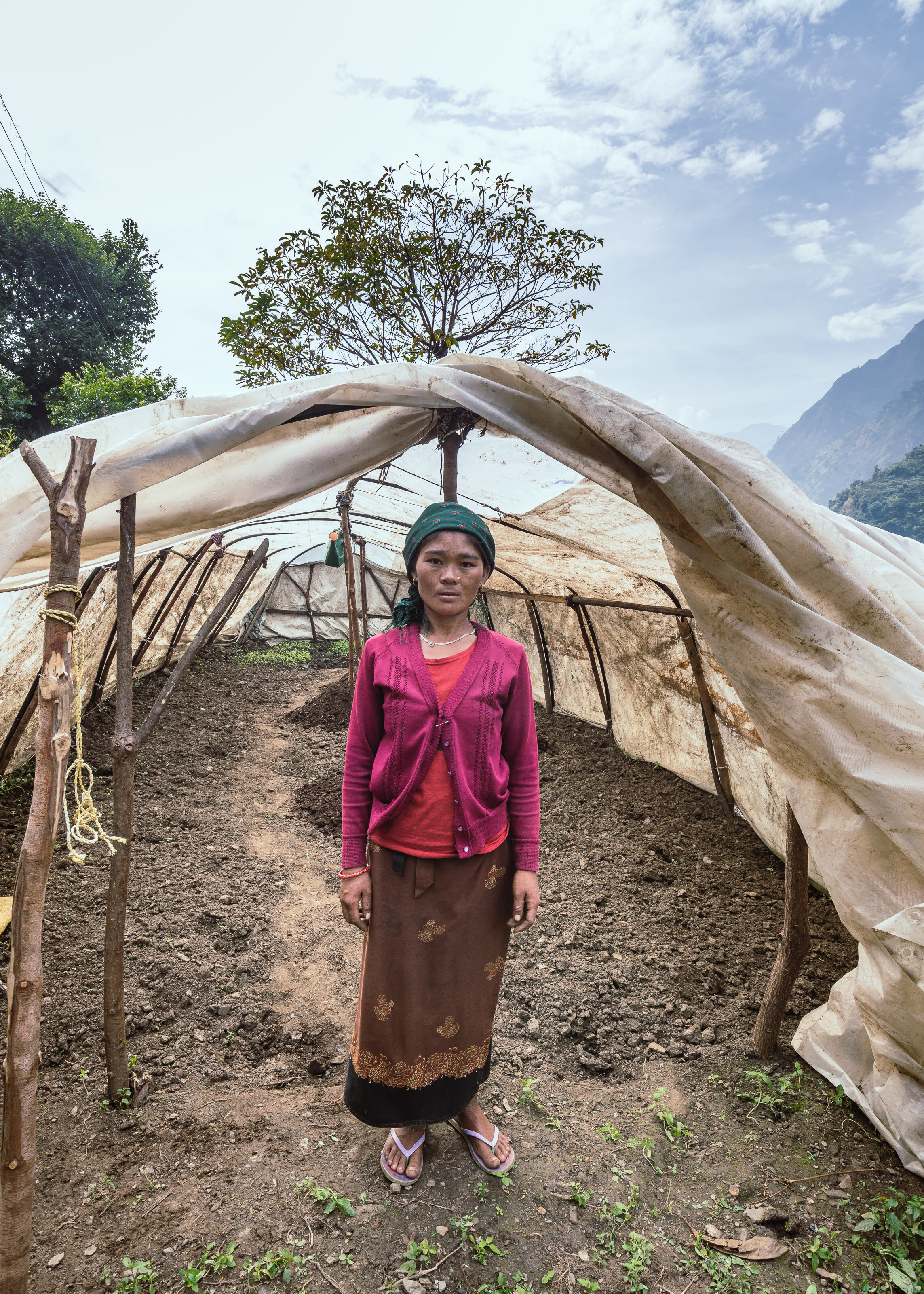


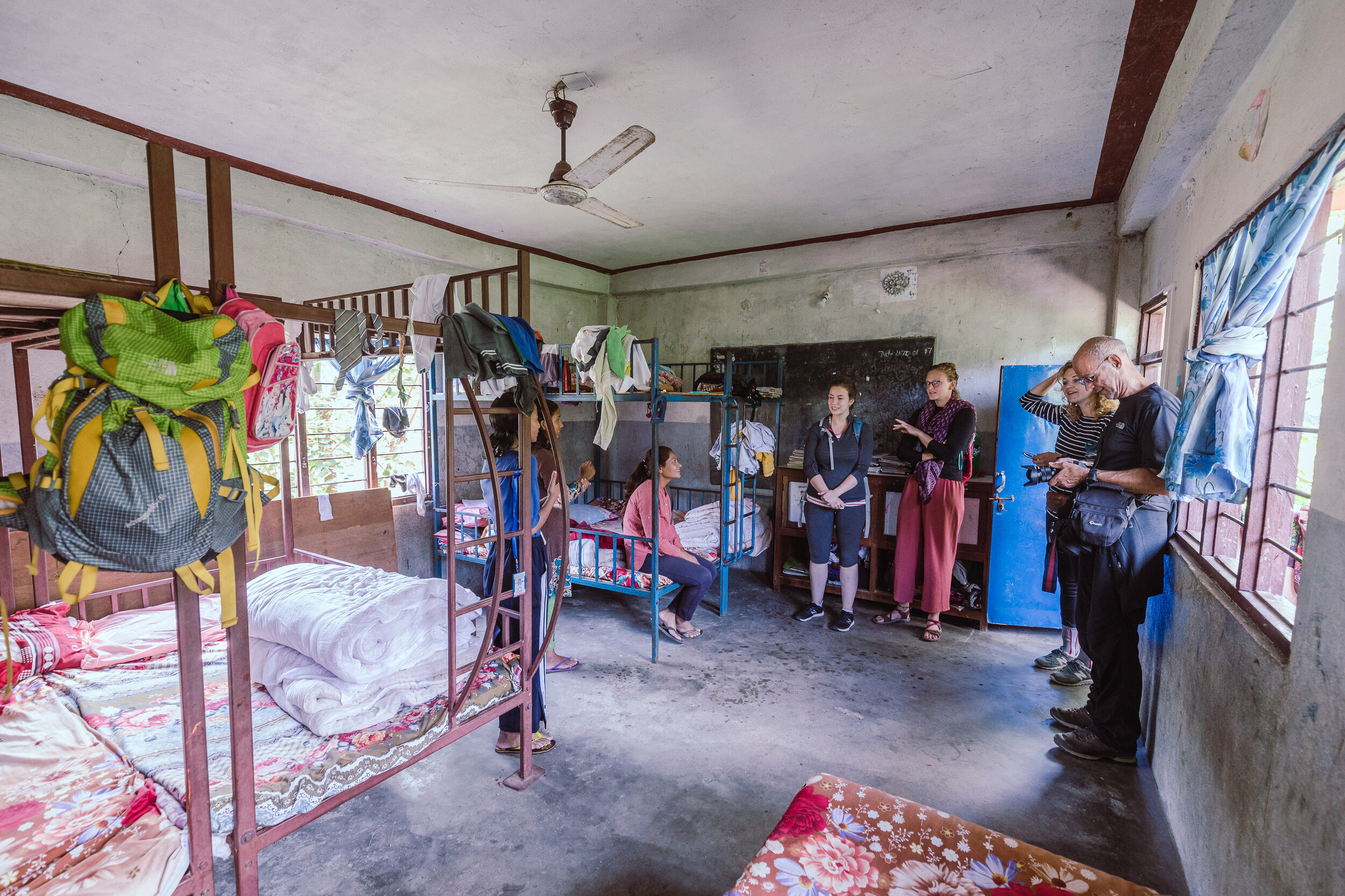
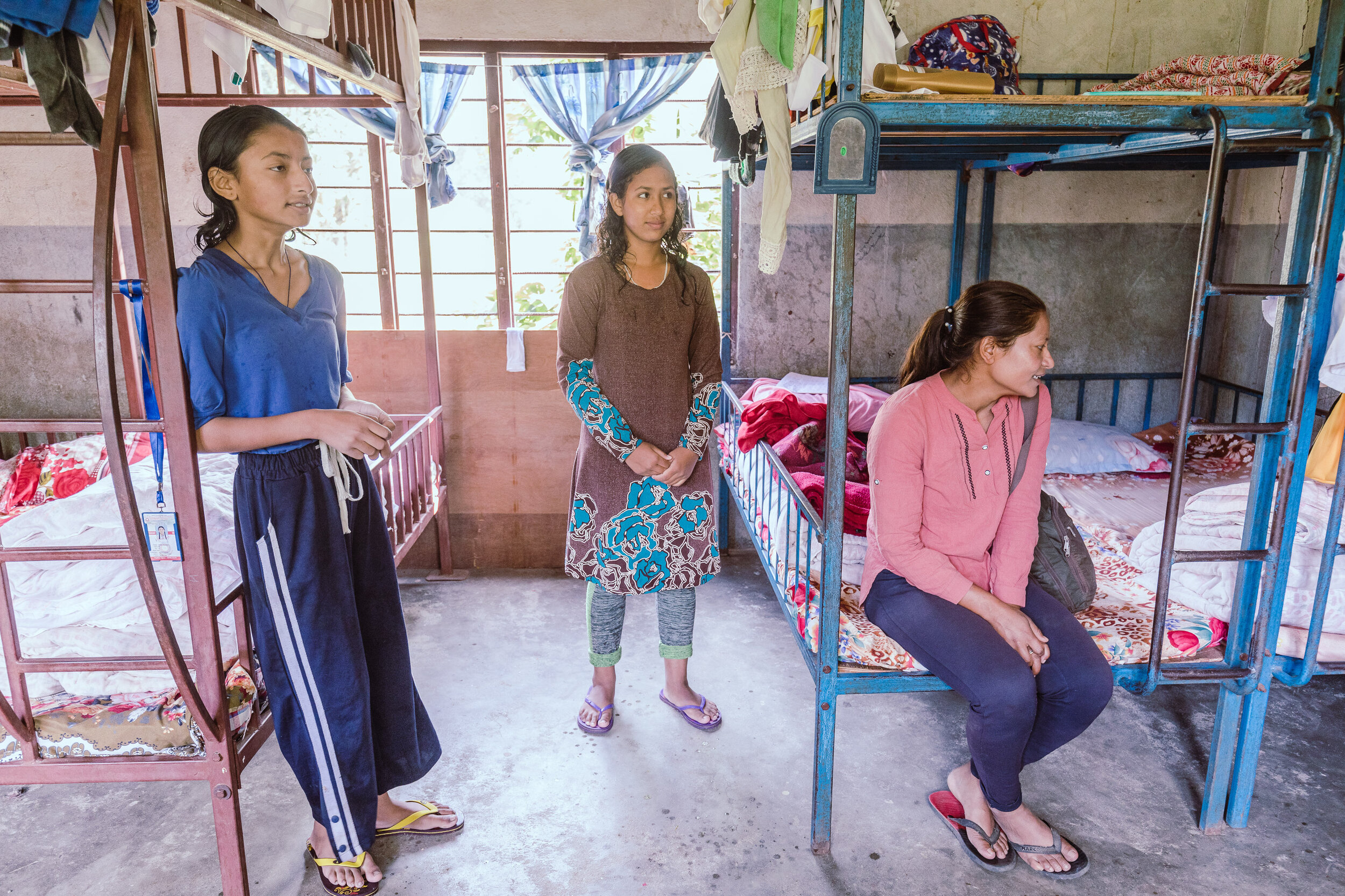
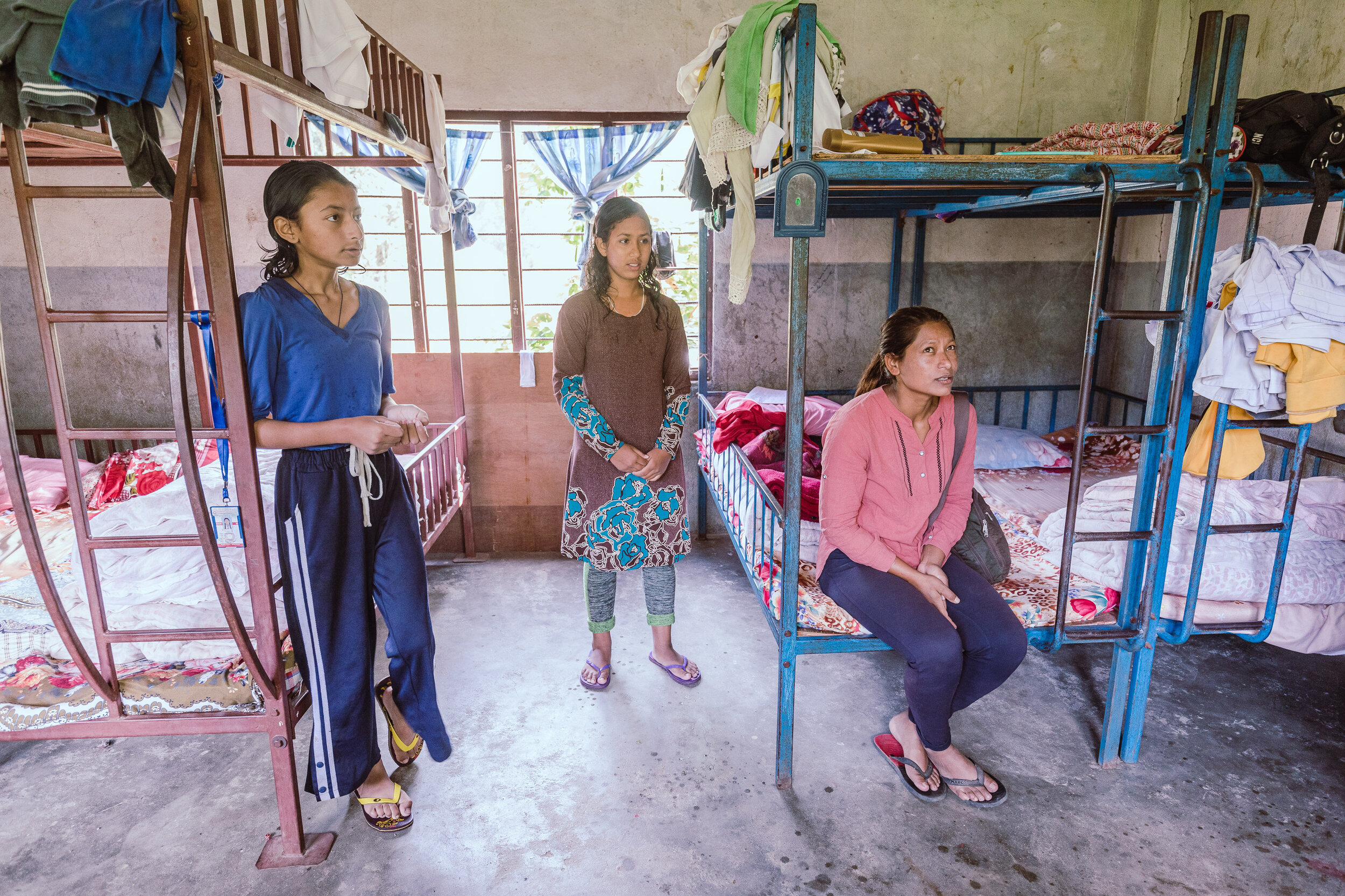
5 big Whiteboards for the English Boardingschool in Laprak
Project: Education Development
With the help of friend and teacher Aite Gurung we where able to support his Englisch Boarding School in Laprak with 5 big Whiteboards. This year we reserved budget as they asked for hel in previous year. Good quality whiteboards are difficult to find in Nepal and transportation is also very expensive as it have to on busses, jeeps and then be carried for a full day to reach Laprak. Great to see the Whiteboards arrive and the students started using them as a verry important part of education.
Project Education Material : Whiteboards for Gorkha Schools
We distributed in total 15 whiteboards to village is Gorkha district. 5 big whiteboards to the secondary school in the village of Wuyia and 5 big whiteboards to the school in Korla. See our video below to get to know more about this project.
Last part of Kushal Gurung his schoolfee of 2018/2019 year is paid
During Kushal his last exams of the school year 2018/2019 we had to pay the last part of his School Fee.
2 Laptops for Laprak Boarding School
Project : I.T. voor Educatie
At the end of 2018 we handed over two laptops to Aita Gurung, one of the teacher of the Laprak Boarding School, and also since the start of Micro-Care Nepal one of the main Nepalese contact in Gorkha district.
During the last week he helped us again during our trip from Arugat to Wuyia with organising and carrying 5 whiteboards to the village schools. During this time he could give me the photos he and the head of the school took after receiving the laptops at their school.
We where pleased to see they started using the two devices and giving the opportunity to introduce the world of I.T. to the children of the school. The students are feeling amazed to finaly see and be able to use computer for the first time in their lives.
Before they where only able to read and study about it and practice some typing on a white piece of paper where they would draw the typing bord on.
Goals for the Gorkha Aid Journey - April 2019
Whyia goals
Handover 5 new whiteboards to the school
Review the use of the donated laptop and projector
Visit the families of Rabina and Ganga and discuss the option of jumping class for both of the girls as proposed by the teacher team
Teach first-aid - Was to sick to teach
Dungla goals
Handover 5 new whiteboards to the school
Handover other school materials to one of the school teachers.
Macha Khola goals
Handover school materials to one of the school teachers.
Kerauja Besi goals
Review the greenhouse of Thuli Gurung
Handover new seeds
See the living conditions of the family and housing
Cultural Excursion for Rabina and Ganga
Cultural excursion for our students Rabina and Ganga
We picked up Rabina and Ganga at their Boarding sSchool in Arugat and went to Gorkha to see the Royal Palace, Kalika Temple and the Gorkha Museum. Our goal was to make them interested about culture, to get more familiar with the two and make them more comfortable with us as well. We had a great time and a itdiscussed their options on skipping the 5th grade and as the head of the school suggested continue directly to grade 6. We coached them on perseverance, failure and expectations and let them know if they would have difficulties and worked hard we would always support them. They finaly diced to go for it and later it would turn out this was a good decision.
A memorable time with our two brave students Rabina and Ganga, now studying in Arughat, Dhading. On their free day the four of us went on a cultural student trip to go back in time, to the time of the Gorkha Kingdoms.
See our video of the excustion
Photos from the excursion:
#ngo #stichting #volunteer #nepal #education #students #studenttrip #excursion #gorkha #durbar #microcarenepal
Education Material for Gorkha District (2018)
Rabina en Ganga, naar Boarding School in Arughat
RABINA EN GANGA NAAR BOARDING SCHOOL
Na Rabina en Ganga twee jaar geleden voor het eerst ontmoet te hebben is alles eindelijk rond. Rabina en Ganga hebben we inmiddels vanuit het hoog en afgelegen bergdorpje Uiya (Whuya) naar de Boarding School in Arughat gebracht.
De afgelopen 3 jaar hebben we meerdere malen studenten en arme gezinnen welke hun zoon of dochter niet konden ondersteunen in hun studie, geholpen met een bijdrage. Echter nu voor het eerst dragen we volledig zorg voor de studie van 2 kinderen.
OVER RABINA EN GANGA
Beide komen uit een kansarm gezin. Beide van Dalit (lagere kaste) afkomst en het afgelegen bergdorpje Uiya.
NEPALEES DINER EVENEMENT
Tijdens het Nepalese diner Evenement van 27 mei in Brabant en 3 juni in Amsterdam zal er een uitgebreide verslag gegeven worden met video beelden, over de beide kinderen en het sponsoren van onderwijs aan kinderen in Nepal.
Hier meer over het Nepalese diner Evenent en het reserveren.
WIJ ZOEKEN NOG SPONSOREN
Studeren aan een Engelstalige Boarding School in Nepal biedt veel mogelijkheden voor de toekomst maar is ook kostbaar. Per jaar betalen wij ruim € 1000 ,- per kind.
Voor Rabina en Ganga zoeken wij nog mensen die een bijdrage willen leveren aan hun studie en een betere toekomst. Wil je helpen doneer dan nu en vermeld hun beide namen in het opmerkingen veld.
VRIJWILLIGER Gert Groenewoud, OVER ZIJN ervaringen met MICRO-CARE NEPAL
Written by: Gert Groenewoud
Educatie materialen & kleding voor scholen in Gorka en Solu-Khumbu district.
Over the past few years it has become very clear to me that I wanted to give something back to the world, but I was not sure what this could be.
The earthquakes of 2015 hit me…To see small villages being completely destroyed, infrastructure destroyed, seeing people dying, amongst them children, made me want to do something. For me, this was the moment I realized that I wanted to help Nepal, but I was not sure how.
Let me introduce myself to you. My name is Gert Groenewoud. I am 50 years of age, married to Petra and have 2 children, Jesse and Zoe. I remembered Nepal from the time I spent there on my honeymoon some years ago as being a beautiful and welcoming country. The people were always smiling even when they hardly had anything. A friend introduced me to Micro-Care Nepal. After meeting Pim (Founder of Micro-Care Nepal) it was even more clear that I could really do something for Nepal.
Micro-Care Nepal stands for small projects in the most remote places of Nepal. In all their projects they work closely together with local people.What makes me want to start projects with Micro-Care Nepal is that they really improve the people’s lives. And in a sustainable way. The projects focus on the poorest in small remote mountain villages. Micro-Care Nepal is different because they teach people how to manage the projects themselves. On the website www.microcarenepal.org you can find a choice of all types of donations for the projects.
All of them are very deliberate and personal. And these days more important; you will be able to see what we do with your donations. You will receive newsletters with stories and photos of the families we help with your donations. Also want to stay informed about our initiatives? Subscribe on microcarenepal.org for the newsletter.
My personal motivation? The healthier and happier people I see, the better. I hope with this message I have given you something to think about. If so, please make a donation because Nepal needs it!
Thank you for your support,
Gert, Groenewoud
Februari 2017
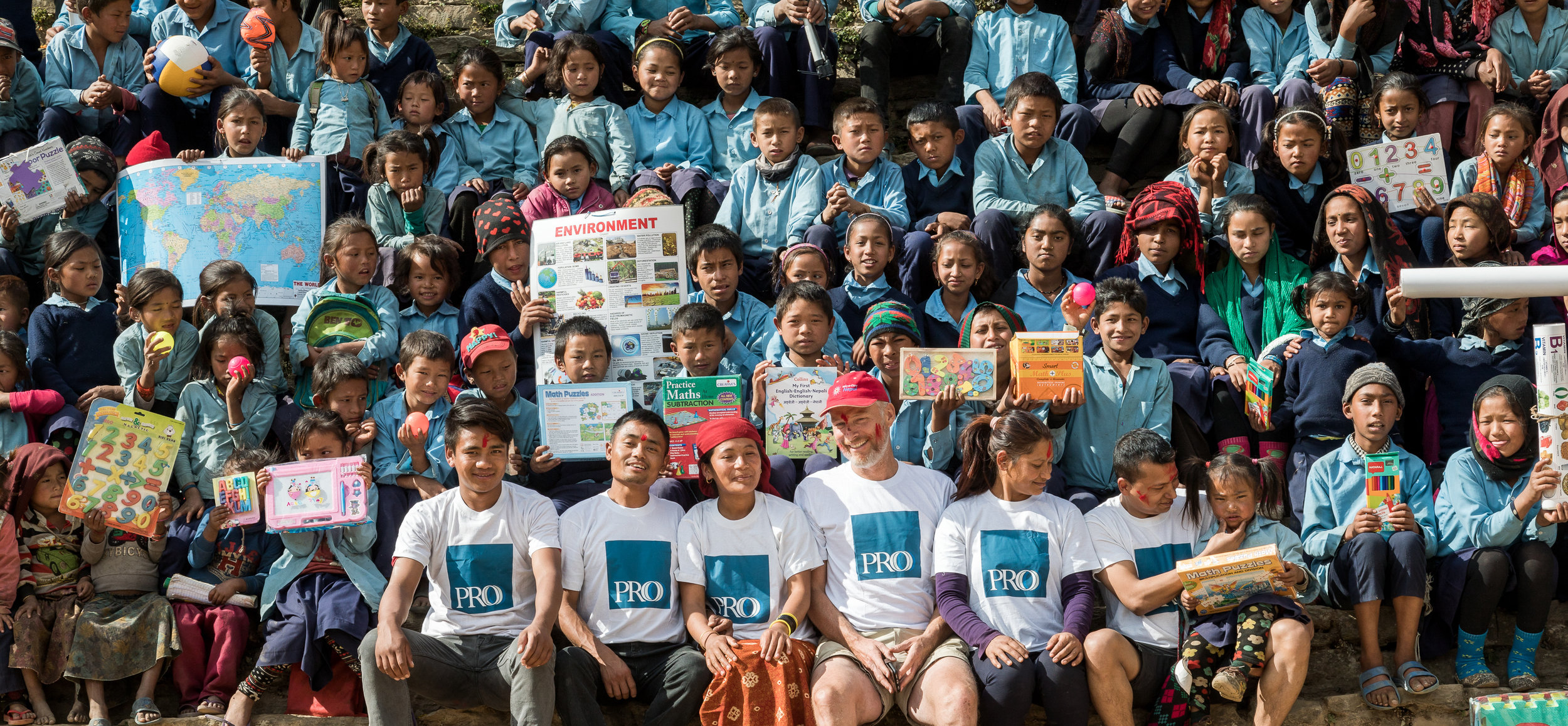
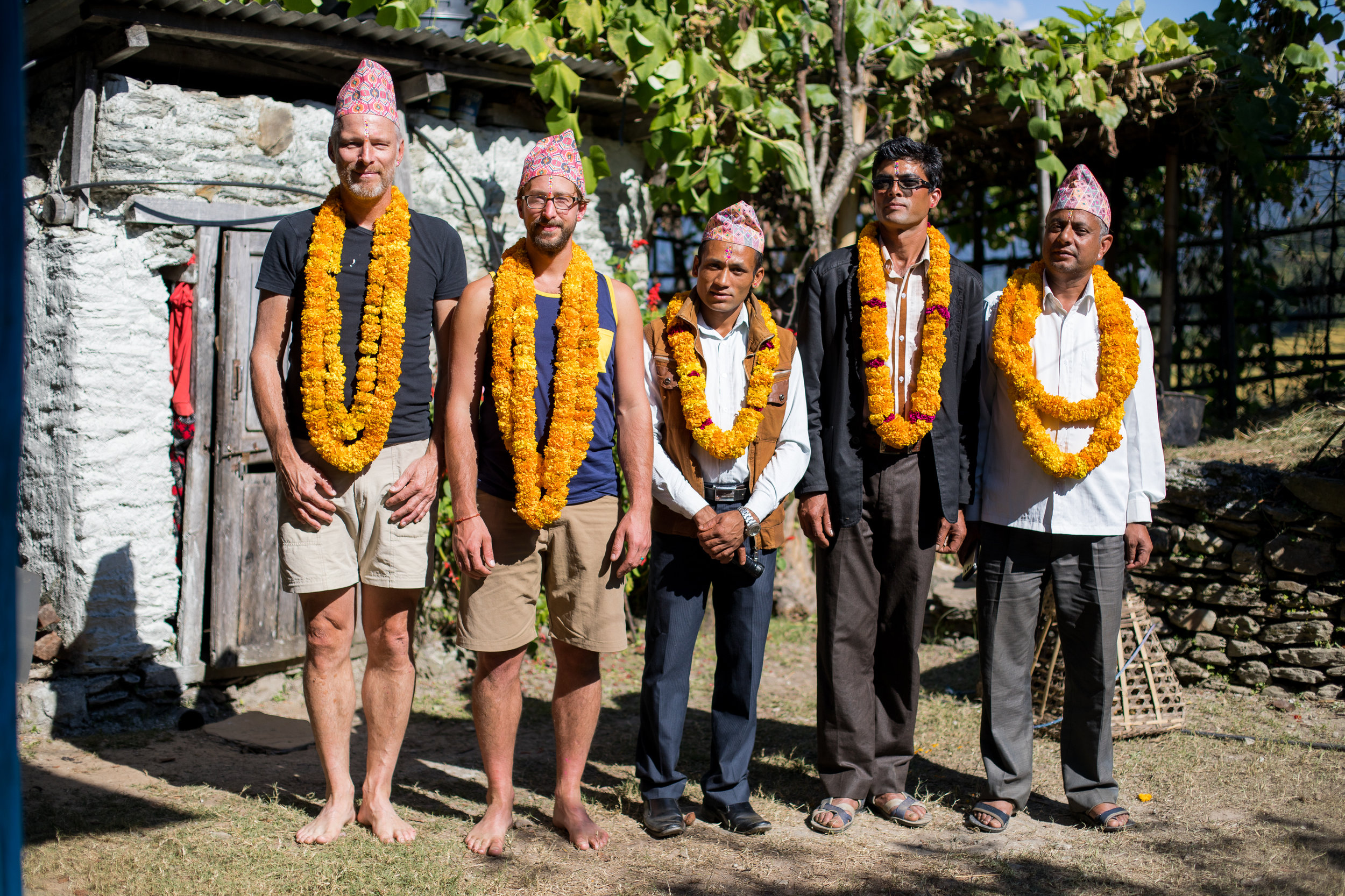
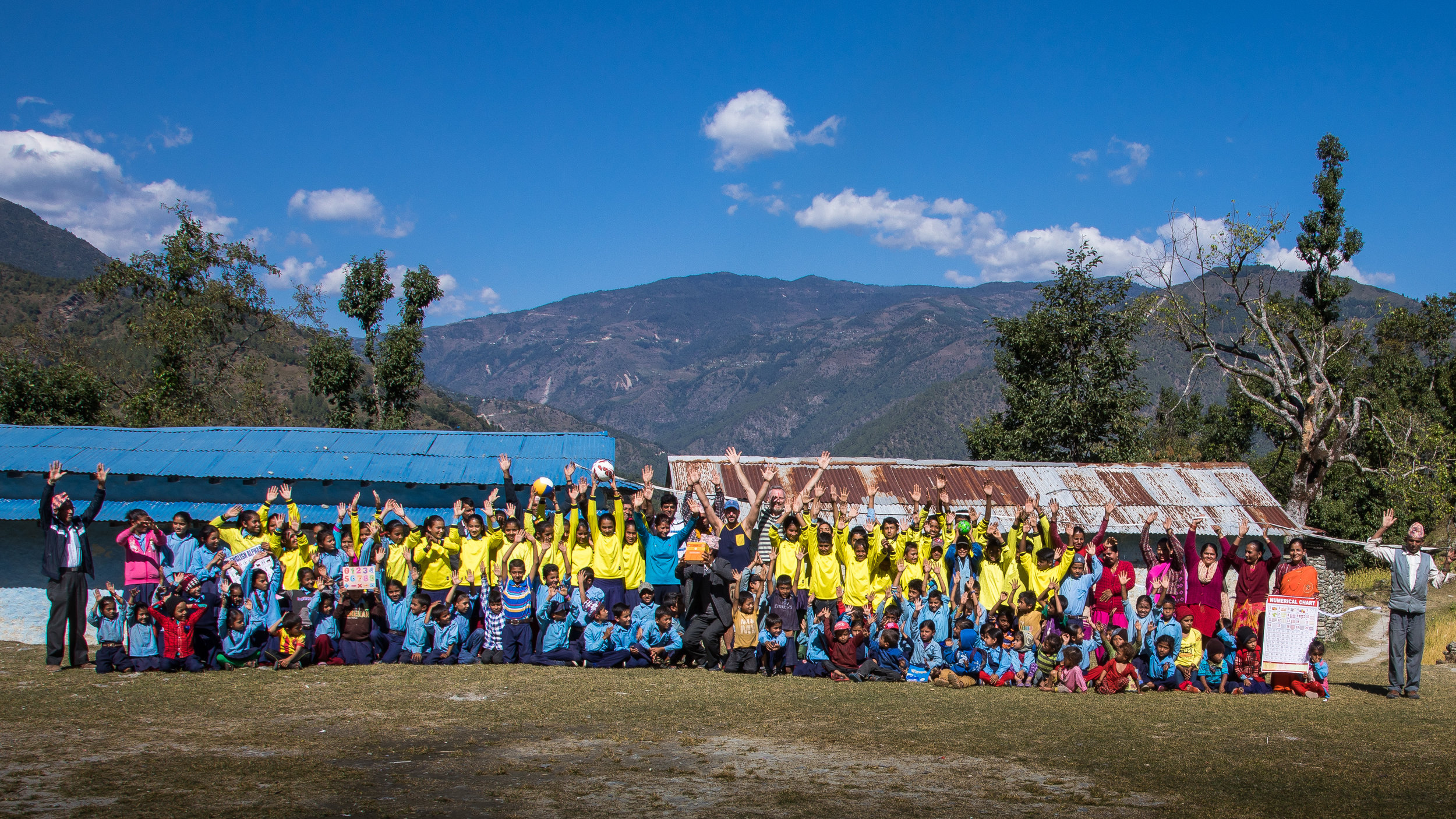
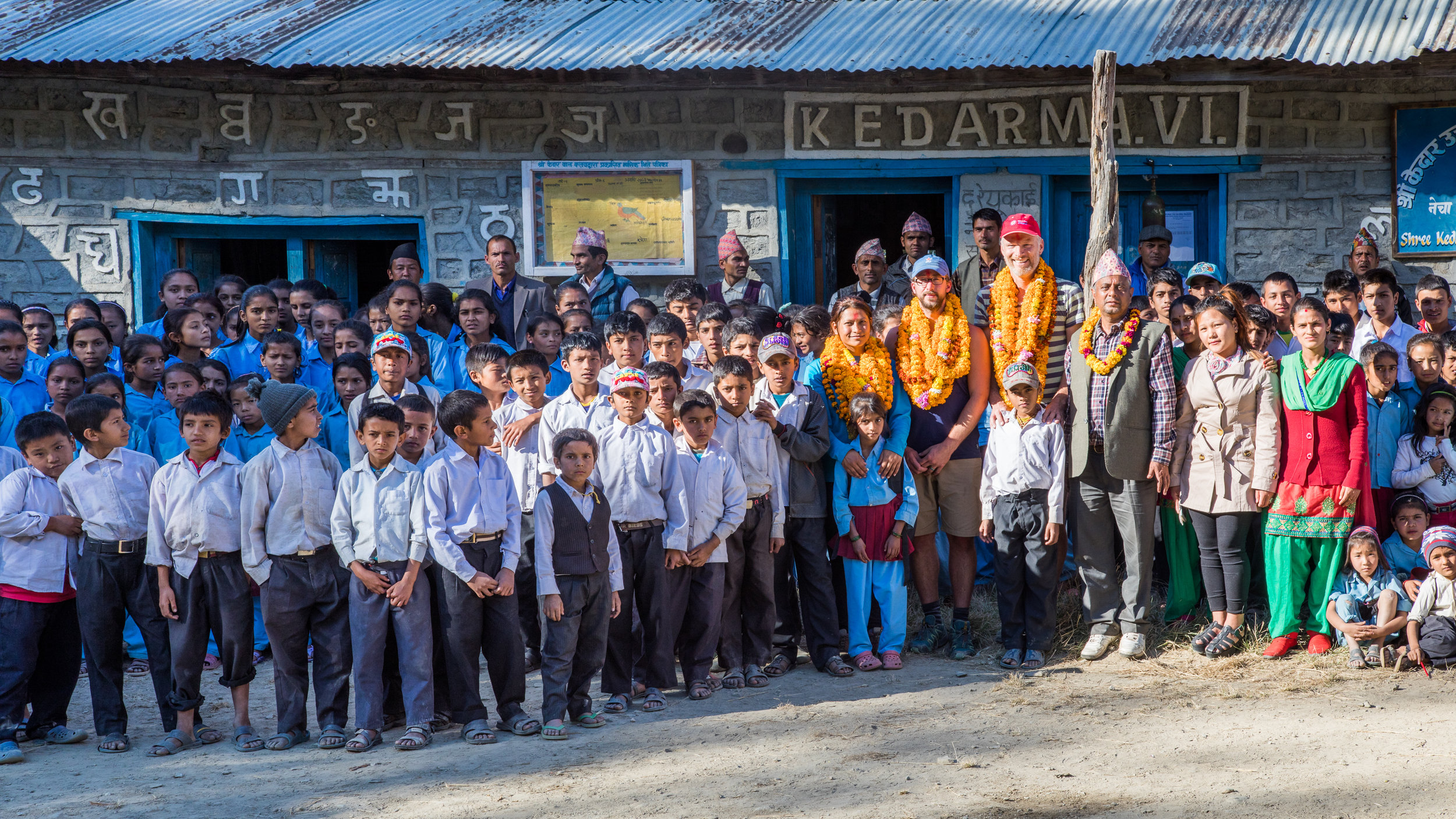
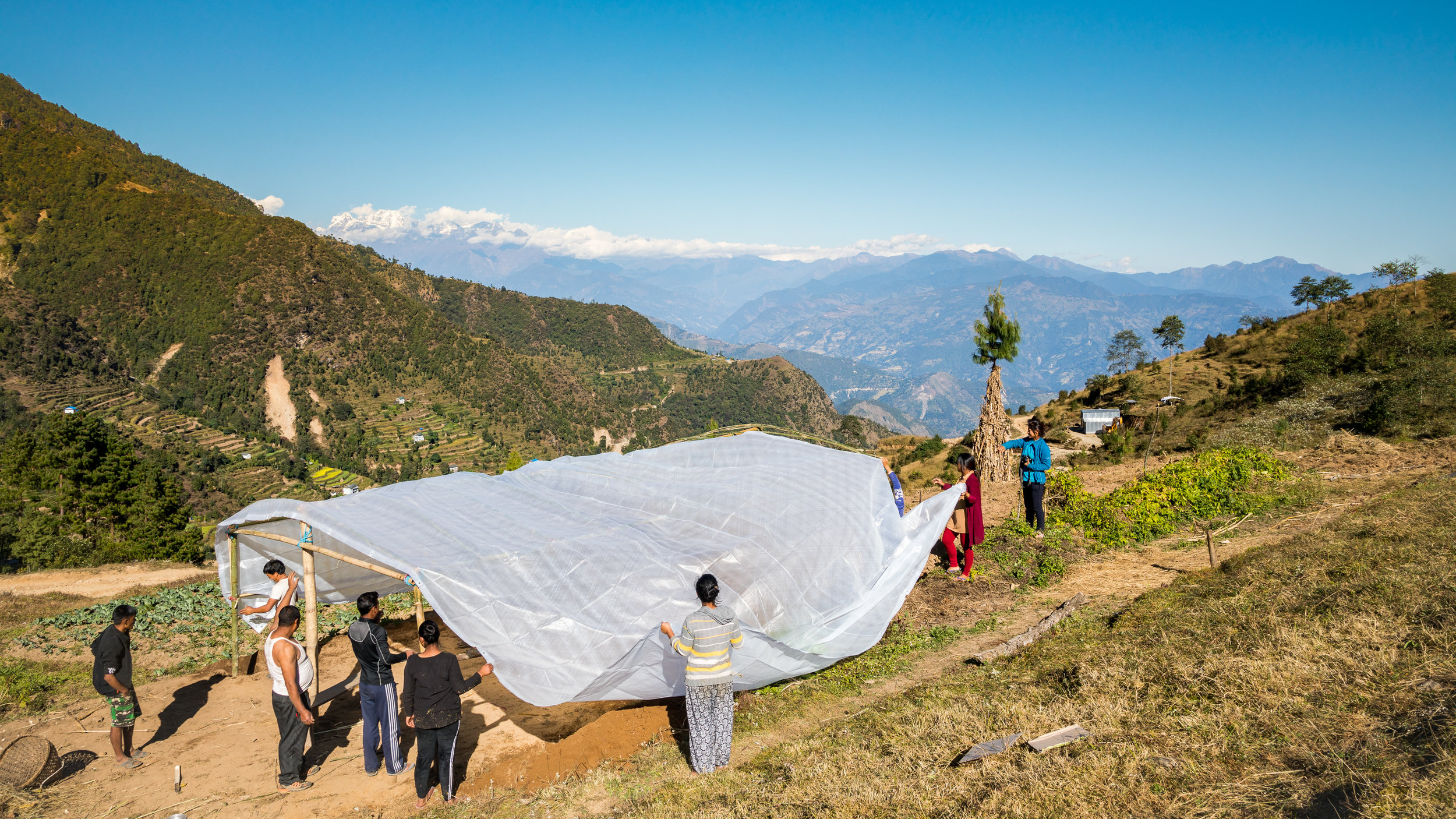

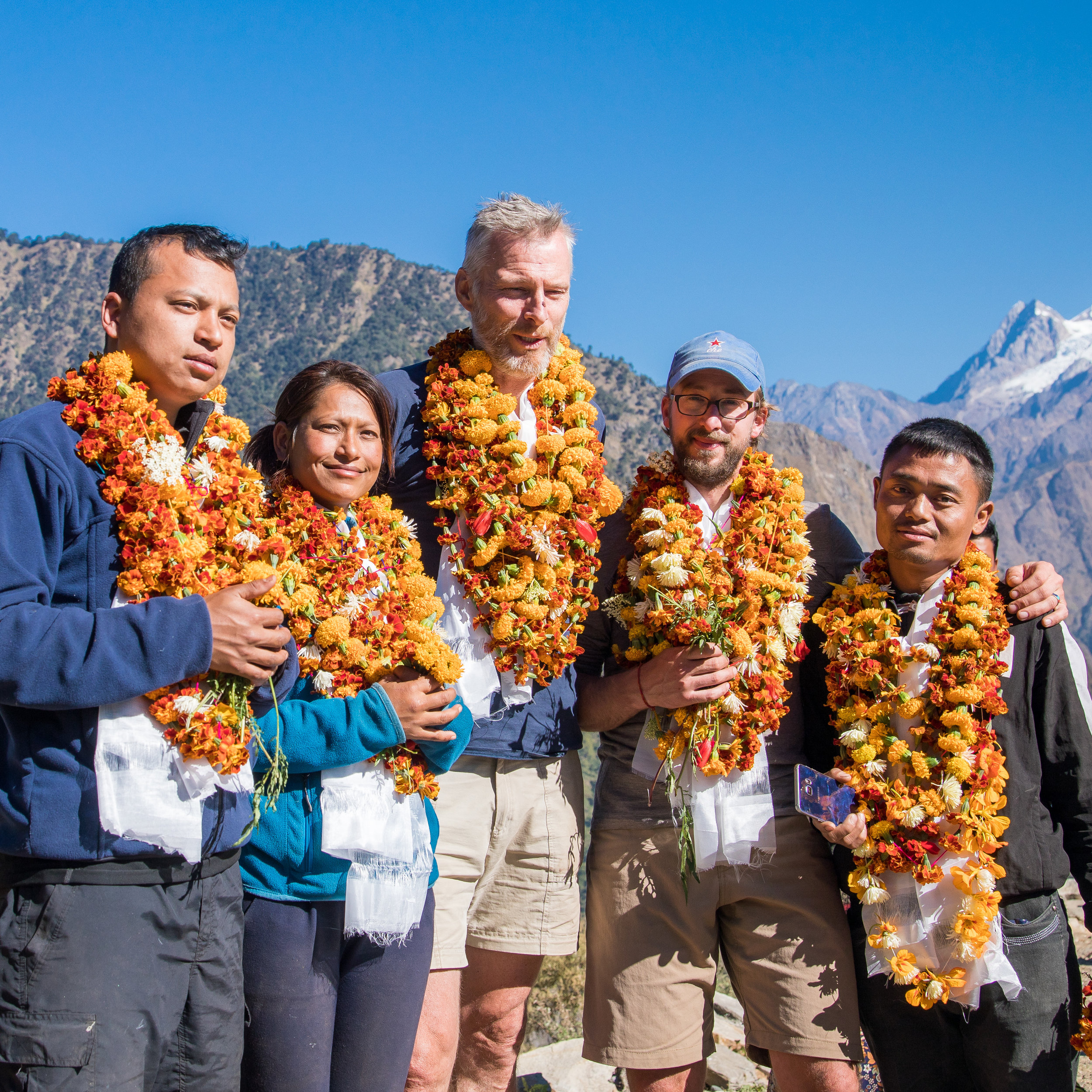
Gorkha district project updates
Alphabet group puzzle for the playgroup children of Uhiya in Gorkha district.
Tuesday November 8th,
We finished another trip. We traveled for 10 days trough Gorkha district and visited remote villages at the border of the Manaslu region. All villages are away from the touristic trails and were really damaged during the 2015 Eathquakes. Our team included Founder Pim Horvers, Member Samjhana Bishankhe and 2 volunteers; Gert Groenewoud and Bhupendra Bishankhe.
Our Goals:
Collaborate with local schools,
Handover school materials,
Establish greenhouses with local schools,
Start waste management awareness by contributing waste bins to school.
Samjhana explaining about our school materials at Korla Besi.
Our Plan:
Day 1: By bus from Kathmandu to Gorkha followed by a second bus from Gorkha to Soti Khola.
Day 2: Walk from Soti Khola to Machhi Khola
Day 3. Walk from Machhi Khola up to Uiya.
Day 4: From there, depending on out projects travel towards Korla, Singla and Laprak.
Within a period of 10 days we have visites 7 schools. Here we discussed their challenges with education, materials and the fact that children that have to quit school because of lack of money and govermental support. We handed over the Micro-Care Nepal package and supported the teachers how to use and educate. There is a long way to go, lots of opportunities for Micro-Care Nepal.
We handed over clothing to mostly Dalit people, 5 big bags full of clothing donated to Micro-Care Nepal by friends from mostly the Netherlands.
And last but not least together with the people from Uiya we finished one green house with a team of Nepali and us. A great job again. We were not able to finish more green houses therefor we handed Some packages containing plastics, seeds and books About vegetables over to teachers from the school and brought other green houses to villages that can build themselves.
Our total list of activities:
Donating school materials at Lapu Besi
Donating school materials at Korla Besi
Donating school materials at Uhiya
Donating 13 waste bins for the school at Uhiya. 3 big baskets and 10 small baskets for the classrooms.
Donating school materials at Dungla
Donating 8 waste bins for the school at Dungla, 1 big basket and 7 small for the classrooms.
Donating school materials at Korla
Donating school materials at Singla
Donating school materials at Laprak
Donating clothing at Uhiya
Teaching together with local teachers to introduce and learn them how to use the school materials provided by Micro-Care Nepal.
Note from volunteer Gert Groenewoud:
Conclusion after 10 days of hard work and fun: we achieved our goals however we had to adjust planning several times which will always be the challenge while working in Nepal. We got lof happy people with smiles on their faces. Happy Dalit, happy children, happy schools. So you can conclude that we again did a good job with a great team.
Group photo at the small primary school of Laprak, Gupsy Phaka.
Again a trip never to forget and always to remember. The days are sometimes long and tough, long hours of walking up and down and again, lots of visits per day. But working with a great team including our 5 porters and meeting lots of Nice and beautiful Nepali people ...looking forward to trek 3 already, however this will only be in 2017.
A great thanks to my New friend Aita, an amazing man with great capacities.
Malaki, The boy from Laprak
Our last trip to Gorkha region ended with bringing a 13 year old boy, Malaki (Shakti) back to Kathmandu. The rest of our trip report will follow soon.
Melaki is a 13 year old boy from Laprak, Gorkha region. He is the son of our advisor Aita Gurung. Last year I met his family two times and his 3 boys where realy fun to meet. At that time already I was amazed by the primitive and poor life.
This time even more as the oldest boy had a servere skin infection on his face and arms. It was spreading rapidly over the last few weeks. We decided to take him to a hospital. We still need to find the budget for his hospital bill and giving him the time to recover in Kathmandu.
Will you help Malaki?
You can with donating € 150,- so he can soon go back to his parents and get back to school! Please send me an email at info@microcarenepal.org if you can help.
The second problem for the 13 year old Malaki Gurung is that he suffers from Post Traumatic Stress Syndrom. The Earthquake had a awful impact on the boy and his life. Now he has lots of fears ruling his life.
Malaki feeling happy about the recovery of the skinnin his face and to return home to his village Laprak.
UPDATE!
We didn't got direct funding for Malaki after my previous post, but anyway Micro-Care Nepal supported his recovery!
Malaki going back home after healing almost completely from his skin infections. Happy to see how environment, hygiene and diversity of food affect the health of a child, and so quickly!
All dealing exited Malaki recovered so greatly after a week in Kathmandu.
Mother took great care of the boy, telling him to eat her healthy food on time.
Together with his father, advisor of Micro-Care Nepal, he will go back to their primitive home in Laprak. Hopefully they will get more healthy food soon from the greenhouse we made and hopefully he will stay more clean and hygienic as he learned during his stay with us last week in Kathmandu.
On to the most remote village of Gorkha district, our biggest distribution trip
Today we left on the biggest distribution trip for Micro-Care Nepal untill now. Providing the people of the most remote villages in Gorkha district with clothing, educational materials and greenhouses. 200 kg of relief materials, including 50 kg of clothing and shoes, 12 greenhouse plastics and 50 kg of school materials. Our team includes 2 volunteers, 5 porters and 2 board members.
Gert, Bhupu, Samjhana, Pim
During our 10 day trip we will establish more collaborations with local schools to develop their government education. Together with the teachers from each school we will make a 10 x 5 meter greenhouse and handover farming and nutrition guidance.
Waiting on our bus at our storage depot we got confronted with a big problem. Our head or porter group, who was inside of the bus, didn't told the bus driver on time to stop the bus to pick us up. The bus passed us and 5 minutes later it wanted to wait for us but not return. Quickly we had to find another vehicle to take all our luggage. After a while we could find a jeep driver with a foreigner. After packing all luggage on the rooftop the driver got confused with our story and told us he was thinking we where his clients that he supposed to pickup. We had to take all luggage of again and start over. It took us another 10 minutes to find a local van for our luggage and a taxi to transport us to the bus that was luckily still waiting for us. We reached soon to put all our materials on the rooftop of the bus and take off. A stressful start of the morning. We have to catch another bus and keep later this day to reach Soti Khola. Hopefully the rest of the day will be at least a bit according to plan....
EHBO en voorlichting in ‘Nothing there’ - Laprak, Gorkha
Door: Danja Raven / danjaraven.nl
Grote ogen, verbaasde gezichten en flink wat gegiechel waren veelal de eerste reacties op de EHBO- en voorlichtingslessen over vrouwenkwalen die we gaven aan kinderen van 8 tot 16 jaar en aan vrouwen in het afgelegen bergdorp Gupsi Pakha, Laprak.
Gupsi Pakha (2700m) dat letterlijk ‘Nothing there’ betekent, ligt zo’n 500 meter boven Laprak (2200m). Gupsi is ontstaan als nooddorp omdat het lagergelegen Laprak onveilig werd verklaard na de aardbevingen in april en mei 2015. Desondanks wonen en werken veel mensen nog steeds in en rondom de ruïnes van hun voormalige huis in Laprak. En je kunt ze geen ongelijk geven; de leefomstandigheden in Laprak zijn ondanks de schade en de onveilige situatie een stuk minder erbarmelijk dan in Gupsi Pakha.
* Onverwachte sneeuwval tijdens ons verblijf in Gupsi Pakha, Laprak.
Vanwege deze onveilig situatie in Laprak zijn de scholen en de Healthpost wel naar Gupsi verhuisd. Dat betekent dat veel van de (jonge) kinderen die naar school gaan en dus boven wonen, volledig op zichzelf zijn aangewezen.
De afwezigheid van een moeder die helpt bij een bloedende knie omdat je tijdens het spelen een stukje van de berg afrolde, die weet wat te doen bij de flinke brandblaar die je opliep tijdens het koken op open vuur en die niet in paniek raakt bij aanblik van de hoofdwond die je kreeg door een van de scherpe randen van je tijdelijke golfplaten onderkomen, benadrukt de noodzaak van het geven van EHBO-lessen aan kinderen in dit gebied. Door beperkte hygiënische omstandigheden en de doorgaans gebrekkige kennis rondom hygiëne ligt infectie op de loer met mogelijk dramatische gevolgen door de afwezigheid van een ziekenhuis.
* Schone sneeuw van het dak afscheppen om de watervoorraad aan te vullen.
Wondverzorging, botbreuken en verstikking
Terug naar die grote ogen, verbaasde gezichten en het gegiechel. Nepalese mensen zijn erg verlegen dus zowel op school als in de Healthpost zorgde mijn opmerkelijke uiterlijk en onze EHBO-les over brandwonden, snijwonden, bloedingen, botbreuken, verstuikingen en verstikking voor flink wat geroezemoes en het verbergen van gezichten achter mutsen en sjaals. Desalniettemin werd er meestal met grote ogen, soms met open mond en in ieder geval met klapperende oren naar ons geluisterd.
Het voordoen van de Heimlich-greep, waarbij je schuin achter iemand staat terwijl je met de handen druk uitoefent in het gebied van de navel om zo eten dat vastzit in de luchtpijp naar buiten te drukken, zorgde uiteraard voor hilarische taferelen. De flyer met afbeeldingen van geïnfecteerde wonden dempte het geroezemoes en benadrukte onze boodschap over het belang van goede wondverzorging. De juiste antwoorden die we kregen op onze samenvattende vragen achteraf, bevestigde dat de kinderen van Laprak nu weten dat je brandwonden minstens tien minuten met lauw water dient te koelen en dat het spoelen van open wonden met (schoon) water echt de voorkeur heeft boven het gebruik van urine.
* EHBO-les aan één van de klassen in de tijdelijke school in Gupsi Pakha, Laprak
Overlopende Healthpost
Voor verdere wondverzorging na het verlenen of krijgen van EHBO, kunnen inwoners terecht in de Healthpost. Dat wil zeggen: een golfplaten gebouw waar de overheid één healthmedewerker uit Kathmandu naartoe stuurde. Deze dame in kwestie - die overigens geweldig werk verricht en heel goed weet waar ze mee bezig is - heeft het echt veel te druk. Ze werkt zeven dagen per week en kampt ook nog met het verlies van haar man die tijdens de aardbevingen omkwam door lawines in de bergen. Ze heeft bovendien te weinig tijd om de Healthpost goed te organiseren; een groot deel van de medicijnen zit daarom in een doos waar af en toe in gegrabbeld wordt en het is onduidelijk welke medicatie er op voorraad zijn.
Tijd voor het geven van verdere voorlichting heeft ze überhaupt niet en ook op scholen wordt hier verder geen aandacht aan besteed. Dat terwijl ongelukken niet alleen in en om het huis gebeuren maar bijvoorbeeld ook op de akkers. De Healthpost is dan op uren loopafstand. Ook hevige sneeuwval maakt de Healthpost soms moeilijk of niet bereikbaar. Weten hoe je hevige bloedingen stopt of vermindert en hoe je de wond verzorgt (met beperkte middelen) is daarom essentiële informatie voor zowel kinderen als volwassenen en mogelijk levensreddend. Je begrijpt dat Micro-Care Nepal dan ook met open armen werden ontvangen om voorlichting te geven middels EHBO-lessen en om te helpen met wat hand- en spandiensten in en rondom de Healthpost. Daarnaast doneerden we EHBO-materiaal, zoals (druk)verbanden, pleisters, tape, antibioticakuren en betadine.
Seksuele voorlichting op je dertigste
Na een paar dagen lesgeven op de scholen was het tijd voor onze tweede missie, het voorlichten van vrouwen over typische vrouwenkwalen. Hoewel ik in mijn dagelijkse leven als gezondheidsredacteur nooit uitgepraat ben over zaken als vaginale klachten en vleesbomen, behoeft dit - voor de meeste mensen toch wat schaamtegevoelige onderwerp - een iets genuanceerdere introductie in het verlegen Nepal. Om te voorkomen dat we de vrouwen al op voorhand zouden afschrikken, hebben we deze vrouwenles achter de EHBO-les geplakt zonder dit vooraf te communiceren. Door de enkele aanwezige mannen de deur te wijzen na de uitleg over EHBO en vooral niet met de vrouwen mee te giechelen (alhoewel dit soms erg lastig was), lukte het mij en mijn collega Samjhana (de vriendin van oprichter van de stichting, Pim Horvers) om serieus met deze vrouwen in gesprek te gaan over onderwerpen, zoals menstruatie, zwangerschap, hevig bloedverlies, bekkenbodemverzakking en het vrouwenlichaam, met name de werking en functie van baarmoeder en eierstokken. Na onze eerste les werd hierover uiteraard flink geroddeld in het lagergelegen Laprak, maar dit weerhield een tweede groep vrouwen er niet van om de volgende dag in de vroege ochtend twee uur naar boven te wandelen om aanwezig te zijn bij een soortgelijke les.
‘Bad blood’
Op mijn vraag of de dames enig idee hadden waarom ze menstrueerden, kreeg ik een opmerkelijk antwoord: vrouwen menstrueren omdat ze slecht bloed ‘bad blood’ hebben. Ik vermoed dat deze gedachte ontstaan is door het afwijkende uiterlijk van menstruatiebloed in vergelijking met ‘normaal’ bloed. Voor de mannen onder ons: menstruatiebloed is donkerrood tot heel donkerbruin en soms klonterig. ’Bad blood’ is ook de reden dat veel Nepalese vrouwen tijdens hun menstruatie niet in bed of zelfs in het huis mogen slapen van hun man. Uiteraard was het onmogelijk om deze ‘volkswijsheid’ in een uurtje volledig de kop in te drukken. Toch lukte het door met plaatjes van de baarmoeder en eierstokken en uitleg over de menstruatiecyclus - dat het vrouwenlichaam zichzelf iedere maand klaarmaakt voor een zwangerschap bijvoorbeeld en zonder bevruchting dit weefsel ook weer afscheidt - wel om bij deze vrouwen meer bewondering en respect te creëren voor hun lichaam.
* Voor het bijgebouw van de Healthpost na onze vrouwenles.
Even niet zwanger
Kennis over de menstruatiecyclus nodigt uiteraard ook uit om te praten over preventie. In Nederland zou ik overigens iedereen afraden om conform mijn uitleg een zwangerschap proberen te voorkomen, maar hier probeerde ik duidelijk te maken dat alleen seks hebben vlak na de menstruatie de kans op een zwangerschap echt een stuk verkleint. Onder luid gelach en een blik die mij duidelijk maakte dat ik iets heel raars gezegd had, verduidelijkte deze vrouwen mij dat hun man die zich soms dronken aan hen opdrong hier echt geen boodschap aan heeft. Aanvullend had ik dan ook graag een lezing gegeven over gelijke rechten voor mannen en vrouwen, baas in eigen buik en het goed gebruiken van lange nagels bij opdringerige kerels, maar deze preek gaf ik weinig kans van slagen dus liet ik hem maar achterwege.
Missie geslaagd
Uit de persoonlijke vragen achteraf, veelal over vervelende maar doorgaans relatief onschuldige kwalen, bleek dat het ons - ondanks mijn goedbedoelde maar niet succesvolle poging tot uitleg over preventie - gelukt was om wel degelijk een gedeelte van de schaamte bij deze vrouwen weg te nemen. Bovendien konden we een flink aantal vrouwen die zich soms ernstig zorgen maakten over zaken als hevig bloedverlies en onprettige geurtjes met onze antwoorden geruststellen of adviseren stappen te ondernemen.
Na enige aanmoediging van onze kant om vooral met de buurvrouw, vriendinnen en dochters over deze onderwerpen te praten was er dan ook geen andere conclusie mogelijk…
Missie geslaagd!
Verkenning en Hulpverlening in de Manaslu vallei
Tilburg, januari 2016.
Door: Wilfried van den Boorn, Voorzitter Micro-Care Nepal.
In december 2015 maakte ik op uitnodiging van vrienden gezamenlijk een reis naar Nepal. Doel van de reis was enerzijds het maken van een trek rondom de Manaslu gecombineerd met de Chumvallei. Anderzijds hadden we besloten daar waar nodig hulp te bieden in de vorm van warme kleding en schoeisel. Aan kleding en schoenen hadden we tussen de 50 kg. en 60 kg. ingezameld. Verder had Frank via een sponsoractie onder collega’s een mooi bedrag opgehaald dat aangevuld was door het houden van een actie waarbij kata’s, eventueel voorzien van een eigen tekst verkocht werden. Deze zijn door ons meegenomen om gezegend te worden door een lama in het klooster bij Bhoudhanath waarna ze door Frank op het hoogste punt van onze trek opgehangen werden (Larke La 5160 m.). Ook hadden we nog een voorraad medicijnen gekregen welke in verschillende “health posts” afgegeven werden. Het sponsorgeld werd aangewend om in diverse dorpen ook financiële ondersteuning te kunnen geven.
Voor mij was dit een uitgelezen mogelijkheid om me persoonlijk op de hoogte te kunnen stellen van de huidige situatie in het gebied daar ik deze regio in 2010 samen met Pim Horvers, oprichter van de stichting, ook al bezocht had. Nu zou ik enerzijds de impact die de aardbevingen op het gebied gehad hebben kunnen zien maar ook de ontwikkeling die de regio doorgemaakt heeft als gevolg van het toegenomen toerisme.
Zoals we al gevreesd hadden was de situatie na de aardbevingen ernstig. Een aantal van de dorpen die we bezochten was op grote schaal beschadigd. Ontluisterend was ook de constatering dat de Nepalese overheid hoegenaamd niets ondernomen had om de situatie voor de dorpelingen te verbeteren. Herhaaldelijk vertelde men ons dat de enige hulp die men van de overheid gekregen had bestond uit een aantal golfplaten. Men was en is dus aangewezen op zelfredzaamheid en de hulp van derden. Onderweg werd duidelijk dat het World Food Program gezorgd heeft dat ieder dorp wel over een voorraad rijst beschikt. Belangrijk was ook te zien dat het World Food Program samen met andere hulporganisaties het herstel van de paden gesteund heeft. Deze paden vormen de levensaderen van een regio en maken de aanvoer van alle noodzakelijke levensbehoeften mogelijk. Hier en daar werd door de opdruk op de zeilen duidelijk dat ook Oxfam een bijdrage geleverd had aan de noodvoorzieningen.
Aangezien het afgeraden werd verder dan Chhokang Faro de Chum vallei in te trekken kon ik wat de situatie hogerop betreft alleen afgaan op de mededelingen van de bewoners. De toestand van de paden was als gevolg van de aardbevingen en de landverschuivingen slecht en er waren nog niet voldoende herstelwerkzaamheden uitgevoerd om normaal verkeer mogelijk te maken. Het gebied boven Mo Gompa was helemaal afgesloten.
In de Chumvallei hebben we Ripchet bezocht dat zwaar geleden heeft tijdens de aardbevingen. Hier waren nauwelijks herstelwerkzaamheden gaande en een gedeelte van de inwoners verbleef nog steeds in provisorische onderkomens of in de ruines van hun huizen. De watervoorziening is beschadigd met als gevolg dat drinkwater nu uit een stroompje, vrij toegankelijk voor loslopend vee en honden, gehaald moet worden. Hierdoor liggen ziektes op de loer. Voor de situatie in Chhokang Faro geldt min of meer hetzelfde alhoewel daar de watervoorziening nog functioneert. Hulpverlening in dit gebied is er nauwelijks daar de dorpen afgelegen liggen en slechts te voet bereikbaar zijn.
In de Budhi Gandaki vallei waren de lagergelegen dorpen vaak ernstig beschadigd door de aardbevingen. Machhakhola bleek grotendeels onbewoonbaar geworden en veel mensen woonden in onderkomens gemaakt van zeilen, golfplaten en ander noodmateriaal.
Al met al waren we blij dat we hier en daar iets van de nood konden lenigen. In sommige plaatsen werd een deel van de kleding uitgedeeld en een donatie gedaan. Op andere plaatsen konden we medicijnen afgeven en een donatie aan de “health post”doen.
De reis heeft duidelijk gemaakt dat we met onze stichting ook in dit gebied nog veel werk kunnen verzetten.
In de jaren na 2010 heeft de regio zich sterk kunnen ontwikkelen als gevolg van het toegenomen toerisme. Het Manaslu circuit geldt nu als de vervanging van het Annapurna circuit dat aan populariteit ingeboet heeft door de aanleg van de berijdbare weg.
In plaatsen waar in 2010 nog nauwelijks primitieve overnachtingsmogelijkheden waren zijn deze dorpen tegenwoordig veranderd in pleisterplaatsen waar in normale omstandigheden de vermoeide trekker een comfortabel bed en warme douche tegemoet kan zien.
Het is jammer dat deze ontwikkeling door de gevolgen van de aardbevingen hapert. De groeiende stroom toeristen is in 2015 opgedroogd met als gevolg uitblijvende inkomsten.
Bij elkaar opgeteld vrees ik dat het nog jaren zal duren eer deze regio hersteld zal zijn. Voor het moment is het wachten op de Nepalese regering om eindelijk werk te maken met het verlenen van hulp bij de wederopbouw zodat men over kan gaan tot de dagdagelijkse regelmaat wetende dat men een solide dak boven het hoofd heeft.
Back to Barpak, Epicenter in Monsoon.
Villager of Barpak walking around in the area where their village was and now is a warbled of ruins.
Mother who was pregnant during the eathquake who lost her 25 year old husband. Now she is left alone with her 3 months old boy..
One of the women present lost her husband in the earthquake. He was only 25 years old. She was pregnant at the time. Her husband had been working with 50 other people on the construction of a new house. Eight of them didn't survive. Now the baby is 3 months old. In Gurung culture it is not possible to remarry so she will be alone with her child for the rest of her life.
Traditional way of wavering that is still being used in all these villages to make blankets and clothing.
Below an interesting story by Shri Maya Gurung about how the village of Barpak was formed in Gorkha district.
Shri Maya Gurung who shared the story about Barpak.
One century ago there were only 2 people in Laprak, Pajlama Lama and Ckimpo Lama. Lama is a caste group within the Gurung people. The two Lamas decided to make an agreement after having had differences and fighting with each other. They wanted to have a judge so they invited King Ghale from Khorla to adjudicate. When the King arrived at the top of Barpak and saw the nice area was he decided to settle there. The King was followed by many people from Khorla. So that's why there are now two castes in Barpak: Gurung and Ghale. These two castes are still divided. "Gurung's" caste name is meaning "I am big" but the "Ghale" caste people are think they are even bigger and stronger people.
Lady who lost her house and family looking over the valley thinking about past and future.
Bhakta Bahadur Gurung’s personal story:
about what happend to him and around him when the earthquake came in Barpak.
When the earthquake came he fell to the ground and was tossed about by the shaking. It looked like the trees were falling down over him. He was thinking only about his family and afterwards he went up to look for them. On the way he drank some water at the place some French people had been making a drinking water tap. He met 5 French people on his way up. At this time he felt like he wanted to cry. Together with the French people he ran. On his way he saw destroyed houses everywhere. Arriving in the village he heard crying.
Boy who just had a wash posing in evening light.
He saw people gathering in an open area of the village. Most were crying and screaming ‘where is my wife, husband or children?’ After 2 hours he found his family here. His house had been destroyed. He told his wife that they should go to where their house had stood but his wife told him she didn’t want to see the ruined house and was very afraid that more earthquakes would follow.
At this time it started raining. Other people from Barpak provided people plastic to make a shelter. He didn't get any plastic but managed to build a shelter anyway. In evening all the people were very worried about finding food. Everything had been lost in their houses. He decided that they needed to have hot water but he didn't have a pot. Eventually he managed to find a pot and build a fire. They drank hot water but had nothing to eat.
Traditional way of wavering that is still being used in all these villages to make blankets and clothing.
That night they shared a tent with people from 28 different houses. All night they were very afraid and didn’t sleep. In the morning they were all hungry and the children were crying because of their empty stomachs. The parents started searching for food in their destroyed houses. They found some rice and shared it as best they could. There was not enough for all but the children were most important to them.
Girl having fun playing with the village water tap.
While searching in the destroyed buildings they found the bodies of 8 people who had been killed while working in a new house built from concrete. At that time there were about 100 people constructing houses. At first they didn’t know how many people had died in their houses. But when people didn't appear the survivors knew which people may have died. They tried to help rescue the people that were trapped under the stones. They searched and lifted stones away but often they didn't know exactly where to find the people. They found one boy under the stones. He was only 17 years old and only his head was visible between the stones. He was dead. The Indian Army arrived by helicopter to help to search for people. The local people joined the soldiers and became more encouraged to search for survivors. That day they searched for bodies and took out 8 dead bodies: 6 women and two little boys.
Young girl washing her clothes at a local water tap. Girls are usually helping from very young age in all housekeeping, cleaning and cooking.
Little boy that couldn't open the door lock of their house. I was glad to help him out.
Little bit afraid but that dissapeared after helping him opening the door of their house.
Seventy five people died that day in the Gorkha district. The death toll eventually rose to around 90 people. (The final totals were much much larger)There were terrible injuries: amputated limbs and even decapitations. The Indian Army helicopter had brought medics to the village but they could only provide basic medical care. After one day the Nepalese Army and police came. Fifteen days later the Nepalese government provided food to the people and a further 15 days later trucks arrived with more food. Local government officials allocated and distributed the food. Food and shelter materials arrived from Pokhara, arranged by the Sathi Khola organization, an NGO. While waiting for help to arrive the villagers searched their old houses for food, cooked and shared it amongst themselves. There was not enough so most were hungry all the time. They cooked big pots together and ate together. At this time all people were given the same amount of food and there was no caste discrimination.
Children in Barak going to their fields to harvest the corn.
During our talk we heard large cracks, like fireworks. I asked what the sounds were and was told that this was a big landslide.
There was no cultural or religious ceremony for the people who were killed. In one day they brought 30 people out from the collapsed houses. There was no time or energy for a proper ceremony. The dead were simply buried. In this area people are normally buried and not cremated. Some animals died under the stones and are still there creating a terrible smell in the ruins
After 19 days there was another strong earthquake. People were more aware this time. Their village was already destroyed but they realized they should take care of each other. And after the second earthquake aid organizations were already there so they received more support. That waited long time for food. They didn't have the energy to take care of their cattle which were walking around freely and eating the crops in the fields. After a few weeks they started searching for the cattle and collecting them.
Girl entering the village Barpak.
As for the future… Everyone people is thinking about building new homes. Some rich people are buying land now and beginning to construct new houses. But poor people don't have these possibilities. Bhakta Bahadur Gurung says that if the government provides support the people can build solid, earthquake resistant houses. Until now however, they haven’t received any information from the government. They feel that they should still have faith in the Nepali government. They are all still waiting for their government to support them.
I would like to thank Bhakta Bahadur Gurung for the interview.
Grandmother with her grandson walking on their way to the ruins of old Barpak.
Publication in Magazine 'Hoogtelijn' from the Dutch Mountaineering Association (NKBV)
Click on image to see larger.
If you want to read it please click here and go to page 48 till 52.
Publication with credits to Micro-Care Nepal in the Magazine 'Hoogtelijn' from the Dutch Mountaineering Association (NKBV). About initiatives for support in Nepal.
My initial writing for the publication was to my opinion more interesting:
In Kathmandu, the UNESCO World Heritage site of 'Durbar Square' in the centre of the city. The work has started to clean up the chaotic mess that the earthquakes left. As shown in the image, Nepal isn't ready for the real rebuilding.
Durbar Square, Kathmandu, Nepal after the earthquake.
Everywhere in and around the city are many tent camps sheltering people who lost their homes or are too afraid of new earthquakes. Remember that there are still strong aftershocks every week. Luckily there is enough water and food now.
People in shelter camps at Tara Goan Park, Kathmandu.
Blocked door in Durbar Square, Kathmandu.
This photo shows the enormous damage. The two workers underneath the half collapsed building don't know where to start cleaning up this mess. Most have collapsed but some parts of these beautiful and traditional buildings are still there. They are trying to stabilize the ruins while waiting until the end of the heavy rain season. The heavy rain and weekly aftershocks of 4 and above create a big risk that parts still standing will collapse.
People in shelter camps at Tara Goan Park, Kathmandu.
Restoration on walls.
In some places of the city walls are being rebuilt and if possible parts are being repaired. At the ticket counter of the popular tourist area 'Durbar Square' where it's usually crowded with tourists now you can hardly find any visitors. Stones that are collected from the ruins are piled up to be reused later in the rebuilding. Wooden parts with engravings have to be recovered and will be used piece by piece for the restorations. The actual rebuilding will take years....
Demolishing concrete floors by hand that had collapsed during the earthquakes.
Special thanks go out to Peter Daalder from the NKBV for creating awareness of the problems and the support that is still needed in Nepal.
-------------------------------------------------------------------------------------------------------------------------
Nederlandse vertaling:
Publicatie met vermelding naar Micro-Care Nepal in het blad 'Hoogtelijn' van de Nederlandse Klim en Bergsport Vereniging (NKBV). Over hulp initiatieven in Nepal.
Dank aan Peter Daalder van de NKBV voor de goede initiatieven voor hulp aan Nepal!
De inzending voor de publicatie was naar mijn mening een interessante aanvulling op de plaatsing:
"In Kathmandu het culturele UNESCO Wereld erfgoed Durbar Square in het centrum van de stad, wordt inmiddels gewerkt aan het opruimen van de chaos. Helaas in Nepal nog niet klaar voor daadwerkelijke wederopbouw. Overal in de stad zijn nog tentenkampen te vinden waar mensen die hun huis verloren zijn, hun huis op instorten staat of simpelweg uit angst voor nieuwe aardbevingen niet terug durven naar hun huizen. Water en voeding is er gelukkig voldoende in de stad.
Bijgevoegde foto laten zien dat de schade groot is en specifiek laat de foto waar de twee werkers onderaan een half ingestort gebouw naar mijn mening goed zien dat men soms niet weet waar te beginnen. Delen van deze prachtige bouwwerken zijn ingestort en andere delen staan nog overeind. Door middel van het stutten van de gebouwen wordt het grootste deel van de herstelwerkzaamheden uitgesteld tot na het regenseizoen. De grote hoeveelheden regen in samenspel met de wekelijkse naschokken van 4 op de schaal van richter en hoger zorgen voor een groot gevaar dat veel gebouwen nog verder instorten.
Op sommige plaatsen in de stad worden muren opnieuw opgebouwd en worden voegen hersteld.
Aan de ticket counter bij het normaal zo toeristische Durbar Square is het nu maar zelden een toerist te zien. Stenen welke verzameld zijn uit de puinhoop liggen opgestapeld klaar om later opnieuw gebruikt ta gaan worden. De nog bruikbare delen zullen stuk voor stuk gebruikt worden voor de restauratie. Het herstel zal dus nog jaren gaan duren. "
In Laprak, at the epicenter of the Earthquake
Arriving in Laprak it was sad to see the people living in plastic shelters, far from their old houses down in the valley.
Arriving in Laprak I met a government health worker. He took me to a family house where I could stay and eat. Before the earthquake this family had a hotel in the original Laprak village further down the valley.
Gurung lady smoking a cigarette.
I joined the health worker to visit one of the local people who needed his help. A man had been hit on the head by a stone the day before. No one was sure if the stone was rolling down from the mountain or if it was thrown by some local boys. Sometimes local boys spend their days drinking raksi (a spirit made from rice). They can get very aggressive and violent at times. This is also one reason that people warned me about traveling on my own especially because I am not Nepali. In the past tourists have been attacked and robbed or even killed while trekking alone in remote areas.
My friend and health post worker guided me around in 'new' Laprak.
Setious head wound treated by the healthpost worker.
Replacing the bandage after cleaning the wounds.
The man had a wound on his head and behind his ear. The healthcare worker slowly started to remove the bandage. He used sterile saline to try to make it easier to remove the bandage without damaging the wound. After the bandage was removed the health worker cleaned the wounds. The man’s family was sitting with him and helping to keep his eyes clear of the saline, betadine and blood that were dripping down his face. There were a lot of stitches, especially behind his ear. The man’s ear had been almost completely severed by the falling stone. The healthcare worker said that both wounds were so deep he could see the bone. Because of the severity of his injuries the man was going to Kathmandu the following day to have a CT scan to make check for further injuries.
Building his new house in the same way as before not realizing that a new earthquake will destroy it again.
In the monsoon Laprak is almost always covered in clouds. Some rain is falling most of the time so people going to their fields or carrying goods up cover themselves in plastic. Most of the people now live up on the mountain where it is not so steep and there is less risk with possible future earthquakes and landslides. Their original village is one hour walking down the valley. Here they had their traditional stone houses and the fields that fed them. The Nepali Government has announced that all people living the more dangerous lower areas will not receive any support if something happens in the future. But many people are still living down below in the valley. Most of the older people don't want to leave their houses to go to a place where they have nothing and some are too old to make the two hour walk up.
The old entrance gate to the village of Laprak.
After taking care of the patient we walked down to the original village of Laprak. It is a steep walk sometimes crossing the road which had now been destroyed by the monsoon rain. It was a sad sight arriving at the half destroyed entrance gate of Laprak with the ruins of houses and a big school visible in the background.
Children playing in 'old' Laprak down in the valley.
A few houses were still standing but taking closer look I could see that all were cracked or partly destroyed and unsafe to live in.
While walking through the ruins I found lots of personal possessions such as pots, pans, stools, tables, and furniture and school books.
Lady at the ruins of her house in 'old' Laprak.
Children on their way to school.
We could see smoke coming from a house and decided to take a look. Inside there was a very old lady. She was milling her corn using a traditional grinder consisting of two circular flat stones lying one on top of the other. The corn is placed between the stones and ground by rotating the stones against each other using a wooden handle attached to the upper stone. Behind her, in the corner of the kitchen, a fire was burning to keep her warm and to use later for preparing a meal from the crushed corn.
Proving that working together is necessary to achieve your goals.
Proof that non cooperation will end in failure: the book fell down.
We could see smoke coming from a house and decided to take a look. Inside there was a very old lady. She was milling her corn using a traditional grinder consisting of two circular flat stones lying one on top of the other. The corn is placed between the stones and ground by rotating the stones against each other using a wooden handle attached to the upper stone. Behind her, in the corner of the kitchen, a fire was burning to keep her warm and to use later for preparing a meal from the crushed corn.
Students explaining the importance of hygiene.
The walk up took two hours and was long and steep. On the way we met lots of villagers carrying goods up that they had collected from their destroyed houses and food that they had harvested from their fields below. It was good to see that even with the extra effort required most of the people had decided to live at the safer places higher up the mountain.
Student of 11th class.
Student of 11th class.
Students of 11th class.
Student of 11th class.
It was dark when we arrived back in the higher village. During the evening the temperature dropped to under 10 degrees. Because this was the warm season I hadn’t brought any warm clothes with me from Kathmandu. I was happy to join my friend in a glass of raksi accompanied by the traditional snack of fried buffalo meat (which is made by frying strips of cured meat). I was even happier to sit close to the fire where food was being prepared.
While sitting here I met two workers from Oxfam. They had just finished building 52 toilets in the Laprak area. They were also providing hygiene education at the local school. We agreed that it is very hard to change the behaviours of the older generation and it is better to focus on educating the younger generations by teaching at schools. The practical results of their classes were unfortunately very hard to see! More time is needed before bathing and washing hands before eating becomes a habit. Now there is a health post in Laprak but before they had to travel one hard long day to Gorkha for medical support.
Because Laprak is at 2300 meter about sea level it can get cold in evening. They warm themselves at their fires.
Mother with her daughter looking over the valley.
There was also a woman providing maternal and child health care. She explained that until now the pregnant women had delivered their babies in their own homes and not at the health post where they could be cared for in a hygienic and comfortable environment. This because of the strong traditions within their culture. She was glad pregnant women were coming for antenatal care to check the health of both the mother and the baby. While sitting in the tent I listened to the sound of people playing their traditional flutes. They start playing early in the morning and keep going until late in the evening.
I decided to stay at least one more day in Laprak and search for a local who could take me over the mountains to Machhakhola from where I hoped to walk on further to Aarughat by myself. If this wouldn't be possible because of danger of landslides and aggressive local people then I would return the same way back through Barpak and Baluwa and finally to Gorkha. My interest to see more of the smaller remote villages and their situations after the earthquake kept me motivated to go there. I had seen Machhakhola, Lapubesi, Soti Khola and Arughat before the earthquake and wanted to see what had happened in these villages.
Child close to her plastic house on the top of the hill where ''new' Laprak is situated.
Girl reading her schoolwork as part of the morning assembly to the other 200 students.
The next morning I joined the two social workers from Oxfam and went to the biggest local school. Here they would give hygiene education and I would join them to photograph the lesson. The Nepali school day always begins with a Assembly. All the children line up by class. At the left is First Class with the very little children from 3 and 4 years old and so it goes all the way to the oldest pupils in Class 10. First the teachers addressed the children and outlined the school day before introducing the two social workers from Oxfam. Then the morning exercise drill began. The teacher loudly instructed the pupils to put their hands in the air and the children responded. Then the teacher shouted that they had to stretch their arms straight out in front of them. Another teacher beating a drum set the pace. It was good to see that also after the earthquakes they continued these policies, set by the Ministry of Education in Kathmandu and is followed all over Nepal (and India too). It’s a very old fashioned thing from Britain. However it is good for the kids that they are back in their usual routine.
Morning assembly at the school ground.
In line for the morning assembly.
While at the school I realized how very different these children’s faces were compared with those I had saw in Solukhumbu a few weeks ago. In Solukhumbu the people were characterised by rounder faces while here in the Gorkha region people looked more Tibetan in appearance. The people in Gorkha are Gurungs and have their own language which is closer to Tibetan than to Nepali. But most of the people understand and speak some Nepali. You could see some were poor and had ripped clothing. Others had dirty faces, something that you see often in these high remote villages. While taking portraits some of the children realized this and started cleaning their faces which were half covered in snot.
After the morning assembly all classes would leave separately to their classrooms.
3rd class.
The hygiene class started by explaining that cooperation is necessary to make any programme successful. Six pupils were selected to come forward and introduce themselves. After the first pupil had introduced herself she was given a rope. As the other 5 pupils introduced themselves they were connected to this rope until it resembled a spider’s web. On to this web the healthcare worker placed a book and then asked one of the pupils to let go of the rope and stop cooperating with the rest. The book then fell down demonstrating that without cooperation it was impossible to complete their task.
Boy writing his schoolwork.
I was starting to realize that this temporary tin building was far from ideal. If children in the next classroom started talking it became difficult to understand the teacher in their own classroom anymore. There was none of the proper sound proofing of their past stone buildings. After a while it started raining and I realized another the problem with this building. The sound of the rain falling on the rooftop was so loud that it was impossible to hear the teacher’s voice. While it was raining all the classes stopped. Luckily this time it only took about ten minutes before the rain stopped but in this season it could sometimes rain all day. If this happened the children would be sent home and there would be no more schooling for them that day.
Girl from 3rd class.
After two hygiene classes I interviewed one of the English teachers. He told me that 16 years ago Laprak had been destroyed by a major landslide. The people were given the choice then to move their village to a higher, safer area but they had all decided to rebuild the village on the original site. Most of the people I spoke to are not sure where they want rebuild their homes in the future. Their land is further down but higher on the mountain there is free land available. After the earthquake they created a committee divide and allocate this free land on a temporary basis. Perhaps they will use this as a starting point to divide the land for constructing new houses. Some people are now already rebuilding down in the village. I was told that they will use these buildings to store food harvested from the land situated in the ruins of the old village.
Boy playing his traditional Gurung flute just before sunrise.
At sunset I walked around Laprak and searched for the flute playing boys. They would stand on little viewpoints so the sound would spread out over the houses below.
Girl from 2nd class: a little bit shy.
At sunset I sat down in a family and drank some raksi with the government health post worker and the two workers from Oxfam. The wife was preparing dal bhat on the fire. She talked with my friends about the smoke from the fire and how much of a problem it is for her breathing. Even after the cooking was finished the smoke stayed in the little tent, including in the inner sleeping area, for a long time. Strangely there was a chimney but it didn't function well. The smoke escaped around the sides of the cooking pot while the chimney was connected to the rear of the fireplace, too far back to draw the smoke into it. In most of the Nepali houses in the mountains the cooking is done on an open fire without a chimney. Only in places with road connections is it possible to buy bottled CNG to use with a gas stove. Even if they have gas stoves, higher in the mountains people will continue to use open fires because they keep them warm in the cold mornings and evenings. Nepali women have very high rates of respiratory disease and lung cancer despite most not smoking.
Just before sunset this lady came back from the forest to light her fire for cooking and warmth during the evening.
One of the women present lost her husband in the earthquake. He was only 25 years old. She was pregnant at the time. Her husband had been working with 50 other people on the construction of a new house. Eight of them didn't survive. Now the baby is 3 months old. In Gurung culture it is not possible to remarry so she will be alone with her child for the rest of her life.
Baby standing in her basket starting to cry after seeing a strange white face.
FROM BALUWA TO THE EARTHQUAKE EPICENTRE IN BARPAK
This lady had fallen over and injured her face just a few days earlier. As there is no proper healthcare her injuries are not recovering well.
Lady who showed me the way from Baluwa to Barpak.
Waterfall on the way.
On my way to Barpak I stopped in Mandre (close to Tilidana and Tunsighang). Here every house had been destroyed. While having tea there a man from the village described to me what happened when the earthquake struck. They were close to the house when the ground started shaking. Fortunately most of the people were not inside. The stone walls of their houses starting to dance when the earthquake started. After some time all the walls and then the roofs collapsed. All the houses were destroyed.
The village of Mandre has been completely destroyed.
Earthquake proof temporary shelters in Mandre.
He explained that he found some people completely buried under piles of stone. Others were screaming because they had been injured by falling stones and wood. There is no hospital or medical support in these villages. People died during the following days as result of their untreated crush injuries. Most of the roads and the trails were destroyed so it was very dangerous to try and go to other villages in search of support. The lost not only their houses but also their food stores and in many cases their water supplies too.
Group of porters carrying cement up to slowly start reconstructing their houses.
Lady taking corn leaves from the field to feed their cattle.
This porter was my companion on the way up to Barpak.
In the days following the earthquake the villagers shared food, water and shelter amongst themselves. After a few days they went down to other villages to find food and materials to create safer shelters to protect themselves from the strong sun and heavy monsoon rains. They carried materials up by hand. Still no support had come from outside.
Handing over clothing to a surprised group of Dalit (Untouchable) people in Barpak.
Together with the Dalit (Untouchable) and low caste people of Barpak. They have to live separately from the rest of the village and high caste people should not touch them or come close to them..
Dalit lady.
One week after the earthquake NGO's began arriving to bring food, help with water supplies and wood and iron sheeting to make stronger, safer shelters. The man said that all this time there was no sign of the Nepali government. Nepalis in the past have never had much trust in the government but now in the aftermath of the earthquake they trust it even less. Most of the people I spoke to think that they will get no government support in the future and hope that NGOs will help them to rebuild their houses.
Remains of Barpak.
The gate is the only part left of this house.
Most people in this area now realize that stone buildings with stone roofs in not the safest building style for the future. Unfortunately this means that their beautiful traditional houses will be hard to find in this area, changing the scenery forever. In the past there was a lot of tourism in this area because of the strong cultural traditions and the picturesque stone houses high up in the mountains. Tourists may not be so eager to trek through this harsh and unforgiving environment if they are to be greeted with stronger and safer yet less aesthetically pleasing modern buildings. It will be a sad thing if the tourism does not recover: bringing these people doubly bad luck.
Barpak and all the plastic shelters.
